Tetradentate platinum and palladium complex emitters containing phenyl-pyrazole and its analogues
Li , et al. March 2, 2
U.S. patent number 10,937,976 [Application Number 16/031,517] was granted by the patent office on 2021-03-02 for tetradentate platinum and palladium complex emitters containing phenyl-pyrazole and its analogues. This patent grant is currently assigned to Arizona Board of Regents on behalf of Arizona State University. The grantee listed for this patent is Arizona Board of Regents on behalf of Arizona State University. Invention is credited to Guijie Li, Jian Li.












View All Diagrams
| United States Patent | 10,937,976 |
| Li , et al. | March 2, 2021 |
Tetradentate platinum and palladium complex emitters containing phenyl-pyrazole and its analogues
Abstract
A phosphorescent emitter or delayed fluorescent and phosphorescent emitters represented by Formula I or Formula II, where M is platinum or palladium. ##STR00001##
| Inventors: | Li; Jian (Tempe, AZ), Li; Guijie (Hangzhou Zhejiang, CN) | ||||||||||
|---|---|---|---|---|---|---|---|---|---|---|---|
| Applicant: |
|
||||||||||
| Assignee: | Arizona Board of Regents on behalf
of Arizona State University (Scottsdale, AZ) |
||||||||||
| Family ID: | 1000005396280 | ||||||||||
| Appl. No.: | 16/031,517 | ||||||||||
| Filed: | July 10, 2018 |
Prior Publication Data
| Document Identifier | Publication Date | |
|---|---|---|
| US 20190013485 A1 | Jan 10, 2019 | |
Related U.S. Patent Documents
| Application Number | Filing Date | Patent Number | Issue Date | ||
|---|---|---|---|---|---|
| 14591188 | Jan 7, 2015 | 10020455 | |||
| 61924462 | Jan 7, 2014 | ||||
| Current U.S. Class: | 1/1 |
| Current CPC Class: | C07F 15/0086 (20130101); H01L 51/0084 (20130101); H01L 51/0087 (20130101); C07F 15/006 (20130101); C09K 11/06 (20130101); C09K 2211/1062 (20130101); C09K 2211/1044 (20130101); C09K 2211/1081 (20130101); C09K 2211/1059 (20130101); C09K 2211/1066 (20130101); C09K 2211/1037 (20130101); H01L 51/5016 (20130101); C09K 2211/1096 (20130101); C09K 2211/1092 (20130101); C09K 2211/1033 (20130101); C09K 2211/1088 (20130101); C09K 2211/185 (20130101); C09K 2211/1048 (20130101); C09K 2211/1029 (20130101); C09K 2211/1077 (20130101); C09K 2211/1051 (20130101) |
| Current International Class: | C07F 15/00 (20060101); C09K 11/06 (20060101); H01L 51/00 (20060101); H01L 51/50 (20060101) |
| Field of Search: | ;548/101 ;313/504 |
References Cited [Referenced By]
U.S. Patent Documents
| 4769292 | September 1988 | Tang |
| 5707745 | January 1998 | Forrest et al. |
| 5844363 | December 1998 | Gu |
| 6200695 | March 2001 | Arai |
| 6303238 | October 2001 | Thompson |
| 6780528 | August 2004 | Tsuboyama et al. |
| 7002013 | February 2006 | Chi |
| 7037599 | May 2006 | Culligan et al. |
| 7279704 | October 2007 | Walters |
| 7332232 | February 2008 | Ma |
| 7442797 | October 2008 | Itoh et al. |
| 7501190 | March 2009 | Ise |
| 7655322 | February 2010 | Forrest et al. |
| 7854513 | December 2010 | Quach |
| 7947383 | May 2011 | Ise et al. |
| 8106199 | January 2012 | Jabbour |
| 8389725 | March 2013 | Li et al. |
| 8617723 | December 2013 | Stoessel |
| 8669364 | March 2014 | Li |
| 8816080 | August 2014 | Li et al. |
| 8846940 | September 2014 | Li |
| 8871361 | October 2014 | Xia et al. |
| 8927713 | January 2015 | Li et al. |
| 8946417 | February 2015 | Li et al. |
| 9059412 | June 2015 | Zeng et al. |
| 9076974 | July 2015 | Li |
| 9082989 | July 2015 | Li |
| 9203039 | December 2015 | Li |
| 9221857 | December 2015 | Li |
| 9224963 | December 2015 | Li et al. |
| 9238668 | January 2016 | Li et al. |
| 9312502 | April 2016 | Li |
| 9312505 | April 2016 | Brooks et al. |
| 9318725 | April 2016 | Li |
| 9324957 | April 2016 | Li et al. |
| 9382273 | July 2016 | Li |
| 9385329 | July 2016 | Li et al. |
| 9425415 | August 2016 | Li et al. |
| 9461254 | October 2016 | Tsai |
| 9502671 | November 2016 | Li |
| 9550801 | January 2017 | Li et al. |
| 9598449 | March 2017 | Li |
| 9617291 | April 2017 | Li et al. |
| 9673409 | June 2017 | Li |
| 9698359 | July 2017 | Li et al. |
| 9711739 | July 2017 | Li |
| 9711741 | July 2017 | Li |
| 9711742 | July 2017 | Li et al. |
| 9755163 | September 2017 | Li et al. |
| 9818959 | November 2017 | Li |
| 9865825 | January 2018 | Li |
| 9879039 | January 2018 | Li |
| 9882150 | January 2018 | Li |
| 9899614 | February 2018 | Li |
| 9920242 | March 2018 | Li |
| 9923155 | March 2018 | Li et al. |
| 9941479 | April 2018 | Li |
| 9947881 | April 2018 | Li |
| 9985224 | May 2018 | Li |
| 10020455 | July 2018 | Li |
| 10033003 | July 2018 | Li |
| 10056564 | August 2018 | Li |
| 10056567 | August 2018 | Li |
| 10158091 | December 2018 | Li |
| 10177323 | January 2019 | Li |
| 10211411 | February 2019 | Li |
| 10211414 | February 2019 | Li |
| 10263197 | April 2019 | Li |
| 10294417 | May 2019 | Li |
| 10392387 | August 2019 | Li |
| 10411202 | September 2019 | Li |
| 10414785 | September 2019 | Li |
| 10516117 | December 2019 | Li |
| 10566553 | February 2020 | Li |
| 10566554 | February 2020 | Li |
| 2002/0068190 | June 2002 | Tsuboyama |
| 2003/0062519 | April 2003 | Yamazaki et al. |
| 2003/0186077 | October 2003 | Chen |
| 2005/0170207 | August 2005 | Ma et al. |
| 2005/0260446 | November 2005 | MacKenzie et al. |
| 2006/0073359 | April 2006 | Ise et al. |
| 2006/0094875 | May 2006 | Itoh et al. |
| 2006/0182992 | August 2006 | Nii et al. |
| 2006/0202197 | September 2006 | Nakayama et al. |
| 2006/0210831 | September 2006 | Sano et al. |
| 2006/0255721 | November 2006 | Igarashi et al. |
| 2006/0263635 | November 2006 | Ise |
| 2006/0286406 | December 2006 | Igarashi et al. |
| 2007/0057630 | March 2007 | Nishita et al. |
| 2007/0059551 | March 2007 | Yamazaki |
| 2007/0082284 | April 2007 | Stoessel et al. |
| 2007/0103060 | May 2007 | Itoh et al. |
| 2008/0001530 | January 2008 | Ise et al. |
| 2008/0036373 | February 2008 | Itoh et al. |
| 2008/0054799 | March 2008 | Satou |
| 2008/0079358 | April 2008 | Satou |
| 2008/0111476 | May 2008 | Choi et al. |
| 2008/0241518 | October 2008 | Satou et al. |
| 2008/0241589 | October 2008 | Fukunaga et al. |
| 2008/0269491 | October 2008 | Jabbour |
| 2009/0026936 | January 2009 | Satou et al. |
| 2009/0026939 | January 2009 | Kinoshita et al. |
| 2009/0032989 | February 2009 | Karim |
| 2009/0039768 | February 2009 | Igarashi et al. |
| 2009/0079340 | March 2009 | Kinoshita et al. |
| 2009/0128008 | May 2009 | Ise et al. |
| 2009/0136779 | May 2009 | Cheng et al. |
| 2009/0153045 | June 2009 | Kinoshita et al. |
| 2009/0218561 | September 2009 | Kitamura et al. |
| 2009/0261721 | October 2009 | Murakanni et al. |
| 2009/0267500 | October 2009 | Kinoshita et al. |
| 2010/0000606 | January 2010 | Thompson |
| 2010/0013386 | January 2010 | Thompson |
| 2010/0171111 | July 2010 | Takada et al. |
| 2010/0171418 | July 2010 | Kinoshita et al. |
| 2010/0204467 | August 2010 | Lamarque et al. |
| 2011/0028723 | February 2011 | Li |
| 2011/0049496 | March 2011 | Fukuzaki |
| 2011/0227058 | September 2011 | Masui et al. |
| 2011/0301351 | December 2011 | Li |
| 2012/0095232 | April 2012 | Li et al. |
| 2012/0108806 | May 2012 | Li |
| 2012/0181528 | July 2012 | Takada et al. |
| 2012/0202997 | August 2012 | Parham et al. |
| 2012/0215001 | August 2012 | Li et al. |
| 2012/0223634 | September 2012 | Xia et al. |
| 2012/0264938 | October 2012 | Li |
| 2012/0273736 | November 2012 | James et al. |
| 2012/0302753 | November 2012 | Li |
| 2013/0048963 | February 2013 | Beers et al. |
| 2013/0082245 | April 2013 | Kottas et al. |
| 2013/0137870 | May 2013 | Li |
| 2013/0168656 | July 2013 | Tsai et al. |
| 2013/0172561 | July 2013 | Tsai et al. |
| 2013/0203996 | August 2013 | Li et al. |
| 2013/0237706 | September 2013 | Li |
| 2013/0341600 | December 2013 | Lin et al. |
| 2014/0014922 | January 2014 | Lin et al. |
| 2014/0027733 | January 2014 | Zeng et al. |
| 2014/0066628 | March 2014 | Li |
| 2014/0073798 | March 2014 | Li |
| 2014/0084261 | March 2014 | Brooks et al. |
| 2014/0114072 | April 2014 | Li et al. |
| 2014/0147996 | May 2014 | Vogt |
| 2014/0148594 | May 2014 | Li |
| 2014/0191206 | July 2014 | Cho |
| 2014/0203248 | July 2014 | Zhou et al. |
| 2014/0249310 | September 2014 | Li |
| 2014/0326960 | November 2014 | Kim et al. |
| 2014/0330019 | November 2014 | Li et al. |
| 2014/0364605 | December 2014 | Li et al. |
| 2015/0008419 | January 2015 | Li |
| 2015/0018558 | January 2015 | Li |
| 2015/0028323 | January 2015 | Xia et al. |
| 2015/0069334 | March 2015 | Xia et al. |
| 2015/0105556 | April 2015 | Li et al. |
| 2015/0162552 | June 2015 | Li et al. |
| 2015/0194616 | July 2015 | Li et al. |
| 2015/0207086 | July 2015 | Li et al. |
| 2015/0228914 | August 2015 | Li et al. |
| 2015/0274762 | October 2015 | Li et al. |
| 2015/0287938 | October 2015 | Li et al. |
| 2015/0311456 | October 2015 | Li |
| 2015/0318500 | November 2015 | Li et al. |
| 2015/0349279 | December 2015 | Li et al. |
| 2016/0028028 | January 2016 | Li et al. |
| 2016/0028029 | January 2016 | Li |
| 2016/0043331 | February 2016 | Li |
| 2016/0072082 | March 2016 | Brooks et al. |
| 2016/0133861 | May 2016 | Li |
| 2016/0133862 | May 2016 | Li et al. |
| 2016/0194344 | July 2016 | Li |
| 2016/0197291 | July 2016 | Li et al. |
| 2016/0285015 | September 2016 | Li et al. |
| 2016/0359120 | December 2016 | Li |
| 2016/0359125 | December 2016 | Li et al. |
| 2017/0005278 | January 2017 | Li et al. |
| 2017/0012224 | January 2017 | Li et al. |
| 2017/0040555 | February 2017 | Li et al. |
| 2017/0047533 | February 2017 | Li et al. |
| 2017/0066792 | March 2017 | Li et al. |
| 2017/0069855 | March 2017 | Li |
| 2017/0077420 | March 2017 | Li |
| 2017/0125708 | May 2017 | Li |
| 2017/0267923 | September 2017 | Li |
| 2017/0271611 | September 2017 | Li et al. |
| 2017/0301871 | October 2017 | Li |
| 2017/0305881 | October 2017 | Li et al. |
| 2017/0331056 | November 2017 | Li et al. |
| 2017/0342098 | November 2017 | Li |
| 2017/0373260 | December 2017 | Li |
| 2018/0006246 | January 2018 | Li |
| 2018/0053904 | February 2018 | Li |
| 2018/0130960 | May 2018 | Li |
| 2018/0138428 | May 2018 | Li |
| 2018/0148464 | May 2018 | Li |
| 2018/0159051 | June 2018 | Li |
| 2018/0166655 | June 2018 | Li et al. |
| 2018/0175329 | June 2018 | Li |
| 2018/0194790 | July 2018 | Li |
| 2018/0219161 | August 2018 | Li |
| 2018/0226592 | August 2018 | Li |
| 2018/0226593 | August 2018 | Li |
| 2018/0277777 | September 2018 | Li |
| 2018/0301641 | October 2018 | Li |
| 2018/0312750 | November 2018 | Li |
| 2018/0331307 | November 2018 | Li |
| 2018/0334459 | November 2018 | Li |
| 2018/0337345 | November 2018 | Li |
| 2018/0337349 | November 2018 | Li |
| 2018/0337350 | November 2018 | Li |
| 2019/0013485 | January 2019 | Li |
| 2019/0067602 | February 2019 | Li |
| 2019/0109288 | April 2019 | Li |
| 2019/0194536 | June 2019 | Li |
| 2019/0259963 | August 2019 | Li |
| 2019/0276485 | September 2019 | Li |
| 2019/0312217 | October 2019 | Li |
| 2019/0367546 | December 2019 | Li |
| 2019/0389893 | December 2019 | Li |
| 2020/0006678 | January 2020 | Li |
| 2020/0071330 | March 2020 | Li |
| 2020/0075868 | March 2020 | Li |
| 1777663 | May 2006 | CN | |||
| 1894269 | Jan 2007 | CN | |||
| 101142223 | Mar 2008 | CN | |||
| 101667626 | Mar 2010 | CN | |||
| 102449108 | May 2012 | CN | |||
| 102892860 | Jan 2013 | CN | |||
| 102971396 | Mar 2013 | CN | |||
| 104232076 | Dec 2014 | CN | |||
| 104693243 | Oct 2015 | CN | |||
| 105367605 | Mar 2016 | CN | |||
| 105418591 | Mar 2016 | CN | |||
| WO2018071697 | Apr 2018 | EA | |||
| 1808052 | Jul 2007 | EP | |||
| 1874893 | Jan 2008 | EP | |||
| 1874894 | Jan 2008 | EP | |||
| 1919928 | May 2008 | EP | |||
| 2036907 | Mar 2009 | EP | |||
| 2096690 | Sep 2009 | EP | |||
| 2417217 | Feb 2012 | EP | |||
| 2112213 | Jul 2012 | EP | |||
| 2711999 | Mar 2014 | EP | |||
| 2005267557 | Sep 2005 | JP | |||
| 2005310733 | Nov 2005 | JP | |||
| 2006047240 | Feb 2006 | JP | |||
| 2006232784 | Sep 2006 | JP | |||
| 2006242080 | Sep 2006 | JP | |||
| 2006242081 | Sep 2006 | JP | |||
| 2006256999 | Sep 2006 | JP | |||
| 2006257238 | Sep 2006 | JP | |||
| 2006261623 | Sep 2006 | JP | |||
| 2006290988 | Oct 2006 | JP | |||
| 2006313796 | Nov 2006 | JP | |||
| 2006332622 | Dec 2006 | JP | |||
| 2006351638 | Dec 2006 | JP | |||
| 2007019462 | Jan 2007 | JP | |||
| 2007042875 | Feb 2007 | JP | |||
| 2007051243 | Mar 2007 | JP | |||
| 2007053132 | Mar 2007 | JP | |||
| 2007066581 | Mar 2007 | JP | |||
| 2007073620 | Mar 2007 | JP | |||
| 2007073845 | Mar 2007 | JP | |||
| 2007073900 | Mar 2007 | JP | |||
| 2007080593 | Mar 2007 | JP | |||
| 2007080677 | Mar 2007 | JP | |||
| 2007088105 | Apr 2007 | JP | |||
| 2007088164 | Apr 2007 | JP | |||
| 2007096259 | Apr 2007 | JP | |||
| 2007110067 | Apr 2007 | JP | |||
| 2007110102 | Apr 2007 | JP | |||
| 2007519614 | Jul 2007 | JP | |||
| 2007258550 | Oct 2007 | JP | |||
| 2007324309 | Dec 2007 | JP | |||
| 2008010353 | Jan 2008 | JP | |||
| 2008091860 | Apr 2008 | JP | |||
| 2008103535 | May 2008 | JP | |||
| 2008108617 | May 2008 | JP | |||
| 2008109085 | May 2008 | JP | |||
| 2008109103 | May 2008 | JP | |||
| 2008160087 | Jul 2008 | JP | |||
| 2008198801 | Aug 2008 | JP | |||
| 2008270729 | Nov 2008 | JP | |||
| 2008270736 | Nov 2008 | JP | |||
| 2009016184 | Jan 2009 | JP | |||
| 2009016579 | Jan 2009 | JP | |||
| 2009032977 | Feb 2009 | JP | |||
| 2009032988 | Feb 2009 | JP | |||
| 2009161524 | Jul 2009 | JP | |||
| 200967244 | Nov 2009 | JP | |||
| 2009266943 | Nov 2009 | JP | |||
| 2009267171 | Nov 2009 | JP | |||
| 2009272339 | Nov 2009 | JP | |||
| 2009283891 | Dec 2009 | JP | |||
| 2010135689 | Jun 2010 | JP | |||
| 2010171205 | Aug 2010 | JP | |||
| 2011071452 | Apr 2011 | JP | |||
| 2012-79899 | Apr 2012 | JP | |||
| 2012079895 | Apr 2012 | JP | |||
| 2012079898 | Apr 2012 | JP | |||
| 2012522843 | Sep 2012 | JP | |||
| 2012207231 | Oct 2012 | JP | |||
| 2012222255 | Nov 2012 | JP | |||
| 2012231135 | Nov 2012 | JP | |||
| 2013023500 | Feb 2013 | JP | |||
| 2013048256 | Mar 2013 | JP | |||
| 2013053149 | Mar 2013 | JP | |||
| 2013525436 | Jun 2013 | JP | |||
| 2014019701 | Feb 2014 | JP | |||
| 2014058504 | Apr 2014 | JP | |||
| 5604505 | Oct 2014 | JP | |||
| 2014221807 | Nov 2014 | JP | |||
| 2014239225 | Dec 2014 | JP | |||
| 2015081257 | Apr 2015 | JP | |||
| 1020060115371 | Nov 2006 | KR | |||
| 2007061830 | Jun 2007 | KR | |||
| 2007112465 | Nov 2007 | KR | |||
| 1020130043460 | Apr 2013 | KR | |||
| 200701835 | Jan 2007 | TW | |||
| 201307365 | Feb 2013 | TW | |||
| 201710277 | Mar 2017 | TW | |||
| WO2000070655 | Nov 2000 | WO | |||
| WO2004003108 | Jan 2004 | WO | |||
| WO2004108857 | Dec 2004 | WO | |||
| WO2005042444 | May 2005 | WO | |||
| WO2005042550 | May 2005 | WO | |||
| WO2005113704 | Dec 2005 | WO | |||
| WO2006033440 | Mar 2006 | WO | |||
| WO2006098505 | Sep 2006 | WO | |||
| WO2006115299 | Nov 2006 | WO | |||
| WO2006115301 | Nov 2006 | WO | |||
| 2007069498 | Jun 2007 | WO | |||
| WO2008066192 | Jun 2008 | WO | |||
| WO2008066195 | Jun 2008 | WO | |||
| WO2008066196 | Jun 2008 | WO | |||
| WO2008117889 | Oct 2008 | WO | |||
| WO2008123540 | Oct 2008 | WO | |||
| WO2009017211 | Feb 2009 | WO | |||
| 2009086209 | Jul 2009 | WO | |||
| 2009111299 | Sep 2009 | WO | |||
| 2010105141 | Sep 2010 | WO | |||
| 2010118026 | Oct 2010 | WO | |||
| WO2010118026 | Oct 2010 | WO | |||
| 2011137429 | Nov 2011 | WO | |||
| 2011137431 | Nov 2011 | WO | |||
| WO2011137429 | Nov 2011 | WO | |||
| WO2011137431 | Nov 2011 | WO | |||
| 2012074909 | Jun 2012 | WO | |||
| 2012112853 | Aug 2012 | WO | |||
| WO2012112853 | Aug 2012 | WO | |||
| WO2012116231 | Aug 2012 | WO | |||
| 2012142387 | Oct 2012 | WO | |||
| WO2012142387 | Oct 2012 | WO | |||
| 2012162488 | Nov 2012 | WO | |||
| WO2012162488 | Nov 2012 | WO | |||
| WO2012163471 | Dec 2012 | WO | |||
| 103102372 | May 2013 | WO | |||
| 2013130483 | Sep 2013 | WO | |||
| WO2013130483 | Sep 2013 | WO | |||
| WO2014016611 | Jan 2014 | WO | |||
| 2014031977 | Feb 2014 | WO | |||
| WO2014031977 | Feb 2014 | WO | |||
| 2014047616 | Mar 2014 | WO | |||
| WO2014047616 | Mar 2014 | WO | |||
| 2014109814 | Jul 2014 | WO | |||
| WO2014109814 | Jul 2014 | WO | |||
| 2015027060 | Feb 2015 | WO | |||
| WO2015027060 | Feb 2015 | WO | |||
| WO2007034985 | Apr 2015 | WO | |||
| 2015131158 | Sep 2015 | WO | |||
| WO2015131158 | Sep 2015 | WO | |||
| 2016025921 | Feb 2016 | WO | |||
| 2016029186 | Feb 2016 | WO | |||
| WO2016025921 | Feb 2016 | WO | |||
| WO2016029137 | Feb 2016 | WO | |||
| WO2016029186 | Feb 2016 | WO | |||
| WO2016197019 | Dec 2016 | WO | |||
| WO2018140765 | Aug 2018 | WO | |||
| 2019079505 | Apr 2019 | WO | |||
| 2019079508 | Apr 2019 | WO | |||
| 2019079509 | Apr 2019 | WO | |||
| 2019236541 | Dec 2019 | WO | |||
| 2020018476 | Jan 2020 | WO | |||
Other References
|
Wong; Challenges in organometallic research--Great opportunity for solar cells and OLEDs, Journal of Organometallic Chemistry, 2009, 694, 2644-2647. cited by applicant . JP2009267244, English Translation from EPO, dated Nov. 2009, 80 pages. cited by applicant . JP2010135689, English translation from EPO, dated Jun. 2010, 95 pages. cited by applicant . Chi et al.; Transition-metal phosphors with cyclometalating ligands: fundamentals and applications, Chemical Society Reviews, vol. 39, No. 2, Feb. 2010, pp. 638-655. cited by applicant . Baldo et al., "Highly Efficient Phosphorescent Emission from Organic Electroluminescent Devices," Nature, vol. 395, Sep. 10, 1998, pp. 151-154. cited by applicant . Baldo et al., "Very high-efficiency green organic light-emitting devices based on electrophosphorescence," Applied Physics Letters, vol. 75, No. 1, Jul. 5, 1999, pp. 4-6. cited by applicant . Ayan Maity et al., "Room-temperature synthesis of cyclometalated iridium(III) complexes; kinetic isomers and reactive functionalities" Chem. Sci., vol. 4, pp. 1175-1181 (2013). cited by applicant . Shiro Koseki et al., "Spin-orbit coupling analyses of the geometrical effects on phosphorescence in Ir(ppy)3 and its derivatives", J. Phys. Chem. C, vol. 117, pp. 5314-5327 (2013). cited by applicant . Ji Hyun Seo et al., "Efficient blue-green organic light-emitting diodes based on heteroleptic tris-cyclometalated iridium (III) complexes". Thin Solid Films, vol. 517, pp. 1807-1810 (2009). cited by applicant . Barry O'Brien et al.: White organic light emitting diodes using Pt-based red, green and blue phosphorescent dopants. Proc. SPIE, vol. 8829, pp. 1-6, Aug. 25, 2013. cited by applicant . Xiao-Chu Hang et al., "Highly Efficient Blue-Emitting Cyclometalated Platinum(II) Complexes by Judicious Molecular Design," Angewandte Chemie, International Edition, vol. 52, Issue 26, Jun. 24, 2013, pp. 6753-6756. cited by applicant . Shizuo Tokito et al., "Confinement of triplet energy on phosphorescent molecules for highly-efficient organic blue-light-emitting devices," Applied Physics Letters, vol. 83, No. 3, Jul. 21, 2003, pp. 569-571. cited by applicant . Brian W. D'Andrade et al., "Controlling Exciton Diffusion in Multilayer White Phosphorescent Organic Light Emitting Devices," Adv. Mater. , vol. 14, No. 2, Jan. 16, 2002, pp. 147-151. cited by applicant . Dileep A. K. Vezzu et al., "Highly Luminescent Tetradentate Bis-Cyclometalated Platinum Complexes: Design, Synthesis, Structure, Photophysics, and Electroluminescence Application," Inorg. Chem., vol. 49, 2010, pp. 5107-5119. cited by applicant . Evan L. Williams et al., "Excimer-Based White Phosphorescent Organic Light Emitting Diodes with Nearly 100% Internal Quantum Efficiency," Adv. Mater., vol. 19, 2007, pp. 197-202. cited by applicant . Shih-Chun Lo et al., "High-Triplet-Energy Dendrons: Enhancing the Luminescence of Deep Blue Phosphorescentlridium(III) Complexes," J. Am. Chem. Soc., vol. 131, 2009, pp. 16681-16688. cited by applicant . Jan Kalinowski et al., "Light-emitting devices based on organometallic platinum complexes as emitters," Coordination Chemistry Reviews, vol. 255, 2011, pp. 2401-2425. cited by applicant . Ke Feng et al., "Norbornene-Based Copolymers Containing Platinum Complexes and Bis(carbazolyl)benzene Groups in Their Side-Chains," Macromolecules, vol. 42, 2009, pp. 6855-6864. cited by applicant . Chi-Ming Che et al., "Photophysical Properties and OLED Applications of Phosphorescent Platinum(II) Schiff Base Complexes," Chem. Eur. J., vol. 16, 2010, pp. 233-247. cited by applicant . Nicholas R. Evans et al., "Triplet Energy Back Transfer in Conjugated Polymers with Pendant Phosphorescent Iridium Complexes," J. Am. Chem. Soc., vol. 128, 2006, pp. 6647-6656. cited by applicant . Hirohiko Fukagawa et al., "Highly Efficient and Stable Red Phosphorescent Organic Light-Emitting Diodes Using Platinum Complexes," Adv. Mater., 2012, vol. 24, pp. 5099-5103. cited by applicant . Eric Turner et al., "Cyclometalated Platinum Complexes with Luminescent Quantum Yields Approaching 100%," Inorg. Chem., 2013, vol. 52, pp. 7344-7351. cited by applicant . Steven C. F. Kui et al., "Robust Phosphorescent Platinum(II) Complexes Containing Tetradentate O.sup. N.sup. C.sup. N Ligands: Excimeric Excited State and Application in Organic White-Light-Emitting Diodes," Chem. Eur. J., 2013, vol. 19, pp. 69-73. cited by applicant . Steven C. F. Kui et al., "Robust phosphorescent platinum(II) complexes with tetradentate O.sup. N.sup. C.sup. N ligands: high efficiency OLEDs with excellent efficiency stability," Chem. Commun., 2013, vol. 49, pp. 1497-1499. cited by applicant . Guijie Li et al., "Efficient and stable red organic light emitting devices from a tetradentate cyclometalated platinum complex," Organic Electronics, 2014, vol. 15 pp. 1862-1867. cited by applicant . Guijie Li et al., Efficient and Stable White Organic Light-Emitting Diodes Employing a Single Emitter, Adv. Mater., 2014, vol. 26, pp. 2931-2936. cited by applicant . Barry O'Brien et al., "High efficiency white organic light emitting diodes employing blue and red platinum emitters," Journal of Photonics for Energy, vol. 4, 2014, pp. 043597-1-8. cited by applicant . Kai Li et al., "Light-emitting platinum(II) complexes supported by tetradentate dianionic bis(N-heterocyclic carbene) ligands: towards robust blue electrophosphors," Chem. Sci., 2013, vol. 4, pp. 2630-2644. cited by applicant . Tyler Fleetham et al., "Efficient "pure" blue OLEDs employing tetradentate Pt complexes with a narrow spectral bandwidth," Advanced Materials (Weinheim, Germany), Vo. 26, No. 41, 2014, pp. 7116-7121. cited by applicant . Murakami; JP 2007258550, English machine translation from EPO, dated Oct. 4, 2007. 80 pages. cited by applicant . Murakami; JP 2007324309, English machine translation from EPO, dated Dec. 13, 2007, 89 pages. cited by applicant . Marc Lepeltier et al., "Efficient blue green organic light-emitting devices based on a monofluorinated heteroleptic iridium(III) complex," Synthetic Metals, vol. 199, 2015, pp. 139-146. cited by applicant . Stefan Bernhard, "The First Six Years: A Report," Department of Chemistry, Princeton University, May 2008, 11 pages. cited by applicant . Zhi-Qiang Zhu et.al., "Harvesting All Electrogenerated Excitons through Metal Assisted Delayed Fluorescent Materials," Adv. Mater. 27 (2015) 2533-2537. cited by applicant . Zhi-Qiang Zhu et. al.. "Efficient Cyclometalated Platinum(II) Complex with Superior Operational Stability," Adv. Mater. 29 (2017) 1605002, pp. 1-5. cited by applicant . Chew, S. et al.: Photoluminescence and electroluminescence of a new blue-emitting homoleptic iridium complex. Applied Phys. Letters; 2006, vol. 88, pp. 093510-1-093510-3. cited by applicant . Xin Li et al., "Density functional theory study of photophysical properties of iridium (III) complexes with phenylisoquinoline and phenylpyridine ligands", The Journal of Physical Chemistry C, 2011, vol. 115, No. 42, pp. 20722-20731. cited by applicant . Sylvia Bettington et al. "Tris-Cyclometalated Iridium(III) Complexes of Carbazole(fluorenyl)pyridine Ligands: Synthesis, Redox and Photophysical Properties, and Electrophosphorescent Light-Emitting Diodes" Chemistry: A European Journal, 2007, vol. 13, pp. 1423-1431. cited by applicant . Christoph Ulbricht et al., "Synthesis and Characterization of Oxetane-Functionalized Phosphorescent Ir(III)-Complexes", Macromol. Chem. Phys. 2009, 210, pp. 531-541. cited by applicant . Dan Wang et al., "Carbazole and arylamine functionalized iridium complexes for efficient electro-phosphorescent light-emitting diodes", Inorganica Chimica Acta 370 (2011) pp. 340-345. cited by applicant . Huaijun Tang et al., "Novel yellow phosphorescent iridium complexes containing a carbazoleeoxadiazole unit used in polymeric light-emitting diodes", Dyes and Pigments 91 (2011) pp. 413-421. cited by applicant . Hoe-Joo Seo et al., "Blue phosphorescent iridium(III) complexes containing carbazole-functionalized phenyl pyridine for organic light-emitting diodes: energy transfer from carbazolyl moieties to iridium(III) cores", RSC Advances, 2011, vol. 1, pp. 755-757. cited by applicant . Jack W. Levell et al., "Carbazole/iridium dendrimer side-chain phosphorescent copolymers for efficient light emitting devices", New J. Chem., 2012, vol. 36, pp. 407-413. cited by applicant . Z Liu et al., "Green and blue-green phosphorescent heteroleptic iridium complexes containing carbazole-functionalized beta-diketonate for non-doped organic light-emitting diodes", Organic Electronics 9 (2008) pp. 171-182. cited by applicant . Zhaowu Xu et al., "Synthesis and properties of iridium complexes based 1,3,4-oxadiazoles derivatives", Tetrahedron 64 (2008) pp. 1860-1867. cited by applicant . D.F. O'Brien et al., "Improved energy transfer in electrophosphorescent devices," Appl. Phys. Lett., vol. 74, No. 3, Jan. 18, 1999, pp. 442-44. cited by applicant . Vadim Adamovich et al., "High efficiency single dopant white electrophosphorescent light emitting diodes," New J. Chem., 2002, 26, pp. 1171-1178. cited by applicant . Kwon-Hyeon Kim et al., "Controlling Emitting Dipole Orientation with Methyl Substituents on Main Ligand of Iridium Complexes for Highly Efficient Phosphorescent Organic Light-Emitting Diodes", Adv. Optical Mater. 2015, 3, pp. 1191-1196. cited by applicant . Matthew J. Jurow et al., "Understanding and predicting the orientation of heteroleptic phosphors in organic light-emitting materials", Nature Materials, vol. 15, Jan. 2016, pp. 85-93. cited by applicant . Kwon-Hyeon Kim et al., "Crystal Organic Light-Emitting Diodes with Perfectly Oriented Non-Doped Pt-Based Emitting Layer", Adv. Mater. 2016, 28, pp. 2526-2532. cited by applicant . Maestri et al., "Absorption Spectra and Luminescence Properties of Isomeric Platinum (II) and Palladium (II) Complexes Containing 1,1'-Biphenyldiyl, 2-Phenylpyridine, and 2,2'-Bipyridine as Ligands," Helvetica Chimica Acta, vol. 71, Issue 5, Aug. 10, 1988, pp. 1053-1059. cited by applicant . Guijie Li et al., "Modifying Emission Spectral Bandwidth of Phosphorescent Platinum(II) Complexes Through Synthetic Control," Inorg. Chem. 2017, 56, 8244-8256. cited by applicant . Tyler Fleetham et al., "Efficient Red-Emitting Platinum Complex with Long Operational Stability," ACS Appl. Mater. Interfaces 2015, 7, 16240-16246. cited by applicant . Supporting Information: Xiao-Chun Hang et al., "Highly Efficient Blue-Emitting Cyclometalated Platinum(II) Complexes by Judicious Molecular Design," Wiley-VCH 2013, 7 pages. cited by applicant . Russell J. Holmes et al., "Blue and Near-UV Phosphorescence from Iridium Complexes with Cyclometalated Pyrazolyl or N-Heterocyclic Carbene Ligands," Inorganic Chemistry, 2005, vol. 44, No. 22, pp. 7995-8003. cited by applicant . Pui Keong Chow et al., "Strongly Phosphorescent Palladium(II) Complexes of Tetradentate Ligands with Mixed Oxygen, Carbon, and Nitrogen Donor Atoms: Photophysics, Photochemistry, and Applications," Angew. Chem. Int. Ed. 2013, 52, 11775-11779. cited by applicant . Pui-Keong Chow et al., "Highly luminescent palladium(II) complexes with sub-millisecond blue to green phosphorescent excited states. Photocatalysis and highly efficient PSF-OLEDs," Chem. Sci., 2016, 7, 6083-6098. cited by applicant . Dorwald; "Side Reactions in Organic Synthesis: A Guide to Successful Synthesis Design," Chapter 1, 2005 Wiley-VCH Verlag GmbH & Co. KGaA, Wienheim, 32 pages. cited by applicant . Glauco Ponterini et al., "Comparison of Radiationless Decay Processes in Osmium and Platinum Porphyrins," J. Am. Chem. Soc., vol. 105, No. 14, 1983, pp. 4639-4645. cited by applicant . Jeonghun Kwak et al., "Bright and Efficient Full-Color Colloidal Quantum Dot Light-Emitting Diodes Using an Inverted Device Structure," Nano Letters 12, Apr. 2, 2012, pp. 2362-2366. cited by applicant . Satake et al., "Interconvertible Cationic and Neutral Pyridinylimidazole .eta.3-Allylpalladium Complexes. Structural Assignment by 1H, 13C, and 15N NMR and X-ray Diffraction", Organometallics, vol. 18, No. 24, 1999, pp. 5108-5111. cited by applicant . Stephen R. Forrest, "The path to ubiquitous and low-cost organic electronic appliances on plastic," Nature, vol. 428, Apr. 29, 2004, pp. 911-918. cited by applicant . U.S. Appl. No. 16/668,010, filed Oct. 30, 2019, has not yet published. Inventor: Li et al. cited by applicant . U.S. Appl. No. 16/739,480, filed Jan. 10, 2020, has not yet published. Inventors: Li et al. cited by applicant . U.S. Appl. No. 16/751,561, filed Jan. 24, 2020, has not yet published. Inventor: Li. cited by applicant . U.S. Appl. No. 16/751,586; filed Jan. 24, 2020, has not yet published. Inventor: Li et al. cited by applicant . Vanessa Wood et al., "Colloidal quantum dot light-emitting devices," Nano Reviews , vol. 1, 2010, 8 pages. cited by applicant . Xiaofan Ren et al., "Ultrahigh Energy Gap Hosts in Deep Blue Organic Electrophosphorescent Devices," Chem. Mater., vol. 16, 2004, pp. 4743-4747. cited by applicant . Ying Yang et al., "Induction of Circularly Polarized Electroluminescence from an Achiral Light-Emitting Polymer via a Chiral Small-Molecule Dopant," Advanced Materials, vol. 25, Issue 18, May 14, 2013, pp. 2624-2628. cited by applicant. |
Primary Examiner: Aulakh; Charanjit
Attorney, Agent or Firm: Riverside Law LLP
Parent Case Text
CROSS-REFERENCE TO RELATED APPLICATION
This application is a divisional of U.S. Ser. No. 14/591,188 entitled "TETRADENTATE PLATINUM AND PALLADIUM COMPLEX EMITTERS CONTAINING PHENYL-PYRAZOLE AND ITS ANALOGUES," filed on Jan. 7, 2015, which claims priority to U.S. Ser. No. 61/924,462 entitled "DELAYED FLUORESCENT EMITTERS CONTAINING PHENYL-PYRAZOLE AND ITS ANALOGUES," filed on Jan. 7, 2014, and both of which are incorporated by reference herein in their entirety.
Claims
What is claimed is:
1. A compound of Formula II: ##STR00386## wherein M is platinum or palladium, wherein L.sup.1 represents a substituted or unsubstituted pyrazole, wherein L.sup.2 represents a substituted or unsubstituted phenyl, wherein L.sup.3 represents a substituted or unsubstituted 6-membered aryl, wherein L.sup.4 represents a substituted or unsubstituted 5-membered heteroaryl having 1, 2, or 3 nitrogen atoms, wherein each of F.sup.1, F.sup.2, F.sup.3, and F.sup.4 is independently present or absent, wherein at least one of F.sup.1, F.sup.2, F.sup.3, and F.sup.4 is present, and each of F.sup.1, F.sup.2, F.sup.3, and F.sup.4 present is independently selected from aromatic hydrocarbons and their derivatives, polyphenyl hydrocarbons, hydrocarbons with condensed aromatic nuclei, naphthalene, anthracene, phenanthrene, chrysene, pyrene, triphenylene, perylene, acenapthene, tetracene, pentacene, tetraphene, coronene, fluorene, biphenyl, p-terphenyl, o-diphenylbenzene, m-diphenylbenzene, p-quaterphenyl, benzo[a]tetracene, benzo[k]tetraphene, indeno[1,2,3-cd]fluoranthene, tetrabenzo[de,hi,op,st]pentacene, arylethylene, arylacetylene and their derivatives, diarylethylenes, diarylpolyenes, diaryl-substituted vinylbenzenes, distyrylbenzenes, trivinylbenzenes, arylacetylenes, functional substitution products of stilbene, substituted or unsubstituted five-, six- or seven-membered heterocyclic compounds, furan, thiophene, pyrrole and their derivatives, aryl-substituted oxazoles, 1,3,4-oxadiazoles, 1,3,4-thiadiazoles, aryl-substituted 2-pyrazolines and pyrazoles, benzazoles, 2H-benzotriazole and its substitution products, heterocycles with one, two or three nitrogen atoms, oxygen-containing heterocycles, coumarins and their derivatives, miscellaneous dyes, acridine dyes, xanthene dyes, oxazines, and thiazines, wherein each F.sup.1, F.sup.2, F.sup.3, and F.sup.4, if present, is independently connected to the respective L.sup.1, L.sup.2, L.sup.3, and L.sup.4 covalently via a direct bond; wherein A is CR.sup.1R.sup.2, SiR.sup.1R.sup.2, O, or S, wherein each of V.sup.1 and V.sup.4 is coordinated with M and is N, wherein each of V.sup.2 and V.sup.3 is coordinated with M and is C, wherein Y.sup.1, Y.sup.2, and Y.sup.3 are C; wherein Y.sup.4 is N, wherein R.sup.a is present or absent, wherein R.sup.b is present or absent, wherein R.sup.c is present or absent, wherein R.sup.d is present or absent, and if present each of R.sup.a, R.sup.b, R.sup.c, and R.sup.d independently represents mono-, di-, or tri-substitutions, and wherein each of R.sup.a, R.sup.b, R.sup.c, and R.sup.d is independently deuterium, halogen, hydroxyl, thiol, nitro, cyano, nitrile, isonitrile, sulfinyl, mercapto, sulfo, carboxyl, hydrazino; substituted or unsubstituted aryl, cycloalkyl, cycloalkenyl, heterocyclyl, heteroaryl, alkyl, alkenyl, alkynyl, amino, monoalkylamino, dialkylamino, monoarylamino, diarylamino, alkoxy, aryloxy, haloalkyl, aralkyl, ester, alkoxycarbonyl, acylamino, alkoxycarbonylamino, aryloxycarbonylamino, sulfonylamino, sulfamoyl, carbamoyl, alkylthio, ureido, phosphoramide, silyl, polymeric; or any conjugate or combination thereof, and wherein each of R.sup.1 and R.sup.2 is independently hydrogen, deuterium, halogen, hydroxyl, thiol, nitro, cyano, nitrile, isonitrile, sulfinyl, mercapto, sulfo, carboxyl, hydrazino; substituted or unsubstituted: aryl, cycloalkyl, cycloalkenyl, heterocyclyl, heteroaryl, alkyl, alkenyl, alkynyl, amino, monoalkylamino, dialkylamino, monarylamino, diarylamino, alkoxy, aryloxy, haloalkyl, aralkyl, ester, alkoxycarbonyl, acylamino, alkoxycarbonylamino, aryloxycarbonylamino, sulfonylamino, sulfamoyl, carbamoyl, alkylthio, ureido, phosphoramide, silyl, polymeric; or any conjugate or combination thereof.
2. The compound of claim 1, wherein the compound has the structure of Formula IV or Formula VI: ##STR00387## wherein each of R.sup.e and R.sup.f is independently deuterium, halogen, hydroxyl, thiol, nitro, cyano, nitrile, isonitrile, sulfinyl, mercapto, sulfo, carboxyl, hydrazino; substituted or unsubstituted aryl, cycloalkyl, cycloalkenyl, heterocyclyl, heteroaryl, alkyl, alkenyl, alkynyl, amino, monoalkylamino, dialkylamino, monoarylamino, diarylamino, alkoxy, aryloxy, haloalkyl, aralkyl, ester, alkoxycarbonyl, acylamino, alkoxycarbonylamino, aryloxycarbonylamino, sulfonylamino, sulfamoyl, carbamoyl, alkylthio, ureido, phosphoramide, silyl, polymeric; or any conjugate or combination thereof.
3. The compound of claim 1, wherein the compound has the structure of Formula VIII: ##STR00388## wherein, if F.sup.1 is present, R.sup.e and R.sup.f are on the ortho-positions of the bond between F.sup.1 and L.sup.1, wherein, if F.sup.2 is present, R.sup.g and R.sup.h are on the ortho-positions of the bond between F.sup.2 and L.sup.2, wherein, if F.sup.3 is present, R.sup.i and R.sup.j are on the ortho-positions of the bond between F.sup.3 and L.sup.3, wherein, if F.sup.4 is present, R.sup.k and R.sup.l are on the ortho-positions of the bond between F.sup.4 and L.sup.4, wherein each of R.sup.e, R.sup.f, R.sup.g, R.sup.h, R.sup.i, R.sup.j, R.sup.k, and R.sup.l, if present, is independently deuterium, halogen, hydroxyl, thiol, nitro, cyano, nitrile, isonitrile, sulfinyl, mercapto, sulfo, carboxyl, hydrazino; substituted or unsubstituted aryl, cycloalkyl, cycloalkenyl, heterocyclyl, heteroaryl, alkyl, alkenyl, alkynyl, amino, monoalkylamino, dialkylamino, monoarylamino, diarylamino, alkoxy, aryloxy, haloalkyl, aralkyl, ester, alkoxycarbonyl, acylamino, alkoxycarbonylamino, aryloxycarbonylamino, sulfonylamino, sulfamoyl, carbamoyl, alkylthio, ureido, phosphoramide, silyl, polymeric; or any conjugate or combination thereof.
4. The compound of claim 1, wherein the compound has the structure of symmetrical Formula A-24 or the structure of asymmetrical formula A-25: ##STR00389## wherein L.sup.1, L.sup.2, L.sup.3, and L.sup.4 are defined as in claim 1.
5. The compound of claim 1, wherein the compound has a neutral charge.
6. The compound of claim 1, wherein each of F.sup.1, F.sup.2, F.sup.3, and F.sup.4, if present, is independently selected from the following structures: 1. Aromatic Hydrocarbons and Their Derivatives ##STR00390## ##STR00391## ##STR00392## ##STR00393## ##STR00394## 2. Arylethylene, Arylacetylene and Their Derivatives ##STR00395## ##STR00396## ##STR00397## ##STR00398## 3. Heterocyclic Compounds and Their Derivatives ##STR00399## ##STR00400## ##STR00401## ##STR00402## ##STR00403## ##STR00404## ##STR00405## ##STR00406## ##STR00407## ##STR00408## ##STR00409## ##STR00410## ##STR00411## ##STR00412## ##STR00413## ##STR00414## ##STR00415## ##STR00416## ##STR00417## ##STR00418## 4. Other fluorescent luminophore ##STR00419## ##STR00420## ##STR00421## ##STR00422## wherein each of R.sup.11, R.sup.21, R.sup.31, R.sup.41, R.sup.51, R.sup.61, R.sup.71, R.sup.81, R.sup.91, and R.sup.101 is independently a mono-, di-, or tri-substitution, and each of R.sup.11, R.sup.21, R.sup.31, R.sup.41, R.sup.51, R.sup.61, R.sup.71, R.sup.81, R.sup.91, and R.sup.101, if present, is independently hydrogen, deuterium, halogen, hydroxyl, thiol, nitro, cyano, nitrile, isonitrile, sulfinyl, mercapto, sulfo, carboxyl, hydrazino; substituted or unsubstituted: aryl, cycloalkyl, cycloalkenyl, heterocyclyl, heteroaryl, alkyl, alkenyl, alkynyl, amino, monoalklamino, dialkylamino, monoarylamino, diarylamino, alkoxy, aryloxy, haloalkyl, aralkyl, ester, alkoxycarbonyl, acylamino, alkoxycarbonylamino, aryloxycarbonylamino, sulfonylamino, sulfamoyl, carbamoyl, alkylthio, ureido, phosphoramide, silyl, polymeric; or any conjugate or combination thereof, wherein each of Y.sup.a, Y.sup.b, Y.sup.c, Y.sup.d, Y.sup.e, Y.sup.f, Y.sup.g, Y.sup.h, Y.sup.i, Y.sup.j, Y.sup.k, Y.sup.l, Y.sup.m, Y.sup.n, Y.sup.o and Y.sup.p, if present, is independently C, N or B, wherein each of U.sup.a and U.sup.b, if present, is independently CH.sub.2, CR.sup.1R.sup.2, C.dbd.O, CH.sub.2, SiR.sup.1R.sup.2, GeH.sub.2, GeR.sup.1R.sup.2, NH, NR.sup.3, PH, PR.sup.3, R.sup.3P.dbd.O, AsR.sup.3, R.sup.3As.dbd.O, O, S, S.dbd.O, SO.sub.2, Se, Se.dbd.O, SeO.sub.2, BH, BR.sup.3, R.sup.3Bi.dbd.O, BiH, or BiR.sup.3, and wherein each of W, W.sup.a, and W.sup.b, if present, is independently CH, CR.sup.1, SiR.sup.1, GeH, GeR.sup.1, N, P, B, Bi, or Bi.dbd.O.
7. A compound represented by one of the structures in Structures 1-102; ##STR00423## ##STR00424## ##STR00425## ##STR00426## ##STR00427## ##STR00428## ##STR00429## ##STR00430## ##STR00431## ##STR00432## ##STR00433## ##STR00434## ##STR00435## ##STR00436## ##STR00437## ##STR00438## ##STR00439## ##STR00440## ##STR00441## ##STR00442## ##STR00443## ##STR00444## ##STR00445## ##STR00446## ##STR00447## ##STR00448## ##STR00449## ##STR00450## ##STR00451## ##STR00452## ##STR00453## ##STR00454## ##STR00455## ##STR00456## ##STR00457## ##STR00458## ##STR00459## ##STR00460## ##STR00461## ##STR00462## ##STR00463## ##STR00464## ##STR00465## ##STR00466## ##STR00467## ##STR00468## ##STR00469## ##STR00470## ##STR00471## ##STR00472## ##STR00473## ##STR00474## ##STR00475## ##STR00476## ##STR00477## ##STR00478## ##STR00479## ##STR00480## ##STR00481## ##STR00482## ##STR00483## ##STR00484## ##STR00485## ##STR00486## ##STR00487## ##STR00488## wherein each of R, R.sup.1, R.sup.2, R.sup.3, and R.sup.4 is independently hydrogen, aryl, cycloalkyl, cycloalkenyl, heterocyclyl, heteroaryl, alkyl, alkenyl, alkynyl, deuterium, halogen, hydroxyl, thiol, nitro, cyano, amino, a mono- or di-alkylamino, a mono- or diaryl amino, alkoxy, aryloxy, haloalkyl, aralkyl, ester, nitrile, isonitrile, heteroaryl, alkoxycarbonyl, acylamino, alkoxycarbonylamino, aryloxycarbonylamino, sulfonylamino, sulfamoyl, carbamoyl, alkylthio, sulfinyl, ureido, phosphoramide, amercapto, sulfo, carboxyl, hydrazino, substituted silyl, or polymerizable, or any conjugate or combination thereof.
8. A light-emitting device comprising a compound of claim 1.
9. The light-emitting device of claim 8, wherein the compound demonstrates 100% internal quantum efficiency in the device settings.
10. The light emitting device of claim 8, wherein the device is an organic light emitting diode.
11. The compound of claim 1, wherein A represents O; L.sup.3 represents a substituted or unsubstituted phenyl ring; and L.sup.4 represents substituted or unsubstituted pyrazole or imidazole.
Description
TECHNICAL FIELD
The present disclosure relates to multidentate platinum and palladium compounds suitable for phosphorescent emitters and delayed fluorescent and phosphorescent emitters in display and lighting applications, and specifically to delayed fluorescent and phosphorescent or phosphorescent tetradentate metal complexes having modified emission spectra.
BACKGROUND
Compounds capable of absorbing and/or emitting light can be ideally suited for use in a wide variety of optical and electroluminescent devices, including, for example, photo-absorbing devices such as solar- and photo-sensitive devices, organic light emitting diodes (OLEDs), photo-emitting devices, or devices capable of both photo-absorption and emission and as markers for bio-applications. Much research has been devoted to the discovery and optimization of organic and organometallic materials for using in optical and electroluminescent devices. Generally, research in this area aims to accomplish a number of goals, including improvements in absorption and emission efficiency, improvements in the stability of devices, as well as improvements in processing ability.
Despite significant advances in research devoted to optical and electro-optical materials, for example, red and green phosphorescent organometallic materials are commercial, and they have been used as phosphors in organic light emitting diodes (OLEDs), lighting and advanced displays. Many currently available materials exhibit a number of disadvantages, including poor processing ability, inefficient emission or absorption, and less than ideal stability, among others.
Good blue emitters are particularly scarce, with one challenge being the stability of the blue devices. The choice of the host materials has an impact on the stability and the efficiency of the devices. The lowest triplet excited state energy of the blue phosphors is very high compared with that of the red and green phosphors, which means that the lowest triplet excited state energy of host materials for the blue devices should be even higher. Thus, one of the problems is that there are limited host materials to be used for the blue devices. Accordingly, a need exists for new materials which exhibit improved performance in optical emitting and absorbing applications.
SUMMARY
The present disclosure provides a materials design route to reduce the energy gap between the lowest triplet excited state and the lowest singlet excited state of the metal compounds to afford delayed fluorescent materials which can be an approach to solve the problems of the blue emitters.
The present disclosure relates to platinum and palladium compounds suitable as emitters in organic light emitting diodes (OLEDs), display and lighting applications.
Disclosed herein are compounds of Formula I and Formula II:
##STR00002##
wherein M is platinum or palladium,
wherein L.sup.1 is a five-membered heterocyclyl, heteroaryl, carbene, or N-heterocyclic carbene,
wherein each of L.sup.2, L.sup.3, and L.sup.4 is independently a substituted or an unsubstituted aryl, cycloalkyl, cycloalkenyl, heteroaryl, heterocyclyl, carbene, or N-heterocyclic carbene, wherein each of F.sup.1, F.sup.2, F.sup.3, and F.sup.4 is independently present or absent, wherein at least one of, F.sup.1, F.sup.2, F.sup.3, and F.sup.4 is present, and each of F.sup.1, F.sup.2, F.sup.3, and F.sup.4 present is a fluorescent luminophore, wherein each of A.sup.1, A.sup.2, and A is independently CH.sub.2, CR.sup.1R.sup.2, C.dbd.O, CH.sub.2, SiR.sup.1R.sup.2, GeH.sub.2, GeR.sup.1R.sup.2, NH, NR.sup.3, PH, PR.sup.3, R.sup.3P.dbd.O, AsR.sup.3, R.sup.3As.dbd.O, O, S, S.dbd.O, SO.sub.2, Se, Se.dbd.O, SeO.sub.2, BH, BR.sup.3, R.sup.3Bi.dbd.O, BiH, or BiR.sup.3, wherein each of V.sup.1, V.sup.2, V.sup.3, and V.sup.4 is coordinated with M and is independently N, C, P, B, or Si, wherein each of Y.sup.1, Y.sup.2, Y.sup.3, and Y.sup.4 is independently C, N, O, S, S.dbd.O, SO.sub.2, Se, Se.dbd.O, SeO.sub.2, PR.sup.3, R.sup.3P.dbd.O, AsR.sup.3, R.sup.3As.dbd.O, or BR.sup.3, wherein R.sup.a is present or absent, wherein R.sup.b is present or absent, wherein R.sup.c is present or absent, wherein R.sup.d is present or absent, and if present each of R.sup.a, R.sup.b, R.sup.c, and R.sup.d independently represents mono-, di-, or tri-substitutions, and wherein each of R.sup.a, R.sup.b, R.sup.c, and R.sup.d is independently deuterium, halogen, hydroxyl, thiol, nitro, cyano, nitrile, isonitrile, sulfinyl, mercapto, sulfo, carboxyl, hydrazino; substituted or unsubstituted aryl, cycloalkyl, cycloalkenyl, heterocyclyl, heteroaryl, alkyl, alkenyl, alkynyl, amino, monoalkylamino, dialkylamino, monoarylamino, diarylamino, alkoxy, aryloxy, haloalkyl, aralkyl, ester, alkoxycarbonyl, acylamino, alkoxycarbonylamino, aryloxycarbonylamino, sulfonylamino, sulfamoyl, carbamoyl, alkylthio, ureido, phosphoramide, silyl, polymeric; or any conjugate or combination thereof, and wherein each of R.sup.1, R.sup.2, and R.sup.3 is independently hydrogen, deuterium, halogen, hydroxyl, thiol, nitro, cyano, nitrile, isonitrile, sulfinyl, mercapto, sulfo, carboxyl, hydrazino; substituted or unsubstituted: aryl, cycloalkyl, cycloalkenyl, heterocyclyl, heteroaryl, alkyl, alkenyl, alkynyl, amino, monoalkylamino, dialkylamino, monarylamino, diarylamino, alkoxy, aryloxy, haloalkyl, aralkyl, ester, alkoxycarbonyl, acylamino, alkoxycarbonylamino, aryloxycarbonylamino, sulfonylamino, sulfamoyl, carbamoyl, alkylthio, ureido, phosphoramide, silyl, polymeric; or any conjugate or combination thereof.
Also disclosed herein are compositions comprising one or more compounds disclosed herein.
Also disclosed herein are devices, such as OLEDs, comprising one or more compounds or compositions disclosed herein.
BRIEF DESCRIPTION OF THE DRAWINGS
FIG. 1 shows a Jablonski Energy Diagram, which shows the emission pathways of fluorescence, phosphorescence, and delayed fluorescence. The energy difference between the lowest triplet excited state (T.sub.1) and the lowest singlet excited state (S.sub.1) is .DELTA. E.sub.ST. When .DELTA. E.sub.ST becomes small enough, efficient intersystem crossing (ISC) from lowest triplet excited state (T.sub.1) to lowest singlet excited state (S.sub.1) can occur. In such situations, the excitons undergo non-radiative relaxation via ISC from T.sub.1 to S.sub.1, and then further relaxation from S.sub.1 to S.sub.0, commonly known as delayed fluorescence.
FIG. 2 depicts a device including a metal complex as disclosed herein.
FIG. 3 shows emission spectra of PtON1a in CH.sub.2Cl.sub.2 at room temperature and in 2-methyltetrahydrofuran at 77K, in accordance with various aspects of the present disclosure.
FIG. 4 shows emission spectra of PtON1a-tBu in CH.sub.2Cl.sub.2 at room temperature and in 2-methyltetrahydrofuran at 77K, in accordance with various aspects of the present disclosure.
FIG. 5 shows EL spectra for the devices of ITO/HATCN (10 nm)/NPD (40 nm)/TAPC (10 nm)/26mCPy: 6% PtON1a-tBu/DPPS (10 nm)/BmPyPB (40 nm)/LiF/AL.
FIG. 6 shows external quantum efficiency (% photon/electron) vs. current density (mA/cm.sup.2) for the devices of ITO/HATCN (10 nm)/NPD (40 nm)/TAPC (10 nm)/26mCPy: 6% PtON1a-tBu/DPPS (10 nm)/BmPyPB (40 nm)/LiF/AL.
FIG. 7 shows emission spectra of PtOO1a at room temperature in CH.sub.2Cl.sub.2 and at 77K in 2-methyltetrahydrofuran, in accordance with various aspects of the present disclosure.
FIG. 8 shows emission spectra of PtON1b in CH.sub.2Cl.sub.2 at room temperature and in 2-methyltetrahydrofuran at 77K, in accordance with various aspects of the present disclosure.
FIG. 9 shows emission spectra of PtON1aMe in CH.sub.2Cl.sub.2 at room temperature and in 2-methyltetrahydrofuran at 77K, in accordance with various aspects of the present disclosure.
FIG. 10 shows emission spectra of PtOO1aMe in CH.sub.2Cl.sub.2 at room temperature and in 2-methyltetrahydrofuran at 77K, in accordance with various aspects of the present disclosure.
FIG. 11 shows emission spectra of Pt1aO1Me in CH.sub.2Cl.sub.2 at room temperature and in 2-methyltetrahydrofuran at 77K, in accordance with various aspects of the present disclosure.
FIG. 12 shows emission spectra of PdON1a in CH.sub.2Cl.sub.2 at room temperature and in 2-methyltetrahydrofuran at 77K, in accordance with various aspects of the present disclosure.
FIG. 13 shows emission spectra of PdON1b in CH.sub.2Cl.sub.2 at room temperature and in 2-methyltetrahydrofuran at 77K, in accordance with various aspects of the present disclosure.
FIG. 14 shows emission spectrum of PdOO1aMe at 77K, in accordance with various aspects of the present disclosure.
FIG. 15 shows emission spectra of Pd1aO1Me in CH.sub.2Cl.sub.2 at room temperature and in 2-methyltetrahydrofuran at 77K, in accordance with various aspects of the present disclosure.
DETAILED DESCRIPTION
The present disclosure can be understood more readily by reference to the following detailed description and the Examples included therein.
Before the present compounds, devices, and/or methods are disclosed and described, it is to be understood that they are not limited to specific synthetic methods unless otherwise specified, or to particular reagents unless otherwise specified, as such can, of course, vary. It is also to be understood that the terminology used herein is for the purpose of describing particular aspects only and is not intended to be limiting. Although any methods and materials similar or equivalent to those described herein can be used in the practice or testing, example methods and materials are now described.
As used in the specification and the appended claims, the singular forms "a", "an", and "the" include plural referents unless the context clearly dictates otherwise. Thus, for example, reference to "a component" includes mixtures of two or more components.
As used herein, the terms "optional" and "optionally" mean that the subsequently described event or circumstance can or cannot occur, and that the description includes instances where said event or circumstance occurs and instances where it does not.
Disclosed are the components to be used to prepare the compositions described herein as well as the compositions themselves to be used within the methods disclosed herein. These and other materials are disclosed herein, and it is understood that when combinations, subsets, interactions, groups, etc. of these materials are disclosed that while specific reference of each various individual and collective combinations and permutation of these compounds cannot be explicitly disclosed, each is specifically contemplated and described herein. For example, if a particular compound is disclosed and discussed and a number of modifications that can be made to a number of molecules including the compounds are discussed, specifically contemplated is each and every combination and permutation of the compound and the modifications that are possible unless specifically indicated to the contrary. Thus, if a class of molecules A, B, and C are disclosed as well as a class of molecules D, E, and F and an example of a combination molecule, A-D is disclosed, then even if each is not individually recited each is individually and collectively contemplated meaning combinations, A-E, A-F, B-D, B-E, B-F, C-D, C-E, and C-F are considered disclosed. Likewise, any subset or combination of these is also disclosed. Thus, for example, the sub-group of A-E. B-F, and C-E would be considered disclosed. This concept applies to all aspects of this application including, but not limited to, steps in methods of making and using the compositions. Thus, if there are a variety of additional steps that can be performed it is understood that each of these additional steps can be performed with any specific embodiment or combination of embodiments of the methods.
As referred to herein, a linking atom or group connects two atoms such as, for example, a N atom and a C atom. A linking atom or group is in one aspect disclosed as X. Y, or Z herein. The linking atom or group can optionally, if valency permits, have other chemical moieties attached. For example, in one aspect, an oxygen would not have any other chemical groups attached as the valency is satisfied once it is bonded to two groups (e.g., N and/or C groups). In another aspect, when carbon is the linking atom, two additional chemical moieties can be attached to the carbon. Suitable chemical moieties amine, amide, thiol, aryl, heteroaryl, cycloalkyl, and heterocyclyl.
The term "cyclic structure" or the like terms used herein refer to any cyclic chemical structure which includes, but is not limited to, aryl, heteroaryl, cycloalkyl, cycloalkenyl, heterocyclyl, carbene, and N-heterocyclic carbene.
As used herein, the term "substituted" is contemplated to include all permissible substituents of organic compounds. In a broad aspect, the permissible substituents include acyclic and cyclic, branched and unbranched, carbocyclic and heterocyclic, and aromatic and nonaromatic substituents of organic compounds. Illustrative substituents include, for example, those described below. The permissible substituents can be one or more and the same or different for appropriate organic compounds. For purposes of this disclosure, the heteroatoms, such as nitrogen, can have hydrogen substituents and/or any permissible substituents of organic compounds described herein which satisfy the valences of the heteroatoms. This disclosure is not intended to be limited in any manner by the permissible substituents of organic compounds. Also, the terms "substitution" or "substituted with" include the implicit proviso that such substitution is in accordance with permitted valence of the substituted atom and the substituent, and that the substitution results in a stable compound, e.g., a compound that does not spontaneously undergo transformation such as by rearrangement, cyclization, elimination, etc. It is also contemplated that, in certain aspects, unless expressly indicated to the contrary, individual substituents can be further optionally substituted (i.e., further substituted or unsubstituted).
In defining various terms, "A.sup.1," "A.sup.2," "A.sup.3," and "A.sup.4" are used herein as generic symbols to represent various specific substituents. These symbols can be any substituent, not limited to those disclosed herein, and when they are defined to be certain substituents in one instance, they can, in another instance, be defined as some other substituents.
The term "alkyl" as used herein is a branched or unbranched saturated hydrocarbon group of 1 to 24 carbon atoms, such as methyl, ethyl, n-propyl, isopropyl, n-butyl, isobutyl, s-butyl, t-butyl, n-pentyl, isopentyl, s-pentyl, neopentyl, hexyl, heptyl, octyl, nonyl, decyl, dodecyl, tetradecyl, hexadecyl, eicosyl, tetracosyl, and the like. The alkyl group can be cyclic or acyclic. The alkyl group can be branched or unbranched. The alkyl group can also be substituted or unsubstituted. For example, the alkyl group can be substituted with one or more groups including, but not limited to, alkyl, cycloalkyl, alkoxy, amino, ether, halide, hydroxy, nitro, silyl, sulfo-oxo, or thiol, as described herein. A "lower alkyl" group is an alkyl group containing from one to six (e.g., from one to four) carbon atoms.
Throughout the specification "alkyl" is generally used to refer to both unsubstituted alkyl groups and substituted alkyl groups; however, substituted alkyl groups are also specifically referred to herein by identifying the specific substituent(s) on the alkyl group. For example, the term "halogenated alkyl" or "haloalkyl" specifically refers to an alkyl group that is substituted with one or more halide, e.g., fluorine, chlorine, bromine, or iodine. The term "alkoxyalkyl" specifically refers to an alkyl group that is substituted with one or more alkoxy groups, as described below. The term "alkylamino" specifically refers to an alkyl group that is substituted with one or more amino groups, as described below, and the like. When "alkyl" is used in one instance and a specific term such as "alkylalcohol" is used in another, it is not meant to imply that the term "alkyl" does not also refer to specific terms such as "alkylalcohol" and the like.
This practice is also used for other groups described herein. That is, while a term such as "cycloalkyl" refers to both unsubstituted and substituted cycloalkyl moieties, the substituted moieties can, in addition, be specifically identified herein; for example, a particular substituted cycloalkyl can be referred to as, e.g., an "alkylcycloalkyl." Similarly, a substituted alkoxy can be specifically referred to as, e.g., a "halogenated alkoxy," a particular substituted alkenyl can be, e.g., an "alkenylalcohol," and the like. Again, the practice of using a general term, such as "cycloalkyl," and a specific term, such as "alkylcycloalkyl," is not meant to imply that the general term does not also include the specific term.
The term "cycloalkyl" as used herein is a non-aromatic carbon-based ring composed of at least three carbon atoms. Examples of cycloalkyl groups include, but are not limited to, cyclopropyl, cyclobutyl, cyclopentyl, cyclohexyl, norbornyl, and the like. The term "heterocycloalkyl" is a type of cycloalkyl group as defined above, and is included within the meaning of the term "cycloalkyl," where at least one of the carbon atoms of the ring is replaced with a heteroatom such as, but not limited to, nitrogen, oxygen, sulfur, or phosphorus. The cycloalkyl group and heterocycloalkyl group can be substituted or unsubstituted. The cycloalkyl group and heterocycloalkyl group can be substituted with one or more groups including, but not limited to, alkyl, cycloalkyl, alkoxy, amino, ether, halide, hydroxy, nitro, silyl, sulfo-oxo, or thiol as described herein.
The term "polyalkylene group" as used herein is a group having two or more CH.sub.2 groups linked to one another. The polyalkylene group can be represented by the formula --(CH.sub.2).sub.a--, where "a" is an integer of from 2 to 500.
The terms "alkoxy" and "alkoxyl" as used herein to refer to an alkyl or cycloalkyl group bonded through an ether linkage; that is, an "alkoxy" group can be defined as --OA.sup.1 where A.sup.1 is alkyl or cycloalkyl as defined above. "Alkoxy" also includes polymers of alkoxy groups as just described; that is, an alkoxy can be a polyether such as --OA.sup.1-OA.sup.2 or --OA.sup.1-(OA.sup.2).sub.a-OA.sup.3, where "a" is an integer of from 1 to 200 and A.sup.1, A.sup.2, and A.sup.3 are alkyl and/or cycloalkyl groups.
The term "alkenyl" as used herein is a hydrocarbon group of from 2 to 24 carbon atoms with a structural formula containing at least one carbon-carbon double bond. Asymmetric structures such as (A.sup.1A.sup.2)C.dbd.C(A.sup.3A.sup.4) are intended to include both the E and Z isomers. This can be presumed in structural formulae herein wherein an asymmetric alkene is present, or it can be explicitly indicated by the bond symbol C.dbd.C. The alkenyl group can be substituted with one or more groups including, but not limited to, alkyl, cycloalkyl, alkoxy, alkenyl, cycloalkenyl, alkynyl, cycloalkynyl, aryl, heteroaryl, aldehyde, amino, carboxylic acid, ester, ether, halide, hydroxy, ketone, azide, nitro, silyl, sulfo-oxo, or thiol, as described herein.
The term "cycloalkenyl" as used herein is a non-aromatic carbon-based ring composed of at least three carbon atoms and containing at least one carbon-carbon double bound, i.e., C.dbd.C. Examples of cycloalkenyl groups include, but are not limited to, cyclopropenyl, cyclobutenyl, cyclopentenyl, cyclopentadienyl, cyclohexenyl, cyclohexadienyl, norbornenyl, and the like. The term "heterocycloalkenyl" is a type of cycloalkenyl group as defined above, and is included within the meaning of the term "cycloalkenyl," where at least one of the carbon atoms of the ring is replaced with a heteroatom such as, but not limited to, nitrogen, oxygen, sulfur, or phosphorus. The cycloalkenyl group and heterocycloalkenyl group can be substituted or unsubstituted. The cycloalkenyl group and heterocycloalkenyl group can be substituted with one or more groups including, but not limited to, alkyl, cycloalkyl, alkoxy, alkenyl, cycloalkenyl, alkynyl, cycloalkynyl, aryl, heteroaryl, aldehyde, amino, carboxylic acid, ester, ether, halide, hydroxy, ketone, azide, nitro, silyl, sulfo-oxo, or thiol as described herein.
The term "alkynyl" as used herein is a hydrocarbon group of 2 to 24 carbon atoms with a structural formula containing at least one carbon-carbon triple bond. The alkynyl group can be unsubstituted or substituted with one or more groups including, but not limited to, alkyl, cycloalkyl, alkoxy, alkenyl, cycloalkenyl, alkynyl, cycloalkynyl, aryl, heteroaryl, aldehyde, amino, carboxylic acid, ester, ether, halide, hydroxy, ketone, azide, nitro, silyl, sulfo-oxo, or thiol, as described herein.
The term "cycloalkynyl" as used herein is a non-aromatic carbon-based ring composed of at least seven carbon atoms and containing at least one carbon-carbon triple bound. Examples of cycloalkynyl groups include, but are not limited to, cycloheptynyl, cyclooctynyl, cyclononynyl, and the like. The term "heterocycloalkynyl" is a type of cycloalkenyl group as defined above, and is included within the meaning of the term "cycloalkynyl," where at least one of the carbon atoms of the ring is replaced with a heteroatom such as, but not limited to, nitrogen, oxygen, sulfur, or phosphorus. The cycloalkynyl group and heterocycloalkynyl group can be substituted or unsubstituted. The cycloalkynyl group and heterocycloalkynyl group can be substituted with one or more groups including, but not limited to, alkyl, cycloalkyl, alkoxy, alkenyl, cycloalkenyl, alkynyl, cycloalkynyl, aryl, heteroaryl, aldehyde, amino, carboxylic acid, ester, ether, halide, hydroxy, ketone, azide, nitro, silyl, sulfo-oxo, or thiol as described herein.
The term "aryl" as used herein is a group that contains any carbon-based aromatic group including, but not limited to, benzene, naphthalene, phenyl, biphenyl, phenoxybenzene, and the like. The term "aryl" also includes "heteroaryl," which is defined as a group that contains an aromatic group that has at least one heteroatom incorporated within the ring of the aromatic group. Examples of heteroatoms include, but are not limited to, nitrogen, oxygen, sulfur, and phosphorus. Likewise, the term "non-heteroaryl." which is also included in the term "aryl," defines a group that contains an aromatic group that does not contain a heteroatom. The aryl group can be substituted or unsubstituted. The aryl group can be substituted with one or more groups including, but not limited to, alkyl, cycloalkyl, alkoxy, alkenyl, cycloalkenyl, alkynyl, cycloalkynyl, aryl, heteroaryl, aldehyde, amino, carboxylic acid, ester, ether, halide, hydroxy, ketone, azide, nitro, silyl, sulfo-oxo, or thiol as described herein. The term "biaryl" is a specific type of aryl group and is included in the definition of "aryl." Biaryl refers to two aryl groups that are bound together via a fused ring structure, as in naphthalene, or are attached via one or more carbon-carbon bonds, as in biphenyl.
The term "aldehyde" as used herein is represented by the formula --C(O)H. Throughout this specification "C(O)" is a short hand notation for a carbonyl group, i.e., C.dbd.O.
The terms "amine" or "amino" as used herein are represented by the formula --NA.sup.1A.sup.2, where A.sup.1 and A.sup.2 can be, independently, hydrogen or alkyl, cycloalkyl, alkenyl, cycloalkenyl, alkynyl, cycloalkynyl, aryl, or heteroaryl group as described herein.
The term "alkylamino" as used herein is represented by the formula --NH(-alkyl) where alkyl is a described herein. Representative examples include, but are not limited to, methylamino group, ethylamino group, propylamino group, isopropylamino group, butylamino group, isobutylamino group, (sec-butyl)amino group, (tert-butyl)amino group, pentylamino group, isopentylamino group, (tert-pentyl)amino group, hexylamino group, and the like.
The term "dialkylamino" as used herein is represented by the formula --N(-alkyl).sub.2 where alkyl is a described herein. Representative examples include, but are not limited to, dimethylamino group, diethylamino group, dipropylamino group, diisopropylamino group, dibutylamino group, diisobutylamino group, di(sec-butyl)amino group, di(tert-butyl)amino group, dipentylamino group, diisopentylamino group, di(tert-pentyl)amino group, dihexylamino group, N-ethyl-N-methylamino group, N-methyl-N-propylamino group, N-ethyl-N-propylamino group and the like.
The term "carboxylic acid" as used herein is represented by the formula --C(O)OH.
The term "ester" as used herein is represented by the formula --OC(O)A.sup.1 or --C(O)OA.sup.1, where A.sup.1 can be alkyl, cycloalkyl, alkenyl, cycloalkenyl, alkynyl, cycloalkynyl, aryl, or heteroaryl group as described herein. The term "polyester" as used herein is represented by the formula -(A.sup.1O(O)C-A.sup.2-C(O)O).sub.a-- or -(A.sup.1O(O)C-A.sup.2-OC(O)).sub.a--, where A.sup.1 and A.sup.2 can be, independently, an alkyl, cycloalkyl, alkenyl, cycloalkenyl, alkynyl, cycloalkynyl, aryl, or heteroaryl group described herein and "a" is an integer from 1 to 500. "Polyester" is as the term used to describe a group that is produced by the reaction between a compound having at least two carboxylic acid groups with a compound having at least two hydroxyl groups.
The term "ether" as used herein is represented by the formula A.sup.1OA.sup.2, where A.sup.1 and A.sup.2 can be, independently, an alkyl, cycloalkyl, alkenyl, cycloalkenyl, alkynyl, cycloalkynyl, aryl, or heteroaryl group described herein. The term "polyether" as used herein is represented by the formula -(A.sup.1O-A.sup.2O).sub.a--, where A.sup.1 and A.sup.2 can be, independently, an alkyl, cycloalkyl, alkenyl, cycloalkenyl, alkynyl, cycloalkynyl, aryl, or heteroaryl group described herein and "a" is an integer of from 1 to 500. Examples of polyether groups include polyethylene oxide, polypropylene oxide, and polybutylene oxide.
The term "polymeric" includes polyalkylene, polyether, polyester, and other groups with repeating units, such as, but not limited to --(CH.sub.2O).sub.n--CH.sub.3, --(CH.sub.2CH.sub.2O).sub.n--CH.sub.3, --[CH.sub.2CH(CH.sub.3)].sub.n--CH.sub.3, --[CH.sub.2CH(COOCH.sub.3)].sub.n--CH.sub.3, --[CH.sub.2CH(COOCH.sub.2CH.sub.3)].sub.n--CH.sub.3, and --[CH.sub.2CH(COO.sup.tBu)].sub.n--CH.sub.3, where n is an integer (e.g., n>1 or n>2).
The term "halide" as used herein refers to the halogens fluorine, chlorine, bromine, and iodine.
The term "heterocyclyl," as used herein refers to single and multi-cyclic non-aromatic ring systems and "heteroaryl as used herein refers to single and multi-cyclic aromatic ring systems: in which at least one of the ring members is other than carbon. The terms includes azetidine, dioxane, furan, imidazole, isothiazole, isoxazole, morpholine, oxazole, oxazole, including, 1,2,3-oxadiazole, 1,2,5-oxadiazole and 1,3,4-oxadiazole, piperazine, piperidine, pyrazine, pyrazole, pyridazine, pyridine, pyrimidine, pyrrole, pyrrolidine, tetrahydrofuran, tetrahydropyran, tetrazine, including 1,2,4,5-tetrazine, tetrazole, including 1,2,3,4-tetrazole and 1,2,4,5-tetrazole, thiadiazole, including, 1,2,3-thiadiazole, 1,2,5-thiadiazole, and 1,3,4-thiadiazole, thiazole, thiophene, triazine, including 1,3,5-triazine and 1,2,4-triazine, triazole, including, 1,2,3-triazole, 1,3,4-triazole, and the like.
The term "hydroxyl" as used herein is represented by the formula --OH.
The term "ketone" as used herein is represented by the formula A.sup.1C(O)A.sup.2, where A.sup.1 and A.sup.2 can be, independently, an alkyl, cycloalkyl, alkenyl, cycloalkenyl, alkynyl, cycloalkynyl, aryl, or heteroaryl group as described herein.
The term "azide" as used herein is represented by the formula --N.sub.3.
The term "nitro" as used herein is represented by the formula --NO.sub.2.
The term "nitrile" as used herein is represented by the formula --CN.
The term "silyl" as used herein is represented by the formula --SiA.sup.1A.sup.2A.sup.3, where A.sup.1, A.sup.2, and A.sup.3 can be, independently, hydrogen or an alkyl, cycloalkyl, alkoxy, alkenyl, cycloalkenyl, alkynyl, cycloalkynyl, aryl, or heteroaryl group as described herein.
The term "sulfo-oxo" as used herein is represented by the formulas --S(O)A.sup.1, --S(O).sub.2A.sup.1, --OS(O).sub.2A.sup.1, or --OS(O).sub.2OA.sup.1, where A.sup.1 can be hydrogen or an alkyl, cycloalkyl, alkenyl, cycloalkenyl, alkynyl, cycloalkynyl, aryl, or heteroaryl group as described herein. Throughout this specification "S(O)" is a short hand notation for S.dbd.O. The term "sulfonyl" is used herein to refer to the sulfo-oxo group represented by the formula --S(O).sub.2A.sup.1, where A.sup.1 can be hydrogen or an alkyl, cycloalkyl, alkenyl, cycloalkenyl, alkynyl, cycloalkynyl, aryl, or heteroaryl group as described herein. The term "sulfone" as used herein is represented by the formula A'S(O).sub.2A.sup.2, where A.sup.1 and A.sup.2 can be, independently, an alkyl, cycloalkyl, alkenyl, cycloalkenyl, alkynyl, cycloalkynyl, aryl, or heteroaryl group as described herein. The term "sulfoxide" as used herein is represented by the formula A.sup.1S(O)A.sup.2, where A.sup.1 and A.sup.2 can be, independently, an alkyl, cycloalkyl, alkenyl, cycloalkenyl, alkynyl, cycloalkynyl, aryl, or heteroaryl group as described herein.
The term "thiol" as used herein is represented by the formula --SH.
"R," "R.sup.1," "R.sup.2," "R.sup.3," "R.sup.n," where n is an integer, as used herein can, independently, possess one or more of the groups listed above. For example, if R.sup.1 is a straight chain alkyl group, one of the hydrogen atoms of the alkyl group can optionally be substituted with a hydroxyl group, an alkoxy group, an alkyl group, a halide, and the like. Depending upon the groups that are selected, a first group can be incorporated within second group or, alternatively, the first group can be pendant (i.e., attached) to the second group. For example, with the phrase "an alkyl group comprising an amino group," the amino group can be incorporated within the backbone of the alkyl group. Alternatively, the amino group can be attached to the backbone of the alkyl group. The nature of the group(s) that is (are) selected will determine if the first group is embedded or attached to the second group.
Compounds described herein may contain "optionally substituted" moieties. In general, the term "substituted," whether preceded by the term "optionally" or not, means that one or more hydrogens of the designated moiety are replaced with a suitable substituent. Unless otherwise indicated, an "optionally substituted" group may have a suitable substituent at each substitutable position of the group, and when more than one position in any given structure may be substituted with more than one substituent selected from a specified group, the substituent may be either the same or different at every position. Combinations of substituents envisioned by this invention are preferably those that result in the formation of stable or chemically feasible compounds. In is also contemplated that, in certain aspects, unless expressly indicated to the contrary, individual substituents can be further optionally substituted (i.e., further substituted or unsubstituted).
In some aspects, a structure of a compound can be represented by a formula:
##STR00003## which is understood to be equivalent to a formula:
##STR00004## wherein n is typically an integer. That is, R.sup.n is understood to represent five independent substituents, R.sup.n(a), R.sup.n(b), R.sup.n(c), R.sup.n(d), R.sup.n(e). By "independent substituents," it is meant that each R substituent can be independently defined. For example, if in one instance R.sup.n(a) is halogen, then R.sup.n(b) is not necessarily halogen in that instance.
Several references to R, R.sup.1, R.sup.2, R.sup.3, R.sup.4, R.sup.5, R.sup.6, etc. are made in chemical structures and moieties disclosed and described herein. Any description of R, R.sup.1, R.sup.2, R.sup.3, R.sup.4, R.sup.5, R.sup.6, etc. in the specification is applicable to any structure or moiety reciting R, R.sup.1, R.sup.2, R.sup.3, R.sup.4, R.sup.5, R.sup.6, etc. respectively.
1. Compounds
Opto-electronic devices that make use of organic materials are becoming increasingly desirable for a number of reasons. Many of the materials used to make such devices are relatively inexpensive, so organic opto-electronic devices have the potential for cost advantages over inorganic devices. In addition, the inherent properties of organic materials, such as their flexibility, may make them well suited for particular applications such as fabrication on a flexible substrate. Examples of organic opto-electronic devices include organic light emitting devices (OLEDs), organic phototransistors, organic photovoltaic cells, and organic photodetectors. For OLEDs, the organic materials may have performance advantages over conventional materials. For example, the wavelength at which an organic emissive layer emits light may generally be readily tuned with appropriate dopants.
Excitons decay from singlet excited states to ground state to yield prompt luminescence, which is fluorescence. Excitons decay from triplet excited states to ground state to generate luminescence, which is phosphorescence. Because the strong spin-orbit coupling of the heavy metal atom enhances intersystem crossing (ISC) very efficiently between singlet and triplet excited states, phosphorescent metal complexes, such as platinum complexes, have demonstrated their potential to harvest both the singlet and triplet excitons to achieve 100% internal quantum efficiency. Thus phosphorescent metal complexes are good dopants in the emissive layer of organic light emitting devices (OLEDs). Much achievement has been made in the past decade to lead to the lucrative commercialization of the technology, for example, OLEDs have been used in advanced displays in smart phones, televisions, and digital cameras.
However, to date, blue electroluminescent devices remain the most challenging area of this technology, due at least in part to instability of the blue devices. It is generally understood that the choice of host materials is a factor in the stability of the blue devices. But the lowest triplet excited state (T.sub.1) energy of the blue phosphors is high, which generally means that the lowest triplet excited state (T.sub.1) energy of host materials for the blue devices should be even higher. This leads to difficulty in the development of the host materials for the blue devices.
This disclosure provides a materials design route by introducing fluorescent luminophore(s) to the ligand of the metal complexes. Thereby chemical structures of the fluorescent luminophores and the ligands may be modified, and also the metal may be changed to adjust the singlet states energy and the triplet states energy of the metal complexes, which all may affect the optical properties of the complexes, for example, emission and absorption spectra. Accordingly, the energy gap (.DELTA. E.sub.ST) between the lowest triplet excited state (T.sub.1) and the lowest singlet excited state (S.sub.1) may be also adjusted. When the .DELTA. E.sub.ST becomes small enough, intersystem crossing (ISC) from the lowest triplet excited state (T.sub.1) to the lowest singlet excited state (S.sub.1) may occur efficiently, such that the excitons undergo non-radiative relaxation via ISC from T.sub.1 to S.sub.1, then relax from S.sub.1 to S.sub.0, which leads to delayed fluorescence, as depicted in the Jablonski Energy Diagram in FIG. 1. Through this pathway, higher energy excitons may be obtained from lower excited state (from T.sub.1.fwdarw.S.sub.1), which means more host materials may be available for the dopants. This approach offers a solution to problems associated with blue devices.
For example, when fluorescent luminophore fluorene in PtON1b was changed to biphenyl in PtON1a, triplet excited state (T.sub.1) energy was increased (1240/476=2.605 eV nm in PtON1b and 1240/472=2.627 eV in PtON1a). However, the singlet excited state (S.sub.1) energy was still nearly the same, so the energy gap (.DELTA. E.sub.ST) decreased, as can been seen in FIGS. 2 and 8. Thus, the complex undergoes intersystem crossing (ISC) more efficiently, resulting in a larger (S.sub.1.fwdarw.S.sub.0) delayed fluorescent peak in PtON1a.
The metal complexes described herein can be tailored or tuned to a specific application that desires a particular emission or absorption characteristic. The optical properties of the metal complexes in this disclosure can be tuned by varying the structure of the ligand surrounding the metal center or varying the structure of fluorescent luminophore(s) on the ligands. For example, the metal complexes having a ligand with electron donating substituents or electron withdrawing substituents can be generally exhibit different optical properties, including emission and absorption spectra. The color of the metal complexes can be tuned by modifying the conjugated groups on the fluorescent luminophores and ligands.
The emission of these complexes can be tuned, for example, from the ultraviolet to near-infrared, by, for example, modifying the ligand or fluorescent luminophore structure. A fluorescent luminophore is a group of atoms in an organic molecule, which can absorb energy to generate singlet excited state(s), the singlet exciton(s) produce(s) decay rapidly to yield prompt luminescence. In another aspect, the complexes can provide emission over a majority of the visible spectrum. In a specific example, the complexes can emit light over a range of from about 400 nm to about 700 nm. In another aspect, the complexes have improved stability and efficiency over traditional emission complexes. In yet another aspect, the complexes can be useful as luminescent labels in, for example, bio-applications, anti-cancer agents, emitters in organic light emitting diodes (OLED), or a combination thereof. In another aspect, the complexes can be useful in light emitting devices, such as, for example, compact fluorescent lamps (CFL), light emitting diodes (LED), incandescent lamps, and combinations thereof.
Disclosed herein are compounds or compound complexes comprising platinum and palladium. The terms compound or compound complex are used interchangeably herein. In one aspect, the compounds discloses herein have a neutral charge.
The compounds disclosed herein, can exhibit desirable properties and have emission and/or absorption spectra that can be tuned via the selection of appropriate ligands. In another aspect, the present invention can exclude any one or more of the compounds, structures, or portions thereof, specifically recited herein.
The compounds disclosed herein are suited for use in a wide variety of optical and electro-optical devices, including, but not limited to, photo-absorbing devices such as solar- and photo-sensitive devices, organic light emitting diodes (OLEDs), photo-emitting devices, or devices capable of both photo-absorption and emission and as markers for bio-applications.
As briefly described above, the disclosed compounds are platinum and palladium complexes. In one aspect, the compounds disclosed herein can be used as host materials for OLED applications, such as full color displays.
The compounds disclosed herein are useful in a variety of applications. As light emitting materials, the compounds can be useful in organic light emitting diodes (OLEDs), luminescent devices and displays, and other light emitting devices.
In another aspect, the compounds can provide improved efficiency, improved operational lifetimes, or both in lighting devices, such as, for example, organic light emitting devices, as compared to conventional materials.
These compounds can be made using a variety of methods, including, but not limited to those recited in the examples provided herein.
The compounds disclosed herein can be delayed fluorescent emitters, delayed phosphorescent emitters, or both. In one aspect, the compounds disclosed herein can be a delayed fluorescent emitter. In another aspect, the compounds disclosed herein can be a phosphorescent emitter. In yet another aspect, the compounds disclosed herein can be a delayed fluorescent emitter and a phosphorescent emitter.
Disclosed herein are compounds of Formula I and Formula II:
##STR00005##
wherein M is platinum or palladium,
wherein L.sup.1 is a five-membered heterocyclyl, heteroaryl, carbene, or N-heterocyclic carbene,
wherein each of L.sup.2, L.sup.3, and L.sup.4 is independently a substituted or an unsubstituted aryl, cycloalkyl, cycloalkenyl, heteroaryl, heterocyclyl, carbene, or N-heterocyclic carbene,
wherein each of F.sup.1, F.sup.2, F.sup.3, and F.sup.4 is independently present or absent, wherein at least one of F.sup.1, F.sup.2, F.sup.3, and F.sup.4 is present, and each of F.sup.1, F.sup.2, F.sup.3, and F.sup.4 present is a fluorescent luminophore,
wherein each of A.sup.1, A.sup.2, and A is independently CH.sub.2, CR.sup.1R.sup.2, C.dbd.O, CH.sub.2, SiR.sup.1R.sup.2, GeH.sub.2, GeR.sup.1R.sup.2, NH, NR.sup.3, PH, PR.sup.3, R.sup.3P.dbd.O, AsR.sup.3, R.sup.3As.dbd.O, O, S, S.dbd.O, SO.sub.2, Se, Se.dbd.O, SeO.sub.2, BH, BR.sup.3, R.sup.3Bi.dbd.O, BiH, or BiR.sup.3,
wherein each of V.sup.1, V.sup.2, V.sup.3, and V.sup.4 is coordinated with M and is independently N, C, P, B, or Si,
wherein each of Y.sup.1, Y.sup.2, Y.sup.3, and Y.sup.4 is independently C, N, O, S, S.dbd.O, SO.sub.2, Se, Se.dbd.O, SeO.sub.2, PR.sup.3, R.sup.3P.dbd.O, AsR.sup.3, R.sup.3As.dbd.O, or BR.sup.3,
wherein R.sup.a is present or absent, wherein R.sup.b is present or absent, wherein R.sup.c is present or absent, wherein R.sup.d is present or absent, and if present each of R.sup.a, R.sup.b, R.sup.c, and R.sup.d independently represents mono-, di-, or tri-substitutions, and wherein each of R.sup.a, R.sup.b, R.sup.c, and R.sup.d is independently deuterium, halogen, hydroxyl, thiol, nitro, cyano, nitrile, isonitrile, sulfinyl, mercapto, sulfo, carboxyl, hydrazino; substituted or unsubstituted aryl, cycloalkyl, cycloalkenyl, heterocyclyl, heteroaryl, alkyl, alkenyl, alkynyl, amino, monoalkylamino, dialkylamino, monoarylamino, diarylamino, alkoxy, aryloxy, haloalkyl, aralkyl, ester, alkoxycarbonyl, acylamino, alkoxycarbonylamino, aryloxycarbonylamino, sulfonylamino, sulfamoyl, carbamoyl, alkylthio, ureido, phosphoramide, silyl, polymeric; or any conjugate or combination thereof, and
wherein each of R.sup.1, R.sup.2, and R.sup.3 is independently hydrogen, deuterium, halogen, hydroxyl, thiol, nitro, cyano, nitrile, isonitrile, sulfinyl, mercapto, sulfo, carboxyl, hydrazino; substituted or unsubstituted: aryl, cycloalkyl, cycloalkenyl, heterocyclyl, heteroaryl, alkyl, alkenyl, alkynyl, amino, monoalkylamino, dialkylamino, monarylamino, diarylamino, alkoxy, aryloxy, haloalkyl, aralkyl, ester, alkoxycarbonyl, acylamino, alkoxycarbonylamino, aryloxycarbonylamino, sulfonylamino, sulfamoyl, carbamoyl, alkylthio, ureido, phosphoramide, silyl, polymeric; or any conjugate or combination thereof.
In one aspect, the wherein the compound is represented by the structure of Formula III, Formula IV, Formula V, or Formula VI:
##STR00006##
wherein each of R.sup.e and R.sup.f is independently deuterium, halogen, hydroxyl, thiol, nitro, cyano, nitrile, isonitrile, sulfinyl, mercapto, sulfo, carboxyl, hydrazino; substituted or unsubstituted aryl, cycloalkyl, cycloalkenyl, heterocyclyl, heteroaryl, alkyl, alkenyl, alkynyl, amino, monoalkylamino, dialkylamino, monoarylamino, diarylamino, alkoxy, aryloxy, haloalkyl, aralkyl, ester, alkoxycarbonyl, acylamino, alkoxycarbonylamino, aryloxycarbonylamino, sulfonylamino, sulfamoyl, carbamoyl, alkylthio, ureido, phosphoramide, silyl, polymeric; or any conjugate or combination thereof.
In another aspect, the compound can have the structure of Formula VII or Formula VIII:
##STR00007##
wherein R.sup.e and R.sup.f are on the ortho-positions of the bond between F.sup.1 and L.sup.1,
wherein R.sup.g and R.sup.h are on the ortho-positions of the bond between F.sup.2 and L.sup.2,
wherein R.sup.i and R.sup.j are on the ortho-positions of the bond between F.sup.3 and L.sup.3,
wherein R.sup.k and R.sup.l are on the ortho-positions of the bond between F.sup.4 and L.sup.4,
wherein each of R.sup.e, R.sup.f, R.sup.g, R.sup.h, R.sup.i, R.sup.j, R.sup.k, and R.sup.l is independently deuterium, halogen, hydroxyl, thiol, nitro, cyano, nitrile, isonitrile, sulfinyl, mercapto, sulfo, carboxyl, hydrazino; substituted or unsubstituted aryl, cycloalkyl, cycloalkenyl, heterocyclyl, heteroaryl, alkyl, alkenyl, alkynyl, amino, monoalkylamino, dialkylamino, monoarylamino, diarylamino, alkoxy, aryloxy, haloalkyl, aralkyl, ester, alkoxycarbonyl, acylamino, alkoxycarbonylamino, aryloxycarbonylamino, sulfonylamino, sulfamoyl, carbamoyl, alkylthio, ureido, phosphoramide, silyl, polymeric, or any conjugate or combination thereof.
In yet another aspect, the compound can have any one of Formulas A1-A23:
##STR00008## ##STR00009## ##STR00010## ##STR00011## ##STR00012## ##STR00013## ##STR00014## ##STR00015##
wherein each of X, X.sup.1, and X.sup.2 is independently selected from N, P, P.dbd.O, As, As.dbd.O, CR.sup.1, CH, SiR.sup.1, SiH, GeR.sup.1, GeH, B, Bi, and Bi.dbd.O, wherein each of Z, Z.sup.1, and Z.sup.2 is independently a linking atom or group, wherein R.sup.x is present or absent, wherein R.sup.y is present or absent, and if present each of R.sup.x and R.sup.y independently represents mono-, di-, or tri-substitutions, and wherein each of R.sup.x and R.sup.y is independently deuterium, halogen, hydroxyl, thiol, nitro, cyano, nitrile, isonitrile, sulfinyl, mercapto, sulfo, carboxyl, hydrazino; substituted or unsubstituted aryl, cycloalkyl, cycloalkenyl, heterocyclyl, heteroaryl, alkyl, alkenyl, alkynyl, amino, monoalkylamino, dialkylamino, monoarylamino, diarylamino, alkoxy, aryloxy, haloalkyl, aralkyl, ester, alkoxycarbonyl, acylamino, alkoxycarbonylamino, aryloxycarbonylamino, sulfonylamino, sulfamoyl, carbamoyl, alkylthio, ureido, phosphoramide, silyl, polymeric; or any conjugate or combination thereof.
In yet another aspect, the compound can have any one of the structures of Formula A-24 or asymmetrical Formulas A-25 through A-36:
##STR00016## ##STR00017## ##STR00018## ##STR00019##
wherein each of Y.sup.5, Y.sup.6, Y.sup.7, and Y.sup.8 is independently C, N, O, S, S.dbd.O, SO.sub.2, Se, Se.dbd.O, SeO.sub.2, PR.sup.3, R.sup.3P.dbd.O, AsR.sup.3, R.sup.3As.dbd.O or BR.sup.3,
wherein X is selected from N, P, P.dbd.O, As, As.dbd.O, CR.sup.1, CH, SiR.sup.1, SiH, GeR.sup.1, GeH, B, Bi, and Bi.dbd.O,
wherein Z is a linking atom or group,
wherein R.sup.x is present or absent, wherein R.sup.y is present or absent, wherein R.sup.z is present or absent, and if present each of R.sup.x, R.sup.y, and R.sup.z independently represents mono-, di-, or tri-substitutions, and wherein each of R.sup.x, R.sup.y, and R.sup.z is independently deuterium, halogen, hydroxyl, thiol, nitro, cyano, nitrile, isonitrile, sulfinyl, mercapto, sulfo, carboxyl, hydrazino; substituted or unsubstituted aryl, cycloalkyl, cycloalkenyl, heterocyclyl, heteroaryl, alkyl, alkenyl, alkynyl, amino, monoalkylamino, dialkylamino, monoarylamino, diarylamino, alkoxy, aryloxy, haloalkyl, aralkyl, ester, alkoxycarbonyl, acylamino, alkoxycarbonylamino, aryloxycarbonylamino, sulfonylamino, sulfamoyl, carbamoyl, alkylthio, ureido, phosphoramide, silyl, polymeric; or any conjugate or combination thereof.
A. M Groups
In one aspect, M is Pt.
In another aspect, M is Pd.
B. A Groups
In one aspect, each of A.sup.1, A.sup.2, and A is independently CH.sub.2, CR.sup.1R.sup.2, C.dbd.O, SiR.sup.1R.sup.2, GeH.sub.2, GeR.sup.1R.sup.2, NH, NR.sup.3, PH, PR.sup.3, R.sup.3P.dbd.O, AsR.sup.3, R.sup.3As.dbd.O, O, S, S.dbd.O, SO.sub.2, Se, Se.dbd.O, SeO.sub.2, BH, BR.sup.3, R.sup.1Bi.dbd.O, BiH, or BiR.sup.3.
In another aspect, each of A.sup.1, A.sup.2, and A is independently O, S, or CH.sub.2.
C. Z Groups
In one aspect, for any of the formulas disclosed herein, each of
##STR00020## and
##STR00021## (also denoted as Z. Z.sup.1, and Z.sup.2 herein) is independently one of the following structures:
##STR00022## ##STR00023##
wherein n is an integer from 0 to 4,
wherein m is an integer from 1 to 3,
wherein each of R, R.sup.1, R.sup.2, R.sup.3, and R.sup.4 is independently hydrogen, deuterium, halogen, hydroxyl, thiol, nitro, cyano, nitrile, isonitrile, sulfinyl, mercapto, sulfo, carboxyl, hydrazino; substituted or unsubstituted aryl, cycloalkyl, cycloalkenyl, heterocyclyl, heteroaryl, alkyl, alkenyl, alkynyl, amino, monoalkylamino, dialkylamino, monoarylamino, diarylamino, alkoxy, aryloxy, haloalkyl, aralkyl, ester, alkoxycarbonyl, acylamino, alkoxycarbonylamino, aryloxycarbonylamino, sulfonylamino, sulfamoyl, carbamoyl, alkylthio, ureido, phosphoramide, silyl, polymeric; or any conjugate or combination thereof.
In one aspect, n is 0. In another aspect, n is 1. In yet another aspect, n is 2. In yet another aspect, n is 3. In yet another aspect, n is 4.
In one aspect, m is 1. In another aspect, m is 2. In yet another aspect, m is 3.
In one aspect, each of R, R.sup.1, R.sup.2, R.sup.3, and R.sup.4 is independently hydrogen, halogen, hydroxyl, thiol, or independently substituted or unsubstituted aryl, cycloalkyl, cycloalkenyl, heterocyclyl, heteroaryl, alkyl, alkenyl, alkynyl, or amino.
D. L Groups
In one aspect, L.sup.1 is a five-membered heterocyclyl, heteroaryl, carbene, or N-heterocyclic carbene.
In one aspect, L.sup.2 is aryl, cycloalkyl, cycloalkenyl, heteroaryl, heterocyclyl, carbene, or N-heterocyclic carbene. In one example, L.sup.2 is aryl, cycloalkyl, cycloalkenyl, heteroaryl, or N-heterocyclyl. In another example, L.sup.2 is aryl or heteroaryl. In yet another example, L.sup.2 is aryl. In one aspect, L.sup.2 has the structure
##STR00024## for example,
##STR00025## In another aspect, L.sup.2 has the structure
##STR00026## for example,
##STR00027## In another aspect, L.sup.2 has the structure
##STR00028## for example,
##STR00029## In another aspect, L.sup.2 has the structure
##STR00030## wherein each R, R.sup.1 and R.sup.2 is independently hydrogen, alkyl, alkenyl, alkynyl, aryl, cycloalkyl, cycloalkenyl, heteroaryl, heterocyclyl, halogen, hydroxyl, amino, or thiol. In one aspect, V.sup.2 is N, C, P, B, or Si. In one example, V.sup.2 is N or C. Wherein each of V.sup.1 and V.sup.2 is coordinated with M and is independently N, C, P, B, or Si. Wherein X is selected from N, P, P.dbd.O, As, As.dbd.O, CR.sup.1, CH, SiR.sup.1, SiH, GeR.sup.1, GeH, B, Bi, and Bi.dbd.O. Y is C, N, O, S. S.dbd.O, SO.sub.2, Se, Se.dbd.O, SeO.sub.2, PR.sup.3, R.sup.3P.dbd.O, AsR.sup.3, R.sup.3As.dbd.O, or BR.sup.3. Each of Z, Z.sup.1, and Z.sup.2 is independently a linking atom or group.
In one aspect, L.sup.3 is aryl, cycloalkyl, cycloalkenyl, heteroaryl, heterocyclyl, carbene, or N-heterocyclic carbene. In one example, L.sup.3 is aryl, cycloalkyl, cycloalkenyl, heteroaryl, or heterocyclyl. In another example, L.sup.3 is aryl or heteroaryl. In yet another example, L.sup.3 is aryl. In one aspect, L.sup.3 has the structure
##STR00031## for example,
##STR00032## In another aspect, L.sup.3 has the structure
##STR00033## for example,
##STR00034## In another aspect, L.sup.3 has the structure
##STR00035## for example,
##STR00036## ##STR00037## or wherein each R, R.sup.1 and R.sup.2 is independently hydrogen, alkyl, alkenyl, alkynyl, aryl, cycloalkyl, cycloalkenyl, heteroaryl, heterocyclyl, halogen, hydroxyl, amino, or thiol. In one aspect, V.sup.3 is N, C, P, B, or Si. In one example, V.sup.3 is N or C. Each of V.sup.1 and V.sup.2 is coordinated with M and is independently N, C, P, B, or Si. X is selected from N, P, P.dbd.O, As, As.dbd.O, CR.sup.1, CH, SiR.sup.1, SiH, GeR.sup.1, GeH, B, Bi, and Bi.dbd.O. Y is C, N, O, S, S.dbd.O, SO.sub.2, Se. Se.dbd.O, SeO.sub.2, PR.sup.3, R.sup.3P.dbd.O, AsR.sup.3, R.sup.3As.dbd.O, or BR.sup.3. Each of Z, Z.sup.1, and Z.sup.1 is independently a linking atom or group.
In one aspect, L.sup.4 is aryl, cycloalkyl, cycloalkenyl, heteroaryl, heterocyclyl, carbene, or N-heterocyclic carbene. In one example, L.sup.4 is aryl, cycloalkyl, cycloalkenyl, heteroaryl, or heterocyclyl. In another example, L.sup.4 is aryl or heteroaryl. In yet another example, L.sup.4 is heteroaryl. In yet another example, L.sup.4 is heterocyclyl. It is understood that V.sup.4 can be a part of L.sup.4 and is intended to be included the description of L.sup.4 above. In one aspect, L.sup.4 has the structure
##STR00038## for example,
##STR00039## In yet another aspect, L.sup.4 can has structure
##STR00040## for example,
##STR00041## In yet another aspect, L.sup.4 has the structure
##STR00042## for example,
##STR00043## In yet another aspect, L.sup.4 has the structure
##STR00044## In yet another aspect, L.sup.4 has the structure
##STR00045## In one aspect, V.sup.4 is N, C, P, B, or Si. In one example, V.sup.4 is N or C. Each of Y.sup.6, and Y.sup.7 is independently C, N, O, S, S.dbd.O, SO.sub.2, Se, Se.dbd.O, SeO.sub.2, PR.sup.3, R.sup.3P.dbd.O, AsR.sup.3, R.sup.3As.dbd.O or BR.sup.3.
In one aspect, for any of the formulas disclosed herein, five-membered heterocylyl
##STR00046## may represent one or more of the following structures:
##STR00047##
It is understood that one or more of R.sup.a, R.sup.b, R.sup.c, and R.sup.d as described herein may be bonded to
##STR00048## as permitted by valency.
In one aspect,
##STR00049## has the structure
##STR00050##
In one aspect, for any of the formulas illustrated in this disclosure, each of
##STR00051## independently has one of the following structures:
##STR00052## ##STR00053## ##STR00054##
wherein R is hydrogen, deuterium, halogen, hydroxyl, thiol, nitro, cyano, nitrile, isonitrile, sulfinyl, mercapto, sulfo, carboxyl, hydrazino; substituted or unsubstituted aryl, cycloalkyl, cycloalkenyl, heterocyclyl, heteroaryl, alkyl, alkenyl, alkynyl, amino, monoalkylamino, dialkylamino, monoarylamino, diarylamino, alkoxy, aryloxy, haloalkyl, aralkyl, ester, alkoxycarbonyl, acylamino, alkoxycarbonylamino, aryloxycarbonylamino, sulfonylamino, sulfamoyl, carbamoyl, alkylthio, ureido, phosphoramide, silyl, polymeric; or any conjugate or combination thereof.
In one aspect,
##STR00055##
In one aspect,
##STR00056##
In another aspect,
##STR00057##
In one aspect, for any of the formulas disclosed herein, each of
##STR00058## is independently one of the following structures:
##STR00059## ##STR00060## ##STR00061##
wherein R is hydrogen, deuterium, halogen, hydroxyl, thiol, nitro, cyano, nitrile, isonitrile, sulfinyl, mercapto, sulfo, carboxyl, hydrazino; substituted or unsubstituted aryl, cycloalkyl, cycloalkenyl, heterocyclyl, heteroaryl, alkyl, alkenyl, alkynyl, amino, monoalkylamino, dialkylamino, monoarylamino, diarylamino, alkoxy, aryloxy, haloalkyl, aralkyl, ester, alkoxycarbonyl, acylamino, alkoxycarbonylamino, aryloxycarbonylamino, sulfonylamino, sulfamoyl, carbamoyl, alkylthio, ureido, phosphoramide, silyl, polymeric; or any conjugate or combination thereof.
In one aspect, for any of the formulas illustrated in this disclosure, each of
##STR00062## is independently one of the following structures:
##STR00063## ##STR00064## ##STR00065##
wherein R hydrogen, deuterium, halogen, hydroxyl, thiol, nitro, cyano, nitrile, isonitrile, sulfinyl, mercapto, sulfo, carboxyl, hydrazino; substituted or unsubstituted aryl, cycloalkl, cycloalkenyl, heterocyclyl, heteroaryl, alkyl, alkenyl, alknyl, amino, monoalkylamino, dialkylamino, monoarylamino, diarylamino, alkoxy, aryloxy, haloalkyl, aralkyl, ester alkoxycarbonyl, acylamino, alkoxycarbonylamino, aryloxycarbonylamino, sulfonylamino, sulfamoyl, carbamoyl, alkylthio, ureido, phosphoramide, silyl, polymeric; or any conjugate or combination thereof.
E. Fluorescent Luminophore Groups
In one aspect, any one more of F.sup.1, F.sup.2, F.sup.3, and F.sup.4 is present. In another aspect, F.sup.1 is present and F.sup.2, F.sup.3, and F.sup.4 are absent.
In one aspect, each fluorescent luminophore is independently selected from aromatic hydrocarbons and their derivatives, polyphenyl hydrocarbons, hydrocarbons with condensed aromatic nuclei, naphthalene, anthracene, phenanthrene, chrysene, pyrene, triphenylene, perylene, acenapthene, tetracene, pentacene, tetraphene, coronene, fluorene, biphenyl, p-terphenyl, o-diphenylbenzene, m-diphenylbenzene, p-quaterphenyl, benzo[a]tetracene, benzo[k]tetraphene, indeno[1,2,3-cd]fluoranthene, tetrabenzo[de,hi,op,st]pentacene, arylethylene, arylacetylene and their derivatives, diarylethylenes, diarylpolyenes, diaryl-substituted vinylbenzenes, distyrylbenzenes, trivinylbenzenes, arylacetylenes, stilbene and functional substitution products of stilbene.
In another aspect, each fluorescent luminophore is independently selected from substituted or unsubstituted five-, six- or seven-membered heterocyclic compounds, furan, thiophene, pyrrole and their derivatives, aryl-substituted oxazoles, 1,3,4-oxadiazoles, 1,3,4-thiadiazoles, aryl-substituted 2-pyrazolines and pyrazoles, benzazoles, 2H-benzotriazole and its substitution products, heterocycles with one, two or three nitrogen atoms, oxygen-containing heterocycles, coumarins and their derivatives, miscellaneous dyes, acridine dyes, xanthene dyes, oxazines, and thiazines.
In yet another aspect, for any of the formulas disclosed herein, each of F.sup.1, F.sup.2, F.sup.3, and F.sup.4, if present, is independently one of the following:
1. Aromatic Hydrocarbons and Their Derivatives
##STR00066## ##STR00067## ##STR00068## ##STR00069## ##STR00070## 2. Arylethylene, Arylacetylene and their Derivatives
##STR00071## ##STR00072## ##STR00073## ##STR00074## ##STR00075##
##STR00076## ##STR00077## ##STR00078## ##STR00079## ##STR00080## ##STR00081## ##STR00082## ##STR00083## ##STR00084## ##STR00085## ##STR00086## ##STR00087## ##STR00088## ##STR00089## ##STR00090## ##STR00091## ##STR00092## ##STR00093## ##STR00094## ##STR00095## ##STR00096## ##STR00097## 4. Other Fluorescent Luminophors
##STR00098## ##STR00099## ##STR00100## ##STR00101##
wherein each of R.sup.11, R.sup.21, R.sup.31, R.sup.41, R.sup.51, R.sup.61, R.sup.71 and R.sup.81 is independently a mono-, di-, or tri-substitution, and if present each of R.sup.11, R.sup.21, R.sup.31, R.sup.41, R.sup.51, R.sup.61, R.sup.71, and R.sup.81 is independently hydrogen, deuterium, halogen, hydroxyl, thiol, nitro, cyano, nitrile, isonitrile, sulfinyl, mercapto, sulfo, carboxyl, hydrazino; substituted or unsubstituted: aryl, cycloalkyl, cycloalkenyl, heterocyclyl, heteroaryl, substituted or unsubstituted alkyl, alkenyl, alkynyl, amino, monoalkylamino, dialkylamino, monoarylamino, diarylamino, alkoxy, aryloxy, haloalkyl, aralkyl, ester, alkoxycarbonyl, acylamino, alkoxycarbonylamino, aryloxycarbonylamino, sulfonylamino, sulfamoyl, carbamoyl, alkylthio, ureido, phosphoramide, silyl, polymeric; or any conjugate or combination thereof,
wherein each of Y.sup.a, Y.sup.b, Y.sup.c, Y.sup.d, Y.sup.e, Y.sup.f, Y.sup.g, Y.sup.h, Y.sup.i, Y.sup.j, Y.sup.k, Y.sup.l, Y.sup.m, Y.sup.n, Y.sup.o, and Y.sup.p is independently C, N, or B,
wherein each of U.sup.a, U.sup.b, and U.sup.c is independently CH.sub.2, CR.sup.1R.sup.2, C.dbd.O, CH.sub.2, SiR.sup.1R.sup.2, GeH.sub.2, GeR.sup.1R.sup.2, NH, NR.sup.3, PH. PR.sup.3, R.sup.3P.dbd.O, AsR.sup.3, R.sup.3As.dbd.O, O, S, S.dbd.O, SO.sub.2, Se, Se.dbd.O, SeO.sub.2, BH, BR.sup.3, R.sup.3Bi.dbd.O, BiH, or BiR.sup.3, and
wherein each of W, W.sup.a, W.sup.b, and W.sup.c is independently CH, CR.sup.1, SiR.sup.1, GeH, GeR.sup.1, N, P. B, Bi, or Bi.dbd.O.
In one aspect, F.sup.1 is covalently bonded to L.sup.1 directly. In one aspect F.sup.2 is covalently bonded to L.sup.2 directly. In one aspect, F.sup.3 is covalently bonded to L.sup.3 directly. In one aspect, F.sup.4 is covalently bonded to L.sup.4 directly.
In another aspect, fluorescent luminophore F.sup.1 is covalently bonded to L.sup.1 by a linking atom or linking group. In another aspect, F.sup.2 is covalently bonded to L.sup.2 by a linking atom or linking group. In another aspect, F.sup.3 is covalently bonded to L.sup.3 by a linking atom or linking group. In another aspect, F.sup.4 is covalently bonded to L.sup.4 by a linking atom or linking group.
F. Linking Atoms or Linking Groups
In some cases, each linking atom or linking group in the structures disclosed herein is independently one of the atoms or groups depicted below:
##STR00102## ##STR00103##
wherein x is an integer from 1 to 10, wherein each of R.sup.s1, R.sup.t1, R.sup.u1, and R.sup.v1 is independently hydrogen, deuterium, halogen, hydroxyl, thiol, nitro, cyano, nitrile, isonitrile, sulfinyl, mercapto, sulfo, carboxyl, hydrazino; substituted or unsubstituted: aryl, cycloalkyl, cycloalkenyl, heterocyclyl, heteroaryl, alkyl, alkenyl, alkynyl, amino, monoalkylamino, dialkylamino, monoarylamino, diarylamino, alkoxy, aryloxy, haloalkyl, aralkyl, ester, alkoxycarbonyl, acylamino, alkoxycarbonylamino, aryloxycarbonylamino, sulfonylamino, sulfamoyl, carbamoyl, alkylthio, ureido, phosphoramide, silyl, or polymeric, or any conjugate or combination thereof. In other cases, a linking atom or linking group in the structures disclosed herein includes other structures or portions thereof not specifically recited herein, and the present disclosure is not intended to be limited to those structures or portions thereof specifically recited.
In one aspect, x is an integer from 1 to 3. In another aspect, x is 1. In yet another aspect, x is 2. In yet another aspect, x is 3. In yet another aspect, x is 4. In yet another aspect, x is 5. In yet another aspect, x is 6. In yet another aspect, x is 7. In yet another aspect, x is 8. In yet another aspect, x is 9. In yet another aspect, x is 10.
In one aspect, the linking atom and linking group recited above can be covalently bonded to any atom of the fluorescent luminophore F.sup.1, F.sup.2, F.sup.3, and F.sup.4 if valency permits. For example, if F.sup.1is
##STR00104## can be
##STR00105##
In one aspect, one or more of F.sup.1. F.sup.2. F.sup.3, and F.sup.4 is independently selected from Rhodamine, fluorescein, Texas red, Acridine Orange, Alexa Fluor (various), Allophycocyanin, 7-aminoactinomycin D, BOBO-1, BODIPY (various). Calcien, Calcium Crimson, Calcium green, Calcium Orange, 6-carboxyrhodamine 6G, Cascade blue, Cascade yellow, DAPI, DiA, DiD, DiI. DiO, DiR, ELF 97, Eosin, ER Tracker Blue-White, EthD-1, Ethidium bromide. Fluo-3, Fluo4, FM1-43, FM4-64, Fura-2, Fura Red. Hoechst 33258, Hoechst 33342, 7-hydroxy-4-methylcoumarin, Indo-1, JC-1, JC-9, JOE dye, Lissamine rhodamine B, Lucifer Yellow CH, LysoSensor Blue DND-167, LysoSensor Green, LysoSensor Yellow/Blu, Lysotracker Green FM, Magnesium Green, Marina Blue, Mitotracker Green FM, Mitotracker Orange CMTMRos, MitoTracker Red CMXRos, Monobromobimane, NBD amines, NeruoTrace 500/525 green, Nile red, Oregon Green, Pacific Blue. POP-1, Propidium iodide, Rhodamine 110, Rhodamine Red, R-Phycoerythrin, Resorfin, RH414, Rhod-2, Rhodamine Green, Rhodamine 123, ROX dye, Sodium Green, SYTO blue (various), SYTO green (Various), SYTO orange (various), SYTOX blue, SYTOX green, SYTOX orange, Tetramethylrhodamine B, TOT-1, TOT-3, X-rhod-1, YOYO-1, YOYO-3.
In one aspect, a linking atom and linking group recited above is covalently bonded to any atom of a fluorescent luminophore F.sup.1, F.sup.2, F.sup.3, and F.sup.4 if present and if valency permits. In one example, if F.sup.1 is
##STR00106##
G. R Groups
In one aspect, at least one R.sup.1 is present. In another aspect, R.sup.a is absent.
In one aspect, R.sup.a is a mono-substitution. In another aspect, R.sup.a is a di-substitution. In yet another aspect, R.sup.a is a tri-substitution.
In one aspect, R.sup.a is connected to at least Y.sup.1. In another aspect, R.sup.a is connected to at least Y.sup.2. In yet another aspect, R.sup.a is connected to at least Y.sup.3. In one aspect, R.sup.as are independently connected to at least Y.sup.1 and Y.sup.2. In one aspect, R.sup.as are independently connected to at least Y.sup.1 and Y.sup.3. In one aspect, R.sup.as are independently connected to at least Y.sup.2 and Y.sup.3. In one aspect, R.sup.as are independently connected to Y.sup.1, Y.sup.2, and Y.sup.3.
In one aspect, R.sup.a is a di-substitution and the R.sup.a's are linked together. When the R.sup.a's are linked together the resulting structure can be a cyclic structure that includes a portion of the five-membered cyclic structure as described herein. For example, a cyclic structure can be formed when the di-substitution is of Y.sup.1 and Y.sup.2 and the R.sup.a's are linked together. A cyclic structure can also be formed when the di-substitution is of Y.sup.2 and Y.sup.3 and the R.sup.a's are linked together. A cyclic structure can also be formed when the di-substitution is of Y.sup.3 and Y.sup.4 and the R.sup.a's are linked together.
In one aspect, each R.sup.a, if present, is independently deuterium, halogen, hydroxyl, thiol, nitro, cyano, nitrile, isonitrile, sulfinyl, mercapto, sulfo, carboxyl, hydrazino; substituted or unsubstituted: aryl, cycloalkyl, cycloalkenyl, heterocyclyl, heteroaryl, alkyl, alkenyl, alkynyl, amino, monoalkylamino, dialkylamino, monoarylamino, diarylamino, alkoxy, aryloxy, haloalkyl, aralkyl, ester, alkoxycarbonyl, acylamino, alkoxycarbonylamino, aryloxycarbonylamino, sulfonylamino, sulfamoyl, carbamoyl, alkylthio, ureido, phosphoramide, silyl, polymeric; or any conjugate or combination thereof, and wherein two or more of R.sup.a are optionally linked together. In one aspect, at least one R.sup.a is halogen, hydroxyl, substituted or unsubstituted: aryl, cycloalkyl, cycloalkenyl, heterocyclyl, heteroaryl, alkyl, alkenyl, alkynyl, amino, monoalkylamino, dialkylamino, monoarylamino, diarylamino, alkoxy, aryloxy, haloalkyl, aralkyl; or any conjugate or combination thereof, and wherein two or more of R.sup.a are optionally linked together.
In one aspect, at least one R.sup.b is present. In another aspect, R.sup.b is absent.
In one aspect, R.sup.b is a mono-substitution. In another aspect, R.sup.b is a di-substitution. In yet another aspect, R.sup.b is a tri-substitution.
In one aspect, each R.sup.b, if present, is independently deuterium, halogen, hydroxyl, thiol, nitro, cyano, nitrile, isonitrile, sulfinyl, mercapto, sulfo, carboxyl, hydrazino; substituted or unsubstituted: aryl, cycloalkyl, cycloalkenyl, heterocyclyl, heteroaryl, alkyl, alkenyl, alkynyl, amino, monoalkylamino, dialkylamino, monoarylamino, diarylamino, alkoxy, aryloxy, haloalkyl, aralkyl, ester, alkoxycarbonyl, acylamino, alkoxycarbonylamino, aryloxycarbonylamino, sulfonylamino, sulfamoyl, carbamoyl, alkylthio, ureido, phosphoramide, silyl, polymeric; or any conjugate or combination thereof, and wherein two or more of R.sup.b are optionally linked together. In one aspect, at least one R.sup.b is halogen, hydroxyl; substituted or unsubstituted: aryl, cycloalkyl, cycloalkenyl, heterocyclyl, heteroaryl, alkyl, alkenyl, alkynyl, amino, monoalkylamino, dialkylamino, monoarylamino, diarylamino, alkoxy, aryloxy, haloalkyl, aralkyl; or any conjugate or combination thereof, and wherein two or more of R.sup.b are optionally linked together.
In one aspect, at least one R.sup.c is present. In another aspect, R.sup.c is absent.
In one aspect, R.sup.c is a mono-substitution. In another aspect, R.sup.c is a di-substitution. In yet another aspect, R.sup.c is a tri-substitution.
In one aspect, each R.sup.c, if present, is independently deuterium, halogen, hydroxyl, thiol, nitro, cyano, nitrile, isonitrile, sulfinyl, mercapto, sulfo, carboxyl, hydrazino; substituted or unsubstituted: aryl, cycloalkyl, cycloalkenyl, heterocyclyl, heteroaryl, alkyl, alkenyl, alkynyl, amino, monoalkylamino, dialkylamino, monoarylamino, diarylamino, alkoxy, aryloxy, haloalkyl, aralkyl, ester, alkoxycarbonyl, acylamino, alkoxycarbonylamino, aryloxycarbonylamino, sulfonylamino, sulfamoyl, carbamoyl, alkylthio, ureido, phosphoramide, silyl, polymeric; or any conjugate or combination thereof, and wherein two or more of R.sup.c are optionally linked together. In one aspect, at least one R.sup.c is halogen, hydroxyl; substituted or unsubstituted: aryl, cycloalkyl, cycloalkenyl, heterocyclyl, heteroaryl, alkyl, alkenyl, alkynyl, amino, monoalkylamino, dialkylamino, monoarylamino, diarylamino, alkoxy, aryloxy, haloalkyl, aralkyl; or any conjugate or combination thereof, and wherein two or more of R.sup.c are optionally linked together.
In one aspect, at least one R.sup.d is present. In another aspect, R.sup.d is absent.
In one aspect, R.sup.d is a mono-substitution. In another aspect, R.sup.d is a di-substitution. In yet another aspect, R.sup.d is a tri-substitution.
In one aspect, each R.sup.d, if present, is independently deuterium, halogen, hydroxyl, thiol, nitro, cyano, nitrile, isonitrile, sulfinyl, mercapto, sulfo, carboxyl, hydrazino; substituted or unsubstituted: aryl, cycloalkyl, cycloalkenyl, heterocyclyl, heteroaryl, alkyl, alkenyl, alkynyl, amino, monoalkylamino, dialkylamino, monoarylamino, diarylamino, alkoxy, aryloxy, haloalkyl, aralkyl, ester, alkoxycarbonyl, acylamino, alkoxycarbonylamino, aryloxycarbonylamino, sulfonylamino, sulfamoyl, carbamoyl, alkylthio, ureido, phosphoramide, substituted silyl, polymeric, or any conjugate or combination thereof, and wherein two or more of R.sup.d are optionally linked together.
In one aspect, R.sup.1 and R.sup.2 are linked to form the cyclic structure:
##STR00107##
In one aspect, each of R, R.sup.1, R.sup.2, R.sup.3, R.sup.4, R.sup.5, R.sup.6, R.sup.7, and R.sup.8 is independently hydrogen, deuterium, halogen, hydroxyl, thiol, nitro, cyano, nitrile, isonitrile, sulfinyl, mercapto, sulfo, carboxyl, hydrazino; substituted or unsubstituted: aryl, cycloalkyl, cycloalkenyl, heterocyclyl, heteroaryl, alkyl, alkenyl, alkynyl, amino, monoalkylamino, dialkylamino, monoarylamino, diarylamino, alkoxy, aryloxy, haloalkyl, aralkyl, ester, alkoxycarbonyl, acylamino, alkoxycarbonylamino, aryloxycarbonylamino, sulfonylamino, sulfamoyl, carbamoyl, alkylthio, ureido, phosphoramide, silyl, polymeric; or any conjugate or combination thereof.
In another aspect, each of R, R.sup.1, R.sup.2, R.sup.3, R.sup.4, R.sup.5, R.sup.6, R.sup.7, and R.sup.8 is independently hydrogen, halogen, hydroxyl, thiol, nitro, cyano; substituted or unsubstituted: aryl, cycloalkyl, cycloalkenyl, heterocyclyl, heteroaryl, alkyl, alkenyl, alkynyl, or amino. In another aspect, each of R, R.sup.1, R.sup.2, R.sup.3, R.sup.4, R.sup.5, R.sup.6, R.sup.7, and R.sup.8 is independently hydrogen; or substituted or unsubstituted: aryl, cycloalkyl, cycloalkenyl, heterocyclyl, heteroaryl, alkyl, alkenyl, or alkynyl.
F. X Groups
In one aspect, X is N, P, P.dbd.O, As, As.dbd.O, CR.sup.1, CH, SiR.sup.1, SiH, GeR.sup.1, GeH, B, Bi, or Bi.dbd.O. In one example, X is N or P. In another example, X is P.dbd.O, As, As.dbd.O, CR.sup.1, CH, SiR.sup.1, SiH. GeR.sup.1, GeH, B, Bi. or Bi.dbd.O. In another aspect, X is Z, Z.sup.1, or Z.sup.2.
In one aspect, X.sup.1 is N, P, P.dbd.O, As, As.dbd.O, CR.sup.1, CH, SiR.sup.1, SiH. GeR.sup.1, GeH, B, Bi, or Bi.dbd.O. In one example, X.sup.1 is N or P. In another example, X.sup.1 is P.dbd.O. As, As.dbd.O. CR.sup.1, CH, SiR.sup.1, SiH, GeR.sup.1, GeH, B, Bi, Bi.dbd.O. In another aspect, X.sup.1 is Z, Z.sup.1, or Z.sup.2.
In one aspect, X.sup.2 is N, P, P.dbd.O, As, As.dbd.O, CR.sup.1, CH, SiR.sup.1, SiH, GeR.sup.1, GeH, B, Bi, or Bi.dbd.O. For example, X.sup.2 is N or P. In another example, X.sup.2 is P.dbd.O, As, As.dbd.O. CR.sup.1, CH, SiR.sup.1, SiH, GeR.sup.1, GeH, B, Bi, Bi.dbd.O. In another aspect, X.sup.2 is Z. Z.sup.1, or Z.sup.2.
G. Y Groups
In one aspect, each of Y.sup.1, Y.sup.2, Y.sup.3, Y.sup.4, Y.sup.5, Y.sup.6, Y.sup.7 Y.sup.8, Y.sup.9, Y.sup.10, Y.sup.11, Y.sup.12, Y.sup.13, Y.sup.14, Y.sup.15 and Y.sup.16 is independently C, N, O, S, S.dbd.O, SO.sub.2. Se. Se.dbd.O, SeO.sub.2, PR.sup.3, R.sup.3P.dbd.O, AsR.sup.3, R.sup.3As.dbd.O, or BR.sup.3.
In another aspect, each of Y.sup.1, Y.sup.2, Y.sup.3, Y.sup.4, Y.sup.5, Y.sup.6, Y.sup.7 Y.sup.8, Y.sup.9, Y.sup.10, Y.sup.11, Y.sup.12. Y.sup.13, Y.sup.14, Y.sup.15 and Y.sup.16 is independently C or N.
H. Exemplary Compounds
Exemplary compounds include Structures 1-102 below. For any of Structures 1-102 below, as applicable:
M is palladium or platinum:
each of U, U.sup.1 and U.sup.2 is independently CH.sub.2, CR.sup.1R.sup.2, C.dbd.O, CH.sub.2, SiR.sup.1R.sup.2, GeH.sub.2, GeR.sup.1R.sup.2, NH, NR.sup.3, PH, PR.sup.3, R.sup.1P.dbd.O, AsR.sup.3, R.sup.3As.dbd.O, O, S, S.dbd.O, SO.sub.2, Se, Se.dbd.O, SeO.sub.2, BH, BR.sup.3, R.sup.3Bi.dbd.O, BiH or BiR.sup.3,
each of R, R.sup.1, R.sup.2, R.sup.3, and R.sup.4 is independently hydrogen, aryl, cycloalkyl, cycloalkenyl, heterocyclyl, heteroaryl, alkyl, alkenyl, alkynyl, deuterium, halogen, hydroxyl, thiol, nitro, cyano, amino, a mono- or di-alkylamino, a mono- or diaryl amino, alkoxy, aryloxy, haloalkyl, aralkyl, ester, nitrile, isonitrile, heteroaryl, alkoxycarbonyl, acylamino, alkoxycarbonylamino, aryloxycarbonylamino, sulfonylamino, sulfamoyl, carbamoyl, alkylthio, sulfinyl, ureido, phosphoramide, amercapto, sulfo, carboxyl, hydrazino, substituted silyl, or polymerizable, or any conjugate or combination thereof,
and n is an integer from 1 to 100 (e.g., 1-10).
##STR00108## ##STR00109## ##STR00110## ##STR00111## ##STR00112## ##STR00113## ##STR00114## ##STR00115## ##STR00116## ##STR00117## ##STR00118## ##STR00119## ##STR00120## ##STR00121## ##STR00122## ##STR00123## ##STR00124## ##STR00125##
##STR00126## ##STR00127## ##STR00128## ##STR00129## ##STR00130## ##STR00131## ##STR00132## ##STR00133##
##STR00134## ##STR00135## ##STR00136## ##STR00137## ##STR00138## ##STR00139##
##STR00140## ##STR00141## ##STR00142## ##STR00143## ##STR00144## ##STR00145## ##STR00146## ##STR00147## ##STR00148## ##STR00149## ##STR00150## ##STR00151## ##STR00152## ##STR00153## ##STR00154## ##STR00155## ##STR00156## ##STR00157## ##STR00158##
##STR00159## ##STR00160## ##STR00161## ##STR00162## ##STR00163##
##STR00164## ##STR00165## ##STR00166## ##STR00167## ##STR00168## ##STR00169## ##STR00170## ##STR00171## ##STR00172## ##STR00173## ##STR00174## ##STR00175## ##STR00176## ##STR00177## ##STR00178## ##STR00179## ##STR00180## ##STR00181## ##STR00182## ##STR00183## ##STR00184## ##STR00185## ##STR00186## ##STR00187## ##STR00188## ##STR00189## ##STR00190## ##STR00191## ##STR00192## ##STR00193## ##STR00194## ##STR00195## ##STR00196## ##STR00197## ##STR00198## ##STR00199## ##STR00200## ##STR00201## ##STR00202## ##STR00203## ##STR00204## ##STR00205## ##STR00206## ##STR00207## ##STR00208## ##STR00209## ##STR00210## ##STR00211## ##STR00212## ##STR00213## ##STR00214## ##STR00215## ##STR00216## ##STR00217## ##STR00218## ##STR00219##
##STR00220## ##STR00221## ##STR00222## ##STR00223## ##STR00224## ##STR00225## ##STR00226## ##STR00227## ##STR00228## ##STR00229## ##STR00230## ##STR00231## ##STR00232## ##STR00233## ##STR00234## ##STR00235## ##STR00236## ##STR00237## ##STR00238## ##STR00239## ##STR00240## ##STR00241## ##STR00242## ##STR00243## ##STR00244## ##STR00245## ##STR00246## ##STR00247## ##STR00248## ##STR00249## ##STR00250## ##STR00251## ##STR00252## ##STR00253## ##STR00254## ##STR00255## ##STR00256## ##STR00257## ##STR00258## ##STR00259## ##STR00260## ##STR00261## ##STR00262## ##STR00263## ##STR00264## ##STR00265## ##STR00266## ##STR00267## ##STR00268## ##STR00269## ##STR00270## ##STR00271## ##STR00272## ##STR00273## ##STR00274## ##STR00275## ##STR00276## ##STR00277## ##STR00278## ##STR00279## ##STR00280## ##STR00281## ##STR00282## ##STR00283## ##STR00284## ##STR00285## ##STR00286## ##STR00287## ##STR00288## ##STR00289## ##STR00290## ##STR00291## ##STR00292## ##STR00293## ##STR00294## ##STR00295##
##STR00296## ##STR00297## ##STR00298## ##STR00299## ##STR00300## ##STR00301## ##STR00302## ##STR00303## ##STR00304## ##STR00305## ##STR00306## ##STR00307## ##STR00308## ##STR00309## ##STR00310## ##STR00311## ##STR00312## ##STR00313## ##STR00314## ##STR00315## ##STR00316## ##STR00317## ##STR00318## ##STR00319## ##STR00320## ##STR00321## ##STR00322## ##STR00323##
##STR00324## ##STR00325## ##STR00326## ##STR00327##
2. Devices
Also disclosed herein are devices including one or more of the compounds disclosed herein.
The compounds disclosed herein are suited for use in a wide variety of devices, including, for example, optical and electro-optical devices, including, for example, photo-absorbing devices such as solar- and photo-sensitive devices, organic light emitting diodes (OLEDs), photo-emitting devices, or devices capable of both photo-absorption and emission and as markers for bio-applications.
Compounds described herein can be used in a light emitting device such as an OLED. FIG. 2 depicts a cross-sectional view of an OLED 100. OLED 100 includes substrate 102, anode 104, hole-transporting material(s) (HTL) 106, light processing material 108, electron-transporting material(s) (ETL) 110, and a metal cathode layer 112. Anode 104 is typically a transparent material, such as indium tin oxide. Light processing material 108 may be an emissive material (EML) including an emitter and a host.
In various aspects, any of the one or more layers depicted in FIG. 1 may include indium tin oxide (ITO), poly(3,4-ethylenedioxythiophene) (PEDOT), polystyrene sulfonate (PSS), N,N'-di-1-naphthyl-N,N-diphenyl-1,1'-biphenyl-4,4'diamine (NPD), 1,1-bis((di-4-tolylamino)phenyl)cyclohexane (TAPC), 2,6-Bis(N-carbazolyl)pyridine (mCpy), 2,8-bis(diphenylphosphoryl)dibenzothiophene (PO15). LiF, Al, or a combination thereof.
Light processing material 108 may include one or more compounds of the present disclosure optionally together with a host material. The host material can be any suitable host material known in the art. The emission color of an OLED is determined by the emission energy (optical energy gap) of the light processing material 108, which can be tuned by tuning the electronic structure of the emitting compounds, the host material, or both. Both the hole-transporting material in the HTL layer 106 and the electron-transporting material(s) in the ETL layer 110 may include any suitable hole-transporter known in the art.
Compounds described herein may exhibit phosphorescence. Phosphorescent OLEDs (i.e., OLEDs with phosphorescent emitters) typically have higher device efficiencies than other OLEDs, such as fluorescent OLEDs. Light emitting devices based on electrophosphorescent emitters are described in more detail in WO2000/070655 to Baldo et al., which is incorporated herein by this reference for its teaching of OLEDs, and in particular phosphorescent OLEDs.
EXAMPLES
The following examples are put forth so as to provide those of ordinary skill in the art with a complete disclosure and description of how the compounds, compositions, articles, devices and/or methods claimed herein are made and evaluated, and are intended to be purely exemplary and not intended to limit the scope of the disclosure. Efforts have been made to ensure accuracy with respect to numbers (e.g., amounts, temperature, etc.), but some errors and deviations should be accounted for. Unless indicated otherwise, parts are parts by weight, temperature is in .degree. C. or is at ambient temperature, and pressure is at or near atmospheric.
Various methods for the preparation method of the compounds described herein are recited in the examples. These methods are provided to illustrate various methods of preparation, but this disclosure is not intended to be limited to any of the methods recited herein. Accordingly, one of skill in the art in possession of this disclosure could readily modify a recited method or utilize a different method to prepare one or more of the compounds. The following aspects are only exemplary and are not intended to limit the scope of the disclosure. Temperatures, catalysts, concentrations, reactant compositions, and other process conditions can vary, and one of skill in the art, in possession of this disclosure, could readily select appropriate reactants and conditions for a desired complex.
.sup.1H spectra were recorded at 400 MHz, .sup.13C NMR spectra were recorded at 100 MHz on Varian Liquid-State NMR instruments in CDCl.sub.3 or DMSO-d.sub.6 solutions and chemical shifts were referenced to residual protiated solvent. If CDCl.sub.3 was used as solvent, .sup.1H NMR spectra were recorded with tetramethylsilane (.delta.=0.00 ppm) as internal reference; .sup.13C NMR spectra were recorded with CDCl.sub.3 (.delta.=77.00 ppm) as internal reference. If DMSO-d.sub.6 was used as solvent. .sup.1H NMR spectra were recorded with residual H.sub.2O (.delta.=3.33 ppm) as internal reference; .sup.13C NMR spectra were recorded with DMSO-d.sub.6 (.delta.=39.52 ppm) as internal reference. The following abbreviations (or combinations thereof) were used to explain .sup.1H NMR multiplicities: s=singlet,d=doublet, t=triplet, q=quartet, p=quintet, m=multiplet, br=broad.
Synthetic Routes
A general synthetic route for the compounds disclosed herein includes:
##STR00328## ##STR00329## ##STR00330## ##STR00331##
A synthetic route for the disclosed compounds herein also includes;
##STR00332## ##STR00333##
##STR00334## ##STR00335##
Synthesis of 2-bromo-9H-carbazole 1
##STR00336##
4'-Bromo-2-nitrobiphenyl (22.40 g, 80.55 mmol) and P(OEt).sub.3 (150 mL) were added to a three-necked flask equipped with a magnetic stir bar and a condenser under the protection of nitrogen. The mixture was then stirred in an oil bath at a temperature of 150-160.degree. C. for 30 hours, cooled to ambient temperature and the excess P(OEt).sub.3 was removed by distillation under high vacuum. The residue was recrystallized in toluene to get the desired product 2-bromo-9H-carbazole 8.30 g as a white crystal. The filtrate was concentrated and the residue was purified through column chromatography on silica gel using hexane and ethyl acetate (10:1-5:1) as eluent to obtain the desired product 2-bromo-9H-carbazole 2.00 g in 52% total yield. .sup.1H NMR (DMSO-d.sub.6, 400 MHz): .delta. 7.17 (t, J=7.6 Hz, 1H), 7.28 (dd, J=8.0, 1.6 Hz, 1H), 7.41 (t, J=7.6 Hz, 1H), 7.49 (d, J=8.4 Hz, 1H), 7.65 (d, J=1.6 Hz, 1H), 8.06 (d, J=8.4 Hz, 1H), 8.11 (d, J=7.6 Hz, 1H), 11.38 (s, 1H). .sup.13C NMR (DMSO-d.sub.6, 100 MHz): .delta. 111.22, 113.50, 118.11, 119.09, 120.36, 121.29, 121.58, 121.79, 121.90, 126.09, 139.89, 140.62.
Synthesis of 2-bromo-9-(pyridin-2-yl)-9H-carbazole 2
##STR00337##
2-Bromo-9H-carbazole 1 (3.91 g, 15.89 mmol, 1.0 eq), CuI (0.30 g, 1.59 mmol, 0.1 eq) and K.sub.2CO.sub.3 (4.39 g, 31.78 mmol, 2.0 eq) were added to a dry pressure tube equipped with a magnetic stir bar. Then the tube was taken into a glove box. Solvent toluene (60 mL), 1-methyl-1H-imidazole (0.63 mL, 7.95 mmol, 0.5 eq) and 2-bromopyridine (4.55 mL, 47.68 mmol, 3.0 eq) were added. The mixture was bubbled with nitrogen for 10 minutes. The tube was sealed before being taken out of the glove box and the mixture was stirred in an oil bath at a temperature of 120.degree. C. for 6 days, cooled to ambient temperature, filtered and washed with ethyl acetate. The filtrate was concentrated under reduced pressure to remove the solvent and the excess 2-bromopyridine (otherwise it is difficult to separate the desired product and 2-bromopyridine by silica gel column). The residue was purified through column chromatography on silica gel using dichloromethane as eluent to obtain the desired product 2-bromo-9-(pyridin-2-yl)-9H-carbazole 2 as an off-white solid 5.11 g in 99% yield. .sup.1H NMR (DMSO-d.sub.6, 400 MHz): .delta. 7.33 (t, J=7.6 Hz, 1H), 7.45-7.50 (m, 3H), 7.74 (d, J=8.4 Hz, 1H), 7.78 (d, J=8.0 Hz, 1H), 7.95 (d, J=2.0 Hz, 1H), 8.11 (td, J=8.0, 2.0 Hz, 1H), 8.19 (d, J=8.4 Hz, 1H), 8.24 (d, J=7.6 Hz, 1H), 8.72 (dd, J=4.8, 1.6 Hz, 1H). .sup.1H NMR (CDCl.sub.3, 400 MHz): .delta. 7.32 (t, J=7.6 Hz, 2H), 7.41-7.47 (m, 2H), 7.60 (d, J=8.0 Hz, 1H), 7.77 (d, J=8.4 Hz, 1H), 7.91-7.95 (m, 2H), 8.01 (d, J=2.0 Hz, 1H), 8.07 (d, J=8.0 Hz, 1H), 8.72-8.73 (m, 1H). .sup.13C NMR (CDCl.sub.3, 100 MHz): .delta. 111.10, 114.35, 119.01, 119.78, 120.21, 121.26, 121.30, 121.61, 123.16, 123.64, 124.06, 126.58, 138.65, 139.60, 140.29, 149.78, 151.26.
Synthesis of 4-bromo-1-(3-methoxyphenyl)-1H-pyrazole 3
##STR00338##
4-Bromo-1H-pyrazole (3674 mg, 25 mmol, 1.0 eq), CuI (95 mg, 0.5 mmol, 0.02 eq) and K.sub.2CO.sub.3 (7256 mg, 52.5 mmol, 2.1 eq) were added to a dry pressure tube equipped with a magnetic stir bar. Then trans-1,2-cyclohexanediamine (570 mg, 5 mmol, 0.2 eq), 1-iodo-3-methoxybenzene (3.57 mL, 30 mmol, 1.2 eq) and solvent dioxane (50 mL) were added in a nitrogen filled glove box. The mixture was bubbled with nitrogen for 5 minutes. The tube was sealed before being taken out of the glove box. The mixture was stirred in an oil bath at a temperature of 100.degree. C. for two days. Then the mixture was cooled to ambient temperature, filtered and washed with ethyl acetate. The filtrate was concentrated and the residue was purified through column chromatography on silica gel using hexane and ethyl acetate (20:1-15:1) as eluent to obtain the desired product 4-bromo-1-(3-methoxyphenyl)-1H-pyrazole 3 as a colorless sticky liquid 4.09 g in 65% yield. .sup.1H NMR (DMSO-d.sub.6, 400 MHz): .delta. 3.82 (s, 3H), 6.89-6.92 (m, 1H), 7.39-7.41 (m, 3H), 7.86 (s, 1H), 8.81 (s, 1H). .sup.13C NMR (DMSO-d.sub.6, 100 MHz): .delta. 55.45, 94.92, 104.01, 110.35, 112.54, 128.30, 130.51, 140.26, 141.16, 160.15.
Synthesis of 4-(biphenyl-4-yl)-1-(3-methoxyphenyl)-1H-pyrazole 4
##STR00339##
To a three-necked flask equipped with a magnetic stir bar and a condenser was added biphenyl-4-ylboronic acid (1012 mg, 5.11 mmol, 1.2 eq), Pd.sub.2(dba).sub.3 (156 mg, 0.17 mmol, 0.04 eq) and tricyclohexylphosphine PCy.sub.3 (115 mg, 0.41 mmol, 0.096 eq). Then the flask was evacuated and backfilled with nitrogen, the evacuation and backfill procedure was repeated twice. Then a solution of 4-bromo-1-(3-methoxyphenyl)-1H-pyrazole 3 (1078 mg, 4.26 mmol, 1.0 eq) in dioxane (25 mL) and a solution of K.sub.3PO.sub.4 (1537 mg, 7.24 mmol, 1.7 eq) in H.sub.2O (10 mL) were added by syringe independently under nitrogen. The mixture was stirred in an oil bath at a temperature of 95-105.degree. C. for 20 hours, cooled to ambient temperature, filtered and washed with ethyl acetate. The organic layer of the filtrate was separated, dried over sodium sulfate, filtered, concentrated and the residue was purified through column chromatography on silica gel using hexane/ethyl acetate (10:1-5:1-3:1) as eluent to obtain the desired product 4-(biphenyl-4-yl)-1-(3-methoxyphenyl)-1H-pyrazole 4 as a brown solid in quantitative yield. .sup.1H NMR (DMSO-d.sub.6, 400 MHz): .delta. 3.85 (s, 3H), 6.90 (dd, J=8.0, 2.4 Hz, 1H), 7.36-7.50 (m, 6H), 7.70-7.73 (m, 4H), 7.82 (d, J=8.4 Hz, 2H), 8.26 (s, 1H), 9.07 (s, 1H).
Synthesis of 3-(4-(biphenyl-4-yl)-1H-pyrazol-1-yl)phenol 5
##STR00340##
A solution of 4-(biphenyl-4-yl)-1-(3-methoxyphenyl)-1H-pyrazole 4 (4.26 mmol) in a mixture of acetic acid (20 mL) and hydrogen bromide acid (10 mL, 48%) refluxed (120-130.degree. C.) for 18 hours at an atmosphere of nitrogen. Then the mixture was cooled. After most of the acetic acid was removed under reduced pressure, the residue was neutralized with a solution of K.sub.2CO.sub.3 in water until there was no gas to generate. Then the precipitate was filtered off and washed with water for several times. The collected solid was dried in air to afford the product 3-(4-(biphenyl-4-yl)-1H-pyrazol-1-yl)phenol 5 as a brown solid in quantitative yield. .sup.1H NMR (DMSO-d.sub.6, 400 MHz): .delta. 6.59 (dt, J=6.8, 2.0 Hz, 1H), 7.23-7.28 (m, 3H), 7.32 (t, J=7.6 Hz, 1H), 7.43 (t, J=8.0 Hz, 2H), 7.67 (d, J=8.8 Hz, 4H), 7.77 (d, J=8.4 Hz, 2H), 8.19 (s, 1H), 8.94 (s, 1H), 9.76 (bs, 1H).
Synthesis of 2-(3-(4-(biphenyl-4-yl)-1H-pyrazol-1-yl)phenoxy)-9-(pyridin-2-yl)-9H-carb- azole Ligand ON1a
##STR00341##
To a dry pressure vessel equipped with a magnetic stir bar was added 3-(4-(biphenyl-4-yl)-1H-pyrazol-1-yl)phenol 5 (2.13 mmol, 1.0 eq), 2-bromo-9-(pyridin-2-yl)-9H-carbazole 2 (827 mg, 2.56 mmol, 1.2 eq), CuI (40 mg, 0.21 mmol, 0.1 eq), picolinic acid (52 mg, 0.42 mmol, 0.2 eq) and K.sub.3PO.sub.4 (904 mg, 4.26 mmol, 2.0 eq). The tube was evacuated and backfilled with nitrogen. This evacuation and backfill procedure was repeated twice. Then solvent DMSO (12 mL) was added under nitrogen. The mixture was stirred at a temperature of 90-100.degree. C. for 3 days and then cooled to ambient temperature. Water was added to dissolve solid. The mixture was extracted with ethyl acetate three times. The combined organic layer was washed with water three times and then dried over sodium sulfate and filtered. The filtrate was concentrated under reduced pressure and the residue was purified through column chromatography on silica gel using hexane/ethyl acetate (10:1-5:1-3:1) as eluent to obtain the desired product Ligand ON1a as a brown solid 1143 mg in 97% yield. .sup.1H NMR (DMSO-d.sub.6, 400 MHz): .delta. 6.96 (dd, J=8.0, 2.0 Hz, 1H), 7.09 (dd, J=8.4, 2.0 Hz, 1H), 7.33 (t, J=8.0 Hz, 2H), 7.42-7.45 (m, 4H), 7.49 (t, J=8.0 Hz, 1H), 7.57 (d, J=1.6 Hz, 1H), 7.62 (s, 1H), 7.67-7.69 (m, 5H), 7.77 (d, J=8.4 Hz, 4H), 8.05 (td, J=7.6, 1.6 Hz, 1H), 8.21 (d, J=6.0 Hz, 1H), 8.22 (s, 1H), 8.27 (d, J=8.8 Hz, 1H), 8.67 (d, J=3.2 Hz, 1H), 9.07 (s, 1H). .sup.13C NMR (DMSO-d.sub.6, 100 MHz): .delta. 102.49, 107.87, 111.12, 112.56, 113.28, 115.55, 119.02, 120.07, 120.19, 121.25, 121.79, 122.11, 123.28, 123.86, 124.79, 125.83, 125.98, 126.40, 127.07, 127.34, 128.90, 130.80, 131.02, 138.27, 138.85, 139.35, 139.49, 139.67, 139.96, 140.89, 149.52, 150.48, 154.84, 158.53.
Synthesis of 2-(3-(4-(biphenyl-4-yl)-1H-pyrazol-1-yl)phenoxy)-9-(pyridin-2-yl)-9H-carb- azole Platinum Complex PtON1a
##STR00342##
To a dry pressure tube equipped with a magnetic stir bar was added Ligand ON1a (554 mg, 1.0 mmol, 1.0 eq), K.sub.2PtCl.sub.4 (440 mg, 1.05 mmol, 1.05 eq), .sup.nBu.sub.4NBr (32 mg, 0.1 mmol, 0.1 eq) and solvent acetic acid (60 mL). The mixture was bubbled with nitrogen for 20 minutes in a nitrogen filled glove box. The tube was sealed before being taken out of the glove box. The mixture was stirred at room temperature for 23 hours and followed at 105-115.degree. C. for 3 days, cooled to ambient temperature and water (120 mL) was added. The precipitate was filtered off and washed with water three times. Then the solid was dried in air under reduced pressure. The collected solid was purified through flash column chromatography on silica gel using dichloromethane as eluent to obtain the platinum complex PtON1a a yellow solid 530 mg in 71% total yield. .sup.1H NMR (DMSO-d.sub.6, 400 MHz): .delta. 7.01 (d, J=8.4 Hz, 1H), 7.24 (d, J=8.0, 1H), 7.29 (t, J=8.0 Hz, 1H), 7.39-7.45 (m, 2H), 7.49-7.54 (m, 4H), 7.58 (d, J=8.4 Hz, 1H), 7.78 (d, J=8.0 Hz, 2H), 7.82 (d, J=8.8 Hz, 2H), 7.90 (d, J=8.0 Hz, 1H), 8.02 (d, J=8.4 Hz, 2H), 8.11 (d, J=8.0 Hz, 1H), 8.18 (d, J=8.0 Hz, 1H), 8.27 (td, J=8.0, 1.6 Hz, 1H), 8.31 (d, J=8.0 Hz, 1H), 8.72 (s, 1H), 9.39 (d, J=4.8 Hz, 1H), 9.49 (s, 1H). .sup.13C NMR (DMSO-d.sub.6, 100 MHz): .delta. 98.84, 106.06, 110.98, 112.54, 113.29, 114.92, 115.64, 115.76, 116.14, 119.97, 120.60, 122.94, 123.39, 124.54, 124.83, 125.46, 126.21, 126.53, 127.18, 127.52, 127.87, 128.98, 129.93, 137.09, 137.98, 138.90, 139.61, 139.79, 141.83, 146.00, 147.50, 152.29, 152.49, 152.56. FIG. 3 shows emission spectra of PtON1a in CH.sub.2Cl.sub.2 at room temperature and in 2-methyltetrahydrofuran at 77K.
2. Example 2
Platinum complex PtON1a-tBu can be prepared according to the following scheme:
##STR00343##
Synthesis of 2-(3-(4-(biphenyl-4-yl)-1H-pyrazol-1-yl)phenoxy)-9-(4-tert-butylpyridin-2- -yl)-9H-carbazole Ligand ON1a-tBu
##STR00344##
To a dry pressure vessel equipped with a magnetic stir bar was added 3-(4-(biphenyl-4-yl)-1H-pyrazol-1-yl)phenol 5 (1.06 mmol, 1.0 eq), 2-bromo-9-(4-tert-butylpyridin-2-yl)-9H-carbazole (482 mg, 1.27 mmol, 1.2 eq), CuI (20 mg, 0.11 mmol, 0.1 eq), picolinic acid (26 mg, 0.21 mmol, 0.2 eq) and K.sub.3PO.sub.4 (452 mg, 2.13 mmol, 2.0 eq). The tube was evacuated and backfilled with nitrogen. This evacuation and backfill procedure was repeated twice. Then solvent DMSO (6 mL) was added under nitrogen. The mixture was stirred at a temperature of 90-100.degree. C. for 3 days and then cooled to ambient temperature. Water was added to dissolve the salt. The mixture was extracted with ethyl acetate three times. The combined organic layer was washed with water three times and then dried over sodium sulfate and filtered. The filtrate was concentrated under reduced pressure and the residue was purified through column chromatography on silica gel using hexane/ethyl acetate (10:1-3:1) as eluent to obtain the desired product as a brown solid 595 mg in 92% yield. .sup.1H NMR (DMSO-d.sub.6, 400 MHz): .delta. 1.20 (s, 9H), 7.01 (d, J=8.4 Hz, 1H), 7.13 (d, J=8.8 Hz, 1H), 7.29-7.34 (m, 3H), 7.38-7.45 (m, 4H), 7.50 (t, J=8.0 Hz, 1H), 7.59 (s, 1H), 7.66-7.71 (m, 6H), 7.75-7.78 (m, 3H), 8.20 (d, J=8.0 Hz, 1H), 8.22 (s, 1H), 8.27 (d, J=7.6 Hz, 1H), 8.54 (d, J=4.8 Hz, 1H), 9.09 (s, 1H). .sup.13C NMR (DMSO-d.sub.6, 100 MHz): .delta. 29.95, 34.75, 100.91, 108.60, 111.27, 112.86, 113.03, 115.69, 116.44, 119.24, 119.65, 120.08, 121.13, 121.89, 123.22, 123.87, 124.79, 125.80, 125.85, 126.40, 127.07, 127.34, 128.90, 130.82, 131.14, 138.27, 138.85, 139.45, 139.67, 139.89, 141.01, 149.38, 150.62, 155.66, 157.86, 162.99.
Synthesis of 2-(3-(4-(biphenyl-4-yl)-1H-pyrazol-1-yl)phenoxy)-9-(4-tert-butylpyridin-2- -yl)-9H-carbazole Platinum Complex PtON1a-tBu
##STR00345##
To a dry pressure tube equipped with a magnetic stir bar was added Ligand ON1a-tBu (557 mg, 0.91 mmol, 1.0 eq), K.sub.2PtCl.sub.4 (400 mg, 0.95 mmol, 1.05 eq), .sup.nBu.sub.4NBr (29 mg, 0.091 mmol, 0.1 eq) and solvent acetic acid (55 mL). The mixture was bubbled with nitrogen for 20 minutes in a nitrogen filled glove box. The tube was sealed before being taken out of the glove box. The mixture was stirred at room temperature for 15 hours and followed at 105-115.degree. C. for 3 days, cooled to ambient temperature and water (110 mL) was added. The precipitate was filtered off and washed with water three times. Then the solid was dried in air under reduced pressure and purified through flash column chromatography on silica gel using hexane/dichloromethane (1:2) as eluent to obtain a yellow solid 367 mg. The product (320 mg) was further purified by sublimation to get PtON1a-tBu 85 mg as a yellow solid in 13% total yield. .sup.1H NMR (DMSO-d.sub.6, 400 MHz): .delta. 1.40 (s, 9H), 7.00 (d, J=8.8 Hz, 1H), 7.22 (d, J=8.4 Hz, 1H), 7.27 (t, J=8.0 Hz, 1H), 7.38-7.43 (m, 2H), 7.49-7.57 (m, 5H), 7.77 (d, J=6.8 Hz, 2H), 7.81 (d, J=8.0 Hz, 2H), 7.90 (d, J=8.0 Hz, 1H), 8.02 (d, J=8.0 Hz, 2H), 8.09 (d, J=8.0 Hz, 1H), 8.17 (s, 1H), 8.18 (d, J=8.4 Hz, 1H), 8.74 (s, 1H), 9.26 (d, J=6.4 Hz, 1H), 9.48 (s, 1H). .sup.13C NMR (DMSO-d.sub.6, 100 MHz): .delta. 29.71, 35.53, 98.81, 106.13, 111.26, 112.45, 112.58, 113.37, 114.63, 115.69, 115.79, 118.46, 120.20, 122.98, 123.49, 124.72, 124.85, 125.50, 126.32, 126.60, 127.25, 127.61, 127.95, 129.08, 129.99, 137.09, 138.15, 138.98, 139.69, 142.07, 146.04, 147.51, 152.02, 152.35, 152.61, 163.14. FIG. 4 shows emission spectra of PtON1a-tBu in CH.sub.2Cl.sub.2 at room temperature and in 2-methyltetrahydrofuran at 77K. FIG. 5 shows EL spectra for the devices of ITO/HATCN (10 nm)/NPD (40 nm)/TAPC (10 nm)/26mCPy: 6% PtON1a-tBu/DPPS (10 nm)/BmPyPB (40 nm)/LiF/AL. FIG. 6 shows external quantum efficiency (% photon/electron) vs. current density (mA/cm.sup.2) for the devices of ITO/HATCN (10 nm)/NPD (40 nm)/TAPC (10 nm)/26mCPy: 6% PtON1a-tBu/DPPS (10 nm)/BmPyPB (40 nm)/LiF/AL
3. Example 3
Platinum complex PtOO1a can be prepared according to the following scheme:
##STR00346##
Synthesis of 2-(3-(3-(4-(biphenyl-4-yl)-1H-pyrazol-1-yl)phenoxy)phenoxy)pyridine Ligand OO1a
##STR00347##
To a dry pressure vessel equipped with a magnetic stir bar was added 3-(4-(biphenyl-4-yl)-1H-pyrazol-1-yl)phenol 5 (1.06 mmol, 1.0 eq), 2-(3-bromophenoxy)pyridine (318 mg, 1.27 mmol, 1.2 eq), CuI (20 mg, 0.11 mmol, 0.1 eq), picolinic acid (26 mg, 0.21 mmol, 0.2 eq) and K.sub.3PO.sub.4 (452 mg, 2.13 mmol, 2.0 eq). The tube was evacuated and backfilled with nitrogen. This evacuation and backfill procedure was repeated twice. Then solvent DMSO (6 mL) was added under nitrogen. The mixture was stirred at a temperature of 90-100.degree. C. for 3 days and then cooled to ambient temperature. Water was added to dissolve the salt. The mixture was extracted with ethyl acetate three times. The combined organic layer was washed with water three times and then dried over sodium sulfate and filtered. The filtrate was concentrated under reduced pressure and the residue was purified through column chromatography on silica gel using hexane/ethyl acetate (10:1-3:1) as eluent to obtain the desired product as a brown solid 425 mg in 93% yield. .sup.1H NMR (DMSO-d.sub.6, 400 MHz): .delta. 6.87 (t, J=2.0 Hz, 1H), 6.91-6.94 (m, 2H), 7.00 (dd, J=8.4, 2.0 Hz, 1H), 7.05 (d, J=8.0 Hz, 1H), 7.11-7.14 (m, 1H), 7.35 (t, J=7.6 Hz, 1H), 7.42-7.47 (m, 3H), 7.54 (t, J=7.6 Hz, 1H), 7.65-7.66 (m, 1H), 7.69-7.72 (m, 5H), 7.80-7.86 (m, 3H), 8.16-8.18 (m, 1H), 8.27 (s, 1H), 9.10 (s, 1H). .sup.13C NMR (DMSO-d.sub.6, 100 MHz): .delta. 108.74, 111.70, 111.75, 113.27, 114.48, 116.34, 116.38, 119.36, 123.92, 124.83, 125.84, 126.42, 127.09, 127.36, 128.92, 130.82, 131.16, 138.30, 138.94, 139.69, 140.27, 140.96, 147.46, 155.22, 157.17, 157.34, 162.62.
Synthesis of 2-(3-(3-(4-(biphenyl-4-yl)-1H-pyrazol-1-yl)phenoxy)phenoxy)pyridine platinum complex PtOO1a
##STR00348##
To a dry pressure tube equipped with a magnetic stir bar was added 2-(3-(3-(4-(biphenyl-4-yl)-1H-pyrazol-1-yl)phenoxy)phenoxy)pyridine Ligand OO1a (452 mg, 0.94 mmol, 1.0 eq), K.sub.2PtCl.sub.4 (415 mg, 0.99 mmol, 1.05 eq), .sup.nBu.sub.4NBr (30 mg, 0.094 mmol, 0.1 eq) and solvent acetic acid (56 mL). The mixture was bubbled with nitrogen for 20 minutes in a nitrogen filled glove box. The tube was sealed before being taken out of the glove box. The mixture was stirred at room temperature for 18 hours and followed at 105-115.degree. C. for 3 days, cooled to ambient temperature and water (112 mL) was added. The precipitate was filtered off and washed with water three times. Then the solid was dried in air under reduced pressure and purified through flash column chromatography on silica gel using hexane/dichloromethane (1:2) as eluent to obtain PtOO1a as a yellow solid 449 mg in 71% yield. .sup.1H NMR (DMSO-d, 400 MHz): .delta. 6.88 (d, J=7.6 Hz, 1H), 6.91 (d, J=8.4 Hz, 1H), 6.96 (dd, J=8.4, 0.8 Hz 1H), 7.08 (t, J=8.0 Hz, 1H), 7.20 (d, J=8.0 Hz, 1H), 7.33 (t, J=7.6 Hz, 1H), 7.40-7.45 (m, 3H), 7.47 (d, J=7.6 Hz, 1H), 7.49 (d, J=8.4 Hz, 1H), 7.68 (d, J=7.6 Hz, 2H), 7.71 (d, J=8.0 Hz, 2H), 7.88 (d, J=8.0 Hz, 2H), 8.15-8.19 (m, 1H), 8.37 (s, 1H), 8.91 (d, J=4.0 Hz, 1H), 9.34 (s, 1H). .sup.13C NMR (DMSO-d.sub.6, 100 MHz): .delta. 102.98, 106.19, 109.99, 111.80, 112.34, 112.99, 115.59, 121.24, 123.21, 124.44, 124.88, 125.19, 126.18, 126.49, 127.11, 127.46, 128.93, 129.80, 136.91, 138.84, 139.58, 141.39, 145.83, 149.78, 152.20, 153.55, 154.54, 158.11. FIG. 7 shows emission spectra of PtOO1a at room temperature in CH.sub.2Cl.sub.2 and at 77K in 2-methyltetrahydrofuran.
4. Example 4
Platinum complex PtON1b can be prepared according to the following scheme:
##STR00349## ##STR00350##
Synthesis of 3-(4-(9,9-dibutyl-9H-fluoren-2-yl)-1H-pyrazol-1-yl)phenol 6
##STR00351##
To a three-necked flask equipped with a magnetic stir bar and a condenser was added 9,9-dibutyl-9H-fluoren-2-ylboronic acid (1805 mg, 5.60 mmol, 1.4 eq), Pd2(dba).sub.3 (14 mg, 70.16 mmol, 0.04 eq) and tricyclohexylphosphine PCy.sub.3 (108 mg, 0.38 mmol, 0.096 eq). Then the flask was evacuated and backfilled with nitrogen, the evacuation and backfill procedure was repeated twice. Then a solution of 4-bromo-1-(3-methoxyphenyl)-1H-pyrazole 3 (1012 mg, 4.00 mmol, 1.0 eq) in dioxane (25 mL) and a solution of K.sub.3PO.sub.4 (1443 mg, 6.80 mmol, 1.7 eq) in H.sub.2O (10 mL) were added by syringe independently under nitrogen. The mixture was stirred at a temperature of 95-105.degree. C. for 27 hours, cooled to ambient temperature, filtered and washed with ethyl acetate. The organic layer of the filtrate was separated, dried over sodium sulfate, filtered, concentrated and the residue was purified through column chromatography on silica gel using hexane/ethyl acetate (20:1-15) as eluent to obtain a colorless sticky liquid which was used directly for the next step. A solution of the sticky liquid in a mixture of acetic acid (30 mL) and hydrogen bromide acid (15 mL, 48%) stirred at a temperature of 125-130.degree. C. for 17 hours under nitrogen. Then the mixture was cooled. After most of the acetic acid was removed under reduced pressure, the residue was neutralized with a solution of K.sub.2CO.sub.3 in water until there was no gas to generate. Then the precipitate was filtered off and washed with water for several times. The collected solid was dried in air to afford the product 3-(4-(9,9-dibutyl-9H-fluoren-2-yl)-1H-pyrazol-1-yl)phenol 6 as a brown solid in 83% total yield for the two steps. .sup.1H NMR (DMSO-d.sub.6, 400 MHz): .delta. 0.19-0.32 (m, 4H), 0.37 (t, J=7.2 Hz, 6H), 0.74-0.84 (m, 4H), 1.78 (t, J=7.2 Hz, 4H), 6.48 (dt, J=6.8, 2.0 Hz, 1H), 7.03-7.10 (m, 5H), 7.18 (dd, J=6.4, 2.0 Hz, 1H), 7.44 (dd, J=8.0, 1.6 Hz, 1H), 7.53-7.58 (m, 3H), 8.01 (s, 1H), 8.75 (s, 1H), 9.55 (bs, 1H).
Synthesis of 2-(3-(4-(9,9-dibutyl-9H-fluoren-2-yl)-1H-pyrazol-1-yl)phenoxy)-9-(pyridin- -2-yl)-9H-carbazole Ligand ON1b
##STR00352##
To a dry pressure vessel equipped with a magnetic stir bar was added 3-(4-(9,9-dibutyl-9H-fluoren-2-yl)-1H-pyrazol-1-yl)phenol 6 (262 mg, 0.60 mmol, 1.0 eq), 2-bromo-9-(pyridin-2-yl)-9H-carbazole 2 (233 mg, 0.72 mmol, 1.2 eq), CuI (11 mg, 0.06 mmol, 0.1 eq), picolinic acid (15 mg, 0.12 mmol, 0.2 eq) and K.sub.3PO.sub.4 (255 mg, 1.20 mmol, 2.0 eq). The tube was evacuated and backfilled with nitrogen. This evacuation and backfill procedure was repeated twice. Then solvent DMSO (4 mL) was added under nitrogen. The mixture was stirred at a temperature of 90-100.degree. C. for 3 days and then cooled to ambient temperature. Water was added to dissolve the salt. The mixture was extracted with ethyl acetate three times. The combined organic layer was washed with water three times and then dried over sodium sulfate and filtered. The filtrate was concentrated under reduced pressure and the residue was purified through column chromatography on silica gel using hexane/ethyl acetate (10:1-3:1) as eluent to obtain the desired product as a brown solid 240 mg in 58% yield.
Synthesis of 2-(3-(4-(9,9-dibutyl-9H-fluoren-2-yl)-1H-pyrazol-1-yl)phenoxy)-9-(pyridin- -2-yl)-9H-carbazole Platinum Complex PtON1b
##STR00353##
To a dry pressure tube equipped with a magnetic stir bar was added 2-(3-(4-(9,9-dibutyl-9H-fluoren-2-yl)-1H-pyrazol-1-yl)phenoxy)-9-(pyridin- -2-yl)-9H-carbazole Ligand ON1b (115 mg, 0.165 mmol, 1.0 eq). K.sub.2PtCl.sub.4 (73 mg, 0.173 mmol, 1.05 eq), .sup.nBu.sub.4NBr (5 mg, 0.017 mmol, 0.1 eq) and solvent acetic acid (10 mL). The mixture was bubbled with nitrogen for 20 minutes in a nitrogen filled glove box. The tube was sealed before being taken out of the glove box. The mixture was stirred at room temperature for 11 hours and followed at 105-115.degree. C. for 3 days, cooled to ambient temperature. The solvent was removed under reduced pressure and the residue was purified through flash column chromatography on silica gel using hexane/dichloromethane (1:1) as eluent to afford the desired product PtON1b as a yellow solid 69 mg in 47% yield. .sup.1H NMR (DMSO-d.sub.6, 400 MHz): .delta. 0.48-0.58 (m, 4H), 0.62 (t, =7.6 Hz, 6H), 1.00-1.09 (m, 4H), 2.06 (t, J=8.0 Hz 4H), 7.00 (d, J=8.0 Hz, 1H), 7.22 (d, J=8.4 Hz, 1H), 7.28 (t, J=7.6 Hz, 1H), 7.31-7.36 (m, 2H), 7.40 (t, J=8.0 Hz, 1H), 7.43-7.50 (m, 3H), 7.57 (d, J=7.6 Hz, 1H), 7.83 (dd, J=6.0, 2.4 Hz, 1H), 7.86-7.90 (m, 3H), 7.97 (s, 1H), 8.08 (d, J=8.4 Hz, 1H), 8.16 (d, J=7.6 Hz, 1H), 8.24 (td, J=8.4, 1.6 Hz, 1H), 8.29 (d, J=8.4 Hz, 1H), 8.70 (s, 1H), 9.39 (d, J=6.4 Hz, 1H), 9.46 (s, 1H). .sup.13C NMR (DMSO-d.sub.6, 100 MHz): .delta. 13.79, 22.47, 25.82, 54.70, 98.96, 106.05, 111.05, 112.54, 113.22, 114.88, 115.53, 115.75, 116.16, 119.92, 120.00, 120.35, 120.63, 122.91, 122.95, 124.33, 124.55, 124.79, 125.44, 126.93, 127.20, 127.88, 129.70, 137.16, 137.99, 139.79, 139.83, 140.35, 141.89, 146.10, 147.54, 150.13, 151.18, 152.32, 152.57. FIG. 8 shows emission spectra of PtON1b in CH.sub.2Cl.sub.2 at room temperature and in 2-methyltetrahydrofuran at 77K.
5. Example 5
Platinum complex PtON1aMe can be prepared according to the following scheme:
##STR00354## ##STR00355##
Synthesis of 4-bromo-1-(3-methoxyphenyl)-3,5-dimethyl-1H-pyrazole 7
##STR00356##
4-bromo-3,5-dimethyl-1H-pyrazole (8752 mg, 50 mmol, 1.0 eq), CuI (476 mg, 2.5 mmol, 0.02 eq) and K.sub.2CO.sub.3 (14.51 g, 105 mmol, 2.1 eq) were added to a dry pressure tube equipped with a magnetic stir bar. Then trans-1,2-cyclohexanediamine (1142 mg, 10 mmol, 0.2 eq), 1-iodo-3-methoxybenzene (11.91 mL, 100 mmol, 2.0 eq) and solvent dioxane (50 mL) were added in a nitrogen filled glove box. The mixture was bubbled with nitrogen for 5 minutes. The tube was sealed before being taken out of the glove box. The mixture was stirred in an oil bath at a temperature of 100.degree. C. for three days, cooled to ambient temperature, filtered and washed with ethyl acetate. The filtrate was concentrated and the residue was purified through column chromatography on silica gel using hexane and ethyl acetate (10:1-5:1) as eluent to obtain the desired product 4-bromo-1-(3-methoxyphenyl)-3,5-dimethyl-1H-pyrazole 7 as a brown sticky liquid 11.065 g in 79% yield. .sup.1H NMR (DMSO-d, 400 MHz): .delta. 2.20 (s, 3H), 2.30 (s, 3H), 3.81 (s, 3H), 6.99-7.02 (m, 1H), 7.05-7.08 (m, 2H), 7.40-7.44 (m, 1H). .sup.13C NMR (DMSO-d.sub.6, 100 MHz): .delta. 11.53, 12.07, 55.45, 95.61, 109.94, 113.60, 116.36, 129.98, 137.51, 140.46, 146.34, 159.71.
Synthesis of 4-(biphenyl-4-yl)-1-(3-methoxyphenyl)-3,5-dimethyl-H-pyrazole 8
##STR00357##
To a three-necked flask equipped with a magnetic stir bar and a condenser was added biphenyl-4-ylboronic acid (2376 mg, 12.00 mmol, 1.2 eq), Pd2(dba).sub.3 (366 mg, 0.40 mmol, 0.04 eq) and tricyclohexylphosphine PCy.sub.3 (269 mg, 0.96 mmol, 0.096 eq). Then the flask was evacuated and backfilled with nitrogen, the evacuation and backfill procedure was repeated twice. Then a solution of 4-bromo-1-(3-methoxyphenyl)-3,5-dimethyl-1H-pyrazole 7 (2812 mg, 10.00 mmol, 1.0 eq) in dioxane (63 mL) and a solution of K.sub.3PO.sub.4 (3608 mg, 17.00 mmol, 1.7 eq) in H.sub.2O (25 mL) were added by syringe independently under nitrogen. The mixture was stirred in an oil bath at a temperature of 95-105.degree. C. for 19 hours, cooled to ambient temperature, filtered and washed with ethyl acetate. The organic layer of the filtrate was separated, dried over sodium sulfate, filtered, concentrated and the residue was purified through column chromatography on silica gel using hexane/ethyl acetate (10:1-5:1-3:1) as eluent to obtain the desired product 4-(biphenyl-4-yl)-1-(3-methoxyphenyl)-3,5-dimethyl-1H-pyrazole 8 as a yellow solid in 94%. .sup.1H NMR (DMSO-d.sub.6, 400 MHz): .delta. 2.28 (s, 3H), 2.34 (s, 3H), 3.83 (s, 3H), 7.00 (dd, J=8.4, 2.0 Hz, 1H), 7.11-7.14 (m, 2H), 7.38 (t, J=7.6 Hz, 1H), 7.42-7.51 (m, 5H), 7.72-7.74 (m, 2H), 7.76 (d, J=7.6 Hz, 2H).
Synthesis of 3-(4-(biphenyl-4-yl)-3,5-dimethyl-1H-pyrazol-1-yl)phenol 9
##STR00358##
A solution of 4-(biphenyl-4-yl)-1-(3-methoxyphenyl)-3,5-dimethyl-1H-pyrazole 8 (3.30 g, 9.31 mmol) in a mixture of acetic acid (40 mL) and hydrogen bromide acid (20 mL, 48%) refluxed (120-130.degree. C.) for 18 hours at an atmosphere of nitrogen, then cooled. After most of the acetic acid was removed under reduced pressure, the residue was neutralized with a solution of K.sub.2CO.sub.3 in water until there was no gas to generate. Then the precipitate was filtered off and washed with water for several times. The collected solid was dried in air to afford the product 3-(4-(biphenyl-4-yl)-3,5-dimethyl-1H-pyrazol-1-yl)phenol 9 as a brown solid in quantitative yield. .sup.1H NMR (DMSO-d.sub.6, 400 MHz): .delta. 2.27 (s, 3H), 2.32 (s, 3H), 6.80-6.82 (m, 1H), 6.94-6.97 (m, 2H), 7.31 (t, J=7.6 Hz, 1H), 7.38 (t, J=7.6 Hz, 1H), 7.45-7.51 (m, 4H), 7.71-7.77 (m, 4H), 9.77 (bs, 1H).
Synthesis of 2-(3-(4-(biphenyl-4-yl)-3,5-dimethyl-1H-pyrazol-1-yl)phenoxy)-9-(pyridin-- 2-yl)-9H-carbazole Ligand ON1aMe
##STR00359##
To a dry pressure vessel equipped with a magnetic stir bar was added 3-(4-(biphenyl-4-yl)-3,5-dimethyl-1H-pyrazol-1-yl)phenol 9 (163 mg, 0.48 mmol, 1.0 eq), 2-bromo-9-(pyridin-2-yl)-9H-carbazole 2 (188 mg, 0.58 mmol, 1.2 eq). CuI (9 mg, 0.048 mmol, 0.1 eq), picolinic acid (12 mg, 0.096 mmol, 0.2 eq) and K.sub.3PO.sub.4 (204 mg, 0.96 mmol, 2.0 eq). The tube was evacuated and backfilled with nitrogen. This evacuation and backfill procedure was repeated twice. Then solvent DMSO (4 mL) was added under nitrogen. The mixture was stirred at a temperature of 90-100.degree. C. for 3 days and then cooled to ambient temperature. Water was added to dissolve salt. The mixture was extracted with ethyl acetate three times. The combined organic layer was washed with water three times and then dried over sodium sulfate and filtered. The filtrate was concentrated under reduced pressure and the residue was purified through column chromatography on silica gel using hexane/ethyl acetate (10:1-5:1-3:1) as eluent to obtain the desired product 2-(3-(4-(biphenyl-4-yl)-3,5-dimethyl-1H-pyrazol-1-yl)phenoxy)-9-(pyridin-- 2-yl)-9H-carbazole Ligand ON1aMe as a colorless solid 182 mg in 65% yield. .sup.1H NMR (DMSO-d.sub.6, 400 MHz): .delta. 2.22 (s, 3H), 2.28 (s, 3H), 7.09-7.14 (m, 2H), 7.18 (s, 1H), 7.31-7.49 (m, 9H), 7.52 (t, J=8.0 Hz, 1H), 7.56 (s, 1H), 7.71 (t, J=8.4 Hz, 4H), 7.79 (dd, J=8.0, 3.2 Hz, 2H), 8.08 (t, J=8.0 Hz, 1H), 8.24 (d, J=7.6 Hz, 1H), 8.30 (d, J=8.8 Hz, 1H), 8.68 (d, J=3.6 Hz, 1H). .sup.13C NMR (DMSO-d.sub.6, 100 MHz): .delta. 11.80, 12.61, 102.53, 111.14, 113.42, 113.62, 116.66, 118.74, 119.08, 120.02, 120.11, 120.25, 121.29, 121.87, 122.18, 123.27, 126.04, 126.58, 126.80, 127.40, 128.98, 129.67, 130.54, 132.25, 136.30, 138.15, 139.37, 139.55, 139.81, 139.96, 140.77, 146.43, 149.55, 150.47, 154.74, 158.05.
Synthesis of 2-(3-(4-(biphenyl-4-yl)-3,5-dimethyl-1H-pyrazol-1-yl)phenoxy)-9-(pyridin-- 2-yl)-9H-carbazole Platinum Complex PtON1aMe
##STR00360##
To a dry pressure tube equipped with a magnetic stir bar was added 2-(3-(4-(biphenyl-4-yl)-3,5-dimethyl-H-pyrazol-1-yl)phenoxy)-9-(pyridin-2- -yl)-9H-carbazole Ligand ON1aMe (170 mg, 0.29 mmol, 1.0 eq). K.sub.2PtCl.sub.4 (128 mg, 0.30 mmol, 1.05 eq). .sup.nBu.sub.4NBr (9 mg, 0.029 mmol, 0.1 eq) and solvent acetic acid (17.4 mL). The mixture was bubbled with nitrogen for 20 minutes in a nitrogen filled glove box. The tube was sealed before being taken out of the glove box. The mixture was stirred at room temperature for 15 hours and followed at 105-115.degree. C. for 3 days, cooled to ambient temperature. The solvent was removed under reduced pressure and the residue was purified through flash column chromatography on silica gel using dichloromethane as eluent to obtain the platinum complex PtON1aMe a yellow solid 163 mg in 72% yield. .sup.1H NMR (DMSO-d.sub.6, 400 MHz): .delta. 2.44 (s, 3H), 2.76 (s, 3H), 7.00 (d, J=8.0 Hz, 1H), 7.20 (d, J=8.8, 1H), 7.26 (t, J=8.0 Hz, 1H), 7.30-7.34 (m, 1H), 7.38-7.42 (m, 3H), 7.45-7.52 (m, 3H), 7.56 (d, J=8.0 Hz, 2H), 7.75 (d, J=8.0 Hz, 2H), 7.82 (d, J=8.4 Hz, 2H), 7.88 (d, J=8.0 Hz, 1H), 8.10 (d, J=8.0 Hz, 1H), 8.13-8.21 (m, 3H), 9.34 (d, J=4.8 Hz, 1H). .sup.13C NMR (DMSO-d.sub.6, 100 MHz): .delta. 13.23, 13.88, 100.10, 107.42, 111.07, 112.22, 112.64, 115.10, 115.40, 115.62, 115.80, 119.13, 119.94, 122.27, 122.90, 124.50, 124.83, 126.71, 127.01, 127.63, 127.95, 129.01, 130.52, 130.69, 137.86, 138.94, 139.25, 139.64, 140.24, 141.84, 147.65, 147.88, 148.04, 151.55, 151.95, 153.92. FIG. 9 shows emission spectra of PtON1aMe in CH.sub.2Cl.sub.2 at room temperature and in 2-methyltetrahydrofuran at 77K.
6. Example 6
Platinum complex PtOO1aMe can be prepared according to the following scheme:
##STR00361##
Synthesis of 2-(3-(3-(4-(biphenyl-4-yl)-3,5-dimethyl-1H-pyrazol-1-yl)phenoxy)phenoxy)p- yridine Ligand OO1aMe
##STR00362##
To a dry pressure vessel equipped with a magnetic stir bar was added 3-(4-(biphenyl-4-yl)-3,5-dimethyl-1H-pyrazol-1-yl)phenol 9 (511 mg, 1.50 mmol, 1.0 eq), 2-(3-bromophenoxy)pyridine (450 mg, 1.80 mmol, 1.2 eq), CuI (29 mg, 0.15 mmol, 0.1 eq), picolinic acid (37 mg, 0.30 mmol, 0.2 eq) and K.sub.3PO.sub.4 (637 mg, 3.00 mmol, 2.0 eq). The tube was evacuated and backfilled with nitrogen. This evacuation and backfill procedure was repeated twice. Then solvent DMSO (9 mL) was added under nitrogen. The mixture was stirred at a temperature of 90-100.degree. C. for 3 days and then cooled to ambient temperature. Water was added to dissolve the salt. The mixture was extracted with ethyl acetate three times. The combined organic layer was washed with water three times and then dried over sodium sulfate and filtered. The filtrate was concentrated under reduced pressure and the residue was purified through column chromatography on silica gel using hexane/ethyl acetate (10:1-5:1-3:1) as eluent to obtain the desired product as a brown solid 521 mg in 68% yield. .sup.1H NMR (DMSO-d.sub.6, 400 MHz): .delta. 2.25 (s, 3H), 2.31 (s, 3H), 6.88 (t, J=2.0 Hz, 1H), 6.94 (dd, J=8.4, 2.0 Hz, 2H), 7.05 (d, J=8.0 Hz, 1H), 7.09-7.14 (m, 2H), 7.22 (t, J=2.0 Hz, 1H), 7.34-7.38 (m, 2H), 7.43-7.49 (m, 5H), 7.54 (t, J=8.0 Hz, 1H), 7.70 (d, J=7.2 Hz, 2H), 7.74 (d, J=8.0 Hz, 2H), 7.82-7.87 (m, 1H), 8.14-8.16 (m, 1H). .sup.13C NMR (DMSO-d.sub.6, 100 MHz): .delta. 11.81, 12.62, 111.78, 111.96, 114.35, 114.78, 116.52, 117.30, 119.30, 119.37, 120.07, 126.58, 126.82, 127.40, 128.97, 129.68, 130.60, 130.86, 132.25, 136.33, 138.17, 139.81, 140.29, 140.85, 146.48, 147.45, 155.22, 156.83, 157.11, 162.61.
Synthesis of 2-(3-(3-(4-(biphenyl-4-yl)-3,5-dimethyl-1H-pyrazol-1-yl)phenoxy)phenoxy)p- yridine platinum complex PtOO1aMe
##STR00363##
To a dry pressure tube equipped with a magnetic stir bar was added 2-(3-(3-(4-(biphenyl-4-yl)-3,5-dimethyl-1H-pyrazol-1-yl)phenoxy)phenoxy)p- yridine Ligand OO1aMe (245 mg, 0.48 mmol, 1.0 eq), K.sub.2PtCl.sub.4 (211 mg, 0.504 mmol, 1.05 eq), .sup.nBu.sub.4NBr (15 mg, 0.048 mmol, 0.1 eq) and solvent acetic acid (29 mL). The mixture was bubbled with nitrogen for 20 minutes in a nitrogen filled glove box. The tube was sealed before being taken out of the glove box. The mixture was stirred at room temperature for 24 hours and followed at 105-115.degree. C. for 3 days, cooled to ambient temperature and water (58 mL) was added. The precipitate was filtered off and washed with water three times. Then the solid was dried in air under reduced pressure and purified through flash column chromatography on silica gel using hexane/dichloromethane (1:2) as eluent to obtain PtOO1aMe as a yellow solid 167 mg in 50% yield. .sup.1H NMR (DMSO-d.sub.6, 400 MHz): .delta. 2.24 (s, 3H), 2.74 (s, 3H), 6.90-6.96 (m, 3H), 7.08 (t, J=8.0 Hz, 1H), 7.22 (t, J=8.0 Hz, 1H), 7.32-7.42 (m, 3H), 7.49-7.53 (m, 4H), 7.57 (d, J=8.4 Hz, 1H), 7.75 (d, J=7.6 Hz, 2H), 7.81 (d, J=8.0 Hz, 2H), 8.15-8.20 (m, 1H), 8.96 (dd, J=6.0, 1.6 Hz, 1H). .sup.13C NMR (DMSO-d.sub.6, 100 MHz): .delta. 13.09, 13.40, 105.33, 107.76, 110.10, 111.91, 112.19, 112.51, 115.74, 120.26, 122.21, 124.25, 124.93, 126.70, 127.01, 127.63, 129.02, 130.46, 130.66, 138.65, 139.24, 139.62, 142.21, 147.37, 148.09, 151.91, 151.97, 152.98, 155.41, 159.42. FIG. 10 shows emission spectra of PtOO1aMe in CH.sub.2Cl.sub.2 at room temperature and in 2-methyltetrahydrofuran at 77K.
7. Example 7
Platinum complex Pt1aO1Me can be prepared according to the following scheme:
##STR00364##
Synthesis of 1-(3-(3-(4-(biphenyl-4-yl)-1H-pyrazol-1-yl)phenoxy)phenyl)-3,5-dimethyl-1- H-pyrazole Ligand 1aO1Me
##STR00365##
To a dry pressure vessel equipped with a magnetic stir bar was added 3-(4-(biphenyl-4-yl)-1H-pyrazol-1-yl)phenol 5 (1.50 mmol, 469 mg, 1.0 eq), 1-(3-iodophenyl)-3,5-dimethyl-1H-pyrazole (581 mg, 1.95 mmol, 1.3 eq), CuI (29 mg, 0.15 mmol, 0.1 eq), picolinic acid (37 mg, 0.30 mmol, 0.2 eq) and K.sub.3PO.sub.4 (637 mg, 3.00 mmol, 2.0 eq). The tube was evacuated and backfilled with nitrogen. This evacuation and backfill procedure was repeated twice. Then solvent DMSO (9 mL) was added under nitrogen. The mixture was stirred at a temperature of 90-100.degree. C. for 3 days and then cooled to ambient temperature. Water was added to dissolve the salt. The mixture was extracted with ethyl acetate three times. The combined organic layer was washed with water three times and then dried over sodium sulfate and filtered. The filtrate was concentrated under reduced pressure and the residue was purified through column chromatography on silica gel using hexane/ethyl acetate (10:1-5:1-3:1) as eluent to obtain the desired product as a brown solid 569 mg in 79% yield. .sup.1H NMR (DMSO-d.sub.6, 400 MHz): .delta. 2.13 (s, 3H), 2.29 (s, 3H), 6.04 (s, 1H), 7.01 (dd, J=8.4, 2.0 Hz, 1H), 7.01-7.70 (m, 1H), 7.19 (t, J=1.6 Hz, 1H), 7.29-7.32 (m, 1H), 7.35 (d, J=7.2 Hz, 1H), 7.44 (t, J=7.6 Hz, 2H), 7.51 (t, J=8.0 Hz, 1H), 7.54 (t, =7.6 Hz, 1H), 7.67-7.70 (m, 5H), 7.72-7.75 (m, 1H), 7.79 (d, J=8.4 Hz, 2H), 8.26 (s, 1H), 9.10 (s, 1H). .sup.13C NMR (DMSO-d.sub.6, 100 MHz): .delta. 12.30, 13.26, 107.61, 108.85, 113.39, 113.99, 116.49, 116.87, 118.90, 123.94, 124.84, 125.84, 126.43, 127.09, 127.36, 128.92, 130.60, 130.81, 131.24, 138.31, 138.96, 139.34, 139.69, 141.02, 141.11, 148.19, 156.86, 157.20.
Synthesis of 1-(3-(3-(4-(biphenyl-4-yl)-1H-pyrazol-1-yl)phenoxy)phenyl)-3,5-dimethyl-1- H-pyrazole Platinum Complex Pt1aO1Me
##STR00366##
To a dry pressure tube equipped with a magnetic stir bar was added 1-(3-(3-(4-(biphenyl-4-yl)-1H-pyrazol-1-yl)phenoxy)phenyl)-3,5-dimethyl-H- -pyrazole Ligand 1aO1Me (260 mg, 0.572 mmol, 1.0 eq), K.sub.2PtCl.sub.4 (252 mg, 0.601 mmol, 1.05 eq), .sup.nBu.sub.4NBr (18 mg, 0.057 mmol, 0.1 eq) and solvent acetic acid (34 mL). The mixture was bubbled with nitrogen for 20 minutes in a nitrogen filled glove box. The tube was sealed before being taken out of the glove box. The mixture was stirred at room temperature for 20 hours and followed at 105-115.degree. C. for 3 days, cooled to ambient temperature. The solvent was removed under reduced pressure and the residue was purified through flash column chromatography on silica gel using hexane/dichloromethane (1:2) as eluent to obtain a yellow solid 138 mg in 36% yield. .sup.1H NMR (DMSO-d.sub.6, 400 MHz): .delta. 2.78 (s, 3H), 2.80 (s, 3H), 6.50 (s, 1H), 6.98 (t, J=7.6 Hz, 2H), 7.22 (t, J=7.6 Hz, 1H), 7.27 (t, J=8.0 Hz, 1H), 7.32 (d, J=7.6 Hz, 1H), 7.39 (t, J=7.2 Hz, 1H), 7.50 (t, J=7.6 Hz, 2H), 7.54 (d, J=7.6 Hz, 1H), 7.74-7.76 (m, 2H), 7.80 (d, J=8.4 Hz, 2H), 7.94 (d, J=8.4 Hz, 2H), 8.61 (s, 1H), 9.43 (s, 1H). FIG. 11 shows emission spectra of Pt1aO1Me in CH2Cl2 at room temperature and in 2-methyltetrahydrofuran at 77K.
8. Example 8
Platinum complex PdON1a can be prepared according to the following scheme:
##STR00367##
Synthesis of 2-(3-(4-(biphenyl-4-yl)-H-pyrazol-1-yl)phenoxy)-9-(pyridin-2-yl)-9H-carba- zole Palladium Complex PdON1a
##STR00368##
Ligand ON1a (222 mg, 0.4 mmol, 1.0 eq), Pd(OAc).sub.2 (94 mg, 1.05 mmol, 1.05 eq). .sup.nBu.sub.4NBr (13 mg, 0.1 mmol, 0.1 eq) were added to a flask equipped with a magnetic stir bar and a condenser. The flask was evacuated and backfilled with nitrogen. This evacuation and backfill procedure was repeated twice. Then solvent acetic acid (24 mL) was added under nitrogen. The mixture refluxed for 1 day, cooled to ambient temperature. The solvent was removed under reduced pressure and the residue was purified through flash column chromatography on silica gel using dichloromethane/hexane (2:1) as eluent to obtain the product PdON1a as a white solid 215 mg in 82% yield. .sup.1H NMR (DMSO-d.sub.6, 400 MHz): .delta. 7.07 (d, J=8.4 Hz, 1H), 7.25 (d, J=8.4, 1H), 7.34 (t, J=8.0 Hz, 1H), 7.39-7.44 (m, 2H), 7.48-7.56 (m, 4H), 7.58 (d, J=8.0 Hz, 1H), 7.78 (d, J=8.0 Hz, 2H), 7.82 (d, J=8.0 Hz, 2H), 7.97 (d, J=8.4 Hz, 1H), 8.01 (d, J=8.4 Hz, 2H), 8.10 (d, J=8.0 Hz, 1H), 8.19 (d, J=8.4 Hz, 1H), 8.22-8.26 (m, 2H), 8.73 (s, 1H), 9.21 (d, J=5.2 Hz, 1H), 9.49 (s, 1H). FIG. 12 shows emission spectra of PdON1a in CH.sub.2Cl.sub.2 at room temperature and in 2-methyltetrahydrofuran at 77K.
9. Example 9
Platinum complex PdON1b can be prepared according to the following scheme:
##STR00369##
Synthesis of 2-(3-(4-(9,9-dibutyl-9H-fluoren-2-yl)-1H-pyrazol-1-yl)phenoxy)-9-(pyridin- -2-yl)-9H-carbazole Palladium Complex PdON1b
##STR00370##
2-(3-(4-(9,9-dibutyl-9H-fluoren-2-yl)-1H-pyrazol-1-yl)phenoxy)-9-(pyridin- -2-yl)-9H-carbazole Ligand ON1b (115 mg, 0.165 mmol, 1.0 eq), Pd(OAc).sub.2 (39 mg, 0.173 mmol, 1.05 eq) and .sup.nBu.sub.4NBr (5 mg, 0.017 mmol, 0.1 eq) were added to a three-necked flask equipped with a magnetic stir bar and a condenser. The flask was evacuated and backfilled with nitrogen. This evacuation and backfill procedure was repeated twice. Then solvent acetic acid (10 mL) was added under nitrogen and the mixture refluxed for 1.5 days, cooled to ambient temperature. The solvent was removed under reduced pressure and the residue was purified through flash column chromatography on silica gel using hexane/dichloromethane (1:2) as eluent to afford the desired product PdON1b as a white solid 123 mg in 95% yield. .sup.1H NMR (DMSO-d.sub.6, 400 MHz): .delta. 0.52-0.60 (m, 4H), 0.64 (t, J=7.2 Hz, 6H), 1.04-1.10 (m, 4H), 2.08 (t, J=8.0 Hz, 4H), 7.06 (d, J=8.0 Hz, 1H), 7.24 (dd, J=8.0, 1.2 Hz, 1H), 7.32-7.38 (m, 3H), 7.41 (t, J=7.6 Hz, 1H), 7.46-7.56 (m, 3H), 7.58 (d, J=8.0 Hz, 1H), 7.84-7.92 (m, 3H), 7.96 (d, J=8.0 Hz, 1H), 7.98 (s, 1H), 8.08 (d, J=8.4 Hz, 1H), 8.18 (d, J=7.2 Hz, 1H), 8.21-8.25 (m, 2H), 8.72 (s, 1H), 9.21 (d, J=5.2 Hz, 1H), 9.47 (s, 1H). FIG. 13 shows emission spectra of PdON1b in CH2Cl2 at room temperature and in 2-methyltetrahydrofuran at 77K.
10. Example 10
Palladium complex PdOO1aMe can be prepared according to the following scheme:
##STR00371##
Synthesis of 2-(3-(3-(4-(biphenyl-4-yl)-3,5-dimethyl-1H-pyrazol-1-yl)phenoxy)phenoxy)p- yridine palladium complex PdOO1aMe
##STR00372##
2-(3-(3-(4-(biphenyl-4-yl)-3,5-dimethyl-1H-pyrazol-1-yl)phenoxy)phenoxy)p- yridine Ligand OO1aMe (245 mg, 0.48 mmol, 1.0 eq), Pd(OAc).sub.2 (113 mg, 0.504 mmol, 1.05 eq) and .sup.nBu.sub.4NBr (15 mg, 0.048 mmol, 0.1 eq) were added to a three-necked flask equipped with a magnetic stir bar and a condenser. The flask was evacuated and backfilled with nitrogen. This evacuation and backfill procedure was repeated twice. Then solvent acetic acid (29 mL) was added under nitrogen and the mixture refluxed for 2 days, cooled to ambient temperature. The solvent was removed under reduced pressure and the residue was purified through flash column chromatography on silica gel using hexane/dichloromethane (1:2) as eluent to afford the desired product PdOO1aMe as a white solid 278 mg in 94% yield. .sup.1H NMR (DMSO-d.sub.6, 400 MHz): .delta. 2.16 (s, 3H), 2.70 (s, 3H), 6.93 (dd, J=8.4, 1.6 Hz, 1H), 6.98-7.00 (m, 2H), 7.15 (t, J=8.0 Hz, 1H), 7.28 (t, J=8.0 Hz, 1H), 7.36-7.42 (m, 3H), 7.49-7.55 (m, 5H), 7.75 (d, J=8.4 Hz, 2H), 7.81 (d, J=8.4 Hz, 2H), 8.13-8.18 (m, 1H), 8.80 (dd, J=5.6, 1.6 Hz, 1H). FIG. 14 shows emission spectrum of PdOO1aMe at 77K.
11. Example 11
Palladium complex Pd1aO1Me can be prepared according to the following scheme:
##STR00373##
Synthesis of 1-(3-(3-(4-(biphenyl-4-yl)-1H-pyrazol-1-yl)phenoxy)phenyl)-3,5-dimethyl-1- H-pyrazole Palladium Complex Pd1aO1Me
##STR00374##
1-(3-(3-(4-(biphenyl-4-yl)-1H-pyrazol-1-yl)phenoxy)phenyl)-3,5-dimethyl-1- H-pyrazole Ligand ON1b (260 mg, 0.572 mmol, 1.0 eq), Pd(OAc).sub.2 (135 mg, 0.601 mmol, 1.05 eq) and .sup.nBu.sub.4NBr (18 mg, 0.057 mmol, 0.1 eq) were added to a three-necked flask equipped with a magnetic stir bar and a condenser. The flask was evacuated and backfilled with nitrogen. This evacuation and backfill procedure was repeated twice. Then solvent acetic acid (34 mL) was added under nitrogen and the mixture refluxed for 44 hours, cooled to ambient temperature. The solvent was removed under reduced pressure and the residue was purified through flash column chromatography on silica gel using hexane/dichloromethane (1:2) as eluent to afford the desired product Pd1aO1Me as a white solid 123 mg in 37% yield. .sup.1H NMR (DMSO-d.sub.6, 400 MHz): .delta. 2.71 (s, 3H), 2.74 (s, 3H), 6.41 (s, 1H), 7.03 (t, J=7.6 Hz, 2H), 7.27 (t, J=8.0 Hz, 1H), 7.31 (t, J=8.0 Hz, 2H), 7.40 (t, J=7.6 Hz, 1H), 7.51 (t, J=7.6 Hz, 2H), 7.56 (d, J=7.2 Hz, 1H), 7.76 (d, J=7.6 Hz, 2H), 7.80 (d, J=8.0 Hz, 2H), 7.94 (d, J=8.4 Hz, 2H), 8.52 (s, 1H), 9.45 (s, 1H). FIG. 15 shows emission spectra of Pd1aO1Me in CH.sub.2Cl.sub.2 at room temperature and in 2-methyltetrahydrofuran at 77K.
12. Example 12
Palladium complex Pd1aO1a can be prepared according to the following scheme:
##STR00375##
Synthesis of 4-(biphenyl-4-yl)-1H-pyrazole 10
##STR00376##
4-Bromo-1-trityl-1H-pyrazole (970 mg, 3.35 mmol, 1.0 eq), biphenyl-4-ylboronic acid (796 mg, 4.02 mmol, 1.2 eq), Pd2(dba).sub.3 (123 mg, 0.134 mmol, 0.04 eq). PCy.sub.3 (90 mg, 0.322 mmol, 0.096 eq) and K.sub.3PO.sub.4 (1210 mg, 5.70 mmol, 1.7 eq) were added to a dry pressure tube equipped with a magnetic stir bar. Then the tube was evacuated and backfilled with nitrogen, this evacuation and backfill procedure was repeated twice. Solvent dioxane (21 mL) and H.sub.2O (9 mL) were added under nitrogen. The mixture was stirred in an oil bath at a temperature of 95-105.degree. C. for 24 hours. Then the mixture was cooled to ambient temperature, the precipitate was filtered off and washed with ethyl acetate, dried in air to obtain a brown solid 1053 mg which was used directly for the next step. A mixture of the brown solid (1053 mg) in MeOH (32 mL)/H.sub.2O (27 mL)/HCl (5 mL) was stirred at 40-45.degree. C. for 4 hours, cooled. The organic solvent was removed under reduced pressure. The precipitate was filtered off and washed with water for twice, dried in air. The collected solid was purified through flash column chromatography on silica gel using hexane/ethyl acetate (3:1) first, then dichloromethane/methanol (10:1) as eluent to afford the desired product 4-(biphenyl-4-yl)-1H-pyrazole 10 as a brown solid 430 mg in 58% total yield for the two steps. .sup.1H NMR (DMSO-d.sub.6. 400 MHz): .delta. 7.36 (t, J=7.6 Hz, 1H), 7.47 (t, J=8.0 Hz, 2H), 7.65-7.72 (m, 6H), 7.98 (bs, 1H), 8.25 (bs, 1H), 12.97 (bs, 1H).
Synthesis of 4-(biphenyl-4-yl)-1-(3-bromophenyl)-1H-pyrazole 11
##STR00377##
To a dry pressure vessel equipped with a magnetic stir bar was added 4-(biphenyl-4-yl)-1H-pyrazole 10 (430 mg, 1.95 mmol, 1.0 eq), L-prolin (90 mg, 0.78 mmol, 0.4 eq), CuI (76 mg, 0.40 mmol, 0.2 eq) and K.sub.2CO.sub.3 (539 mg, 3.90 mmol, 2.0 eq). The tube was evacuated and backfilled with nitrogen. This evacuation and backfill procedure was repeated twice. Then solvent DMSO (20 mL) and 1,3-dibromobenzene (1.42 mL, 11.70 mmol, 6.0 eq) were added under nitrogen. The mixture was stirred at a temperature of 90-100.degree. C. for 6 days and then cooled to ambient temperature. Water was added to dissolve solid. The mixture was extracted with ethyl acetate three times. The combined organic layer was washed with water three times and then dried over sodium sulfate and filtered. The filtrate was concentrated under reduced pressure and the residue was purified through column chromatography on silica gel using hexane/ethyl acetate (10:1-5:1) as eluent to obtain the desired product
4-(biphenyl-4-yl)-1-(3-bromophenyl)-1H-pyrazole 11 as a brown solid 278 mg in 38% yield. .sup.1H NMR (DMSO-d.sub.6, 500 MHz): .delta. 7.37 (t, J=7.0 Hz, 1H), 7.46-7.54 (m, 4H), 7.73 (t, J=7.5 Hz, 4H), 7.83 (d, J=9.0 Hz, 2H), 7.95 (d, J=8.0 Hz, 1H), 8.15 (s, 1H), 8.32 (s, 1H), 9.16 (s, 1H).
96 Synthesis of 1,1'-(3,3'-oxybis(3,1-phenylene))bis(4-(biphenyl-4-yl)-1H-pyrazole) Ligand 1aO1a
##STR00378##
To a dry pressure vessel equipped with a magnetic stir bar was added 3-(4-(biphenyl-4-yl)-1H-pyrazol-1-yl)phenol 5 (210 mg, 0.67 mmol, 1.0 eq), 4-(biphenyl-4-yl)-1-(3-bromophenyl)-1H-pyrazole 11 (278 mg, 0.74 mmol, 1.1 eq), CuI (13 mg, 0.067 mmol, 0.1 eq), picolinic acid (16 mg, 0.134 mmol, 0.2 eq) and K.sub.3PO.sub.4 (185 mg, 1.34 mmol, 2.0 eq). The tube was evacuated and backfilled with nitrogen. This evacuation and backfill procedure was repeated twice. Then solvent DMSO (10 mL) was added under nitrogen. The mixture was stirred at a temperature of 90-100.degree. C. for 3.5 days and then cooled to ambient temperature. Water was added. The precipitate was filtered off. The filtrate was extracted with ethyl acetate three times. The combined organic layer was washed with water three times and then dried over sodium sulfate and filtered. The filtrate was concentrated under reduced pressure. The residue and the collected solid were purified through column chromatography on silica gel using hexane/ethyl acetate (4:1) and then dichloromethane/methane (10:1) as eluent to obtain the desired product 1,1'-(3,3'-oxybis(3,1-phenylene))bis(4-(biphenyl-4-yl)-1H-pyrazole) Ligand 1aO1a as a brown solid 309 mg in 76% yield. .sup.1H NMR (DMSO-d.sub.6, 400 MHz): .delta. 7.06 (dd, J=8.0, 2.0 Hz, 2H), 7.36 (t, =7.6 Hz, 2H), 7.47 (t, J=8.0 Hz, 4H), 7.59 (t, J=8.0 Hz, 2H), 7.69-7.73 (m, 10H), 7.76 (dd, J=8.0, 2.0 Hz, 2H), 7.82 (d, J=8.4 Hz, 4H), 8.28 (s, 2H), 9.13 (s, 2H).
Synthesis of 1,1'-(3,3'-oxybis(3, I-phenylene))bis(4-(biphenyl-4-yl)-1H-pyrazole) Palladium Complex Pd1aO1a
##STR00379##
1,1'-(3,3'-oxybis(3,1-phenylene))bis(4-(biphenyl-4-yl)-H-pyrazole) Ligand 1aO1a (96 mg, 0.158 mmol, 1.0 eq), Pd(OAc).sub.2 (37 mg, 0.166 mmol, 1.05 eq) and .sup.nBu.sub.4NBr (5 mg, 0.016 mmol, 0.1 eq) were added to a three-necked flask equipped with a magnetic stir bar and a condenser. The flask was evacuated and backfilled with nitrogen. This evacuation and backfill procedure was repeated twice. Then solvent acetic acid (10 mL) was added under nitrogen and the mixture refluxed for 2 days, cooled to ambient temperature. The solvent was removed under reduced pressure and the residue was purified through flash column chromatography on silica gel using hexane/dichloromethane (1:3) as eluent to afford the desired product palladium complex Pd1aO1a as a white solid 63.7 mg in 57% yield. .delta. 7.06 (d, J=7.6 Hz, 2H), 7.32 (t, J=8.0 Hz, 2H), 7.39-7.43 (m, 2H), 7.50-7.56 (m, 6H), 7.79 (d, J=7.6 Hz, 4H), 7.85 (d, J=8.4 Hz, 4H), 8.01 (d, J=8.4 Hz, 4H), 9.05 (s, 2H), 9.45 (s, 2H).
16. Example 16
Platinum complex PtON7a-dtb can be prepared according to the following scheme:
##STR00380##
Synthesis of 4-(biphenyl-4-yl)-1H-imidazole 12
##STR00381##
A mixture of (8254 mg, 30 mmol, 1.0 eq) and (9458 mg, 7.3 mL, 210 mmol, 7.0 eq) was stirred in an oil bath at 165-175.degree. C. for 8 hours under nitrogen, cooled and then recrystallized in ethyl acetate. Filtered, washed with a little ethyl acetate. The collected solid was dried in air to obtain the desired product 6.23 g as a grey solid.
Synthesis of intermediate 4-(biphenyl-4-yl)-1-(3-bromo-5-tert-butylphenyl)-1H-imidazole 13
##STR00382##
4-(Biphenyl-4-yl)-1H-imidazole 12 (3773 mg, 17.13 mmol, 1.0 eq), CuI (326 mg, 1.71 mmol, 0.1 eq), L-proline (394 mg, 3.42 mmol, 0.2 eq), 1,3-dibromo-5-(1,1-dimethylethyl)-benzene (8.00 g, 27.40 mmol, 1.6 eq) and K.sub.2CO.sub.3 (4735 mg, 34.26 mmol, 2.0 eq) were added to a dry pressure tube equipped with a magnetic stir bar. The vissel was then evacuated and backfilled with nitrogen, this evacuation and backfill procedure was repeated for a total of three times. Then DMSO (35 mL) were added in a nitrogen filled glove box. The mixture was bubbled with nitrogen for 5 minutes. The tube was sealed before being taken out of the glove box. The mixture was stirred in an oil bath at a temperature of 105-115.degree. C. for 3 days. Then the mixture was cooled to ambient temperature, filtered and washed with a plenty of ethyl acetate. The filtrate was washed with water three times, dried over sodium sulfate, filtered, concentrated under reduced pressure and the residue was purified through column chromatography on silica gel using hexane and ethyl acetate (10:1-5:1-3:1) as eluent to obtain the desired product 13 as a brown-red solid 2.023 g in 26% total yield for the two steps. .sup.1H NMR (DMSO-d.sub.6, 400 MHz): .delta. 1.37 (s, 9H), 7.38 (t, J=7.2 Hz, 1H), 7.49 (t, J=8.0 Hz, 2H), 7.55 (d, J=1.6 Hz, 1H), 7.32-7.75 (m, 5H), 7.88 (d, J=1.2 Hz, 1H), 7.98 (d, J=8.4 Hz, 2H), 8.49 (s, 2H).
Synthesis of 2-(3-(4-(biphenyl-4-yl)-1H-imidazol-1-yl)-5-tert-butylphenoxy)-9-(4-tert-- butylpyridin-2-yl)-9H-carbazole 15
##STR00383##
A mixture of 4-(biphenyl-4-yl)-1H-imidazole 12 (2.00 g, 4.64 mmol, 1.19 eq), 9-(4-tert-butylpyridin-2-yl)-9H-carbazol-2-ol 14 (1.23 g, 3.90 mmol, 1.0 eq), CuI (74 mg, 0.39 mmol, 0.1 eq), picolinic acid (96 mg, 0.78 mmol, 0.20 eq) and K.sub.3PO.sub.4 (1.66 g, 7.80 mmol, 2.0 eq) in DMSO (25 mL) was stirred at a temperature of 95-105.degree. C. for three days under a nitrogen atmosphere, then cooled to ambient temperature. The solid was filtered off and washed with plenty of ethyl acetate. The filtrate was washed with water for three time and then dried over sodium sulfate and filtered. The filtrate was concentrated under reduced pressure and the residue was purified through column chromatography on silica gel using hexane/ethyl acetate (110:1-5:1-3:1) as eluent to obtain the desired product as a brown solid 2.28 g in 88% yield. .sup.1H NMR (DMSO-d.sub.6. 400 MHz): .delta. 1.25 (s, 9H), 1.33 (s, 9H), 7.12 (s, 1H), 7.16 (dd, J=8.8, 2.0 Hz, 1H), 7.32-7.50 (m, 8H), 7.55 (s, 1H), 7.62 (s, 1H), 7.71-7.75 (m, 4H), 7.78 (d, J=8.4 Hz, 1H), 7.96 (d, J=8.4 Hz, 2H), 8.23 (d, J=7.6 Hz, 1H), 8.30 (d, J=8.4 Hz, 1H), 8.44 (d, J=4.0 Hz, 2H), 8.57 (d, J=5.2 Hz, 1H).
Synthesis of 1-(3-tert-butyl-5-(9-(4-tert-butylpyridin-2-yl)-9H-carbazol-2-yloxy)pheny- l)-3-methyl-4-(biphenyl-4-yl)-1H-imidazol-3-ium hexafluorophosphate (V) Ligand ON7a-dtb
##STR00384##
A solution of CH.sub.3I (0.42 mL, 6.75 mmol, 2.0 eq) and 2-(3-(4-(biphenyl-4-yl)-1H-imidazol-1-yl)-5-tert-butylphenoxy)-9-(4-tert-- butylpyridin-2-yl)-9H-carbazole 15 (2.25 g, 3.37 mmol, 1.0 eq) in toluene (50 mL) was stirred in a sealed vessel at 100-110.degree. C. for 66 hours, cooled, the precipitate was filtered off and washed with Et2O. Then the collected solid dried in air to obtain brown solid 2.52 g which was used directly for the next step. The brown solid (2.50 g, 3.09 mmol, 1.0 eq) was added to a mixture of MeOH/H.sub.2O/Acetone (80 mL/15 mL/15 mL). The mixture was stirred for 30 min until the solid was entirely dissolved. Then NH.sub.4PF.sub.6 (0.76 g, 4.64 mmol, 1.5 eq) was added to the solution. The mixture was stirred at room temperature for 2 days, then removed most of the organic solvent. More deionized water was added. The precipitate was collected through filtration, washed with water three times. Then the solid was dried in air to give the desired product Ligand ON7a-dtb as a grey powder 2.468 g in 90% total yield for the two steps. .sup.1H NMR (DMSO-d.sub.6, 400 MHz): .delta. 1.30 (s, 9H), 1.35 (s, 9H), 3.96 (s, 3H), 7.16 (dd, J=8.4, 2.0 Hz, 1H), 7.36-7.55 (m, 9H), 7.65 (s, 1H), 7.68 (s, 1H), 7.77-7.81 (m, 5H), 7.92 (d, J=8.0 Hz, 2H), 8.26 (d, J=8.0 Hz, 1H), 8.33 (d, J=8.0 Hz, 1H), 8.59 (d, J=5.6 Hz, 1H), 8.64 (s, 1H), 9.90 (s, 1H).
Synthesis of platinum(II) [6-(1,3-dihydro-3-methyl-4-(biphenyl-4-yl)-2H-imidazol-2-ylidene-.kappa.C- .sup.2)-4-tert-butyl-1,2-phenylene-.kappa.C.sup.1]oxy[9-(4-tert-butyltpyri- din-2-yl-.kappa.N)-9H-carbazole-1,2-diyl-.kappa.C.sup.1] (PtON7a-dtb)
##STR00385##
A mixture of 1-(3-tert-butyl-5-(9-(4-tert-butylpyridin-2-yl)-9H-carbazol-2-yloxy)pheny- l)-3-methyl-4-(biphenyl-4-yl)-1H-imidazol-3-ium hexafluorophosphate(V) Ligand ON7a-dtb (2.04 g, 2.07 mmol, 1.0 eq), Pt(COD)Cl.sub.2 (1.12 g, 2.99 mmol, 1.2 eq; COD=cyclooctadiene) and NaOAc (0.67 g, 8.16 mmol, 3.3 eq) in CH.sub.3CN (109 mL) was stirred in a pressure vessel at a temperature of 105-115.degree. C. for 3 days under a nitrogen atmosphere, cooled to ambient temperature. The reaction was quenched with water, then extracted with dichloromethane three times. Dried over sodium sulfate. Filtered, the filtrate was concentrated under reduced pressure and the residue was purified through column chromatography on silica gel using hexane/dichloromethane (1:1) as eluent to obtain the desired product platinum complex PtON7a-dtb as a yellow solid 1.46 g in 68% yield. .sup.1H NMR (DMSO-d.sub.6, 400 MHz): .delta. 1.36 (s, 9H), 1.39 (s, 9H), 3.94 (s, 3H), 6.90 (d, J=1.2 Hz, 1H), 7.23 (d, J=8.4 Hz, 1H), 7.33 (dd, J=6.0, 2.0 Hz, 1H), 7.36-7.54 (m, 6H), 7.79 (d, J=7.6 Hz, 2H), 7.84-7.90 (m, 5H), 8.08 (d, J=8.4 Hz, 1H), 8.09 (d, J=2.0 Hz, 1H), 8.14 (d, J=7.6 Hz, 1H), 8.48 (s, 1H), 9.56 (d, J=6.0 Hz, 1H).
Further modifications and alternative embodiments of various aspects will be apparent to those skilled in the art in view of this description. Accordingly, this description is to be construed as illustrative only. It is to be understood that the forms shown and described herein are to be taken as examples of embodiments. Elements and materials may be substituted for those illustrated and described herein, parts and processes may be reversed, and certain features may be utilized independently, all as would be apparent to one skilled in the art after having the benefit of this description. Changes may be made in the elements described herein without departing from the spirit and scope as described in the following claims.
* * * * *
C00001

C00002

C00003

C00004

C00005

C00006

C00007

C00008

C00009

C00010

C00011

C00012

C00013

C00014
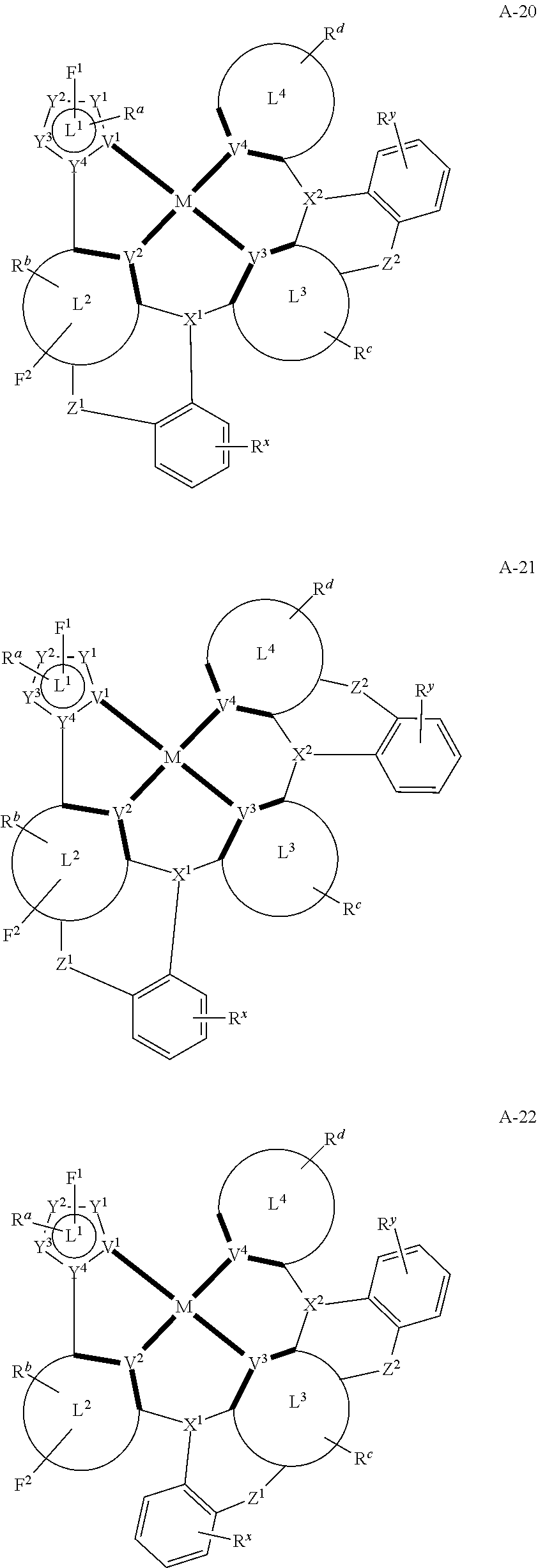
C00015

C00016

C00017

C00018

C00019
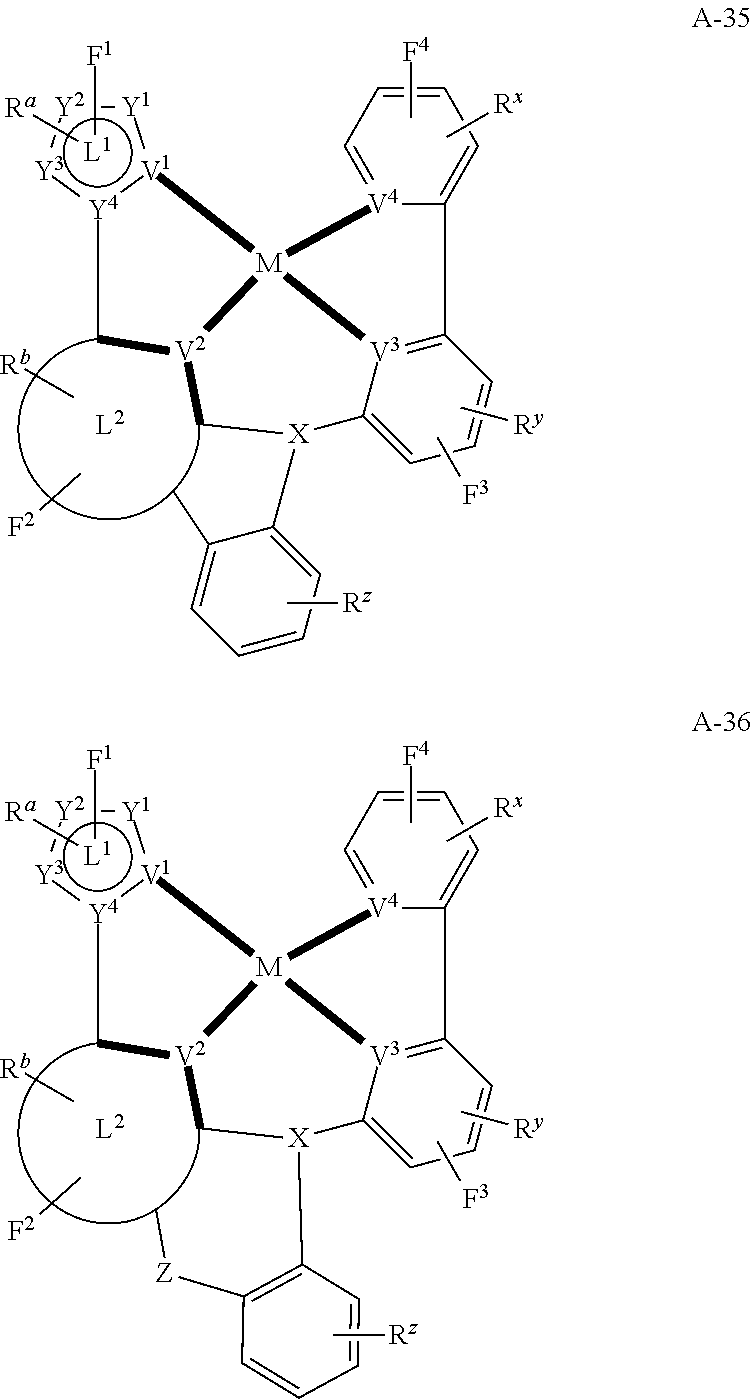
C00020

C00021

C00022

C00023
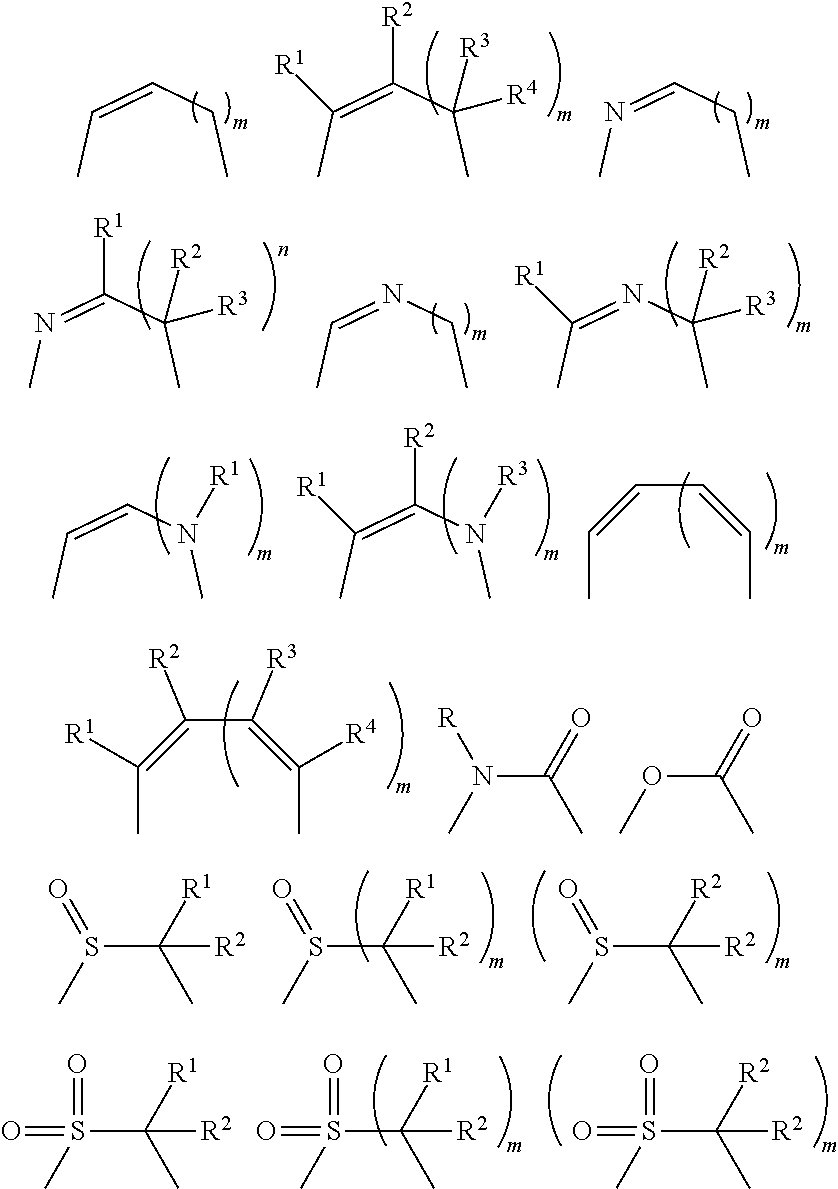
C00024

C00025

C00026

C00027

C00028

C00029

C00030

C00031

C00032

C00033

C00034

C00035
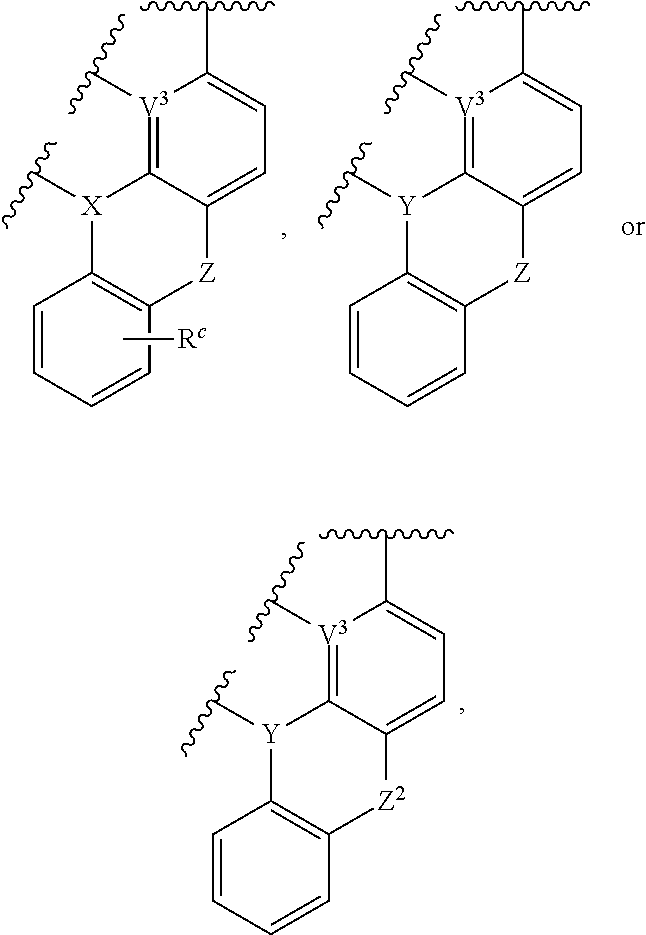
C00036

C00037
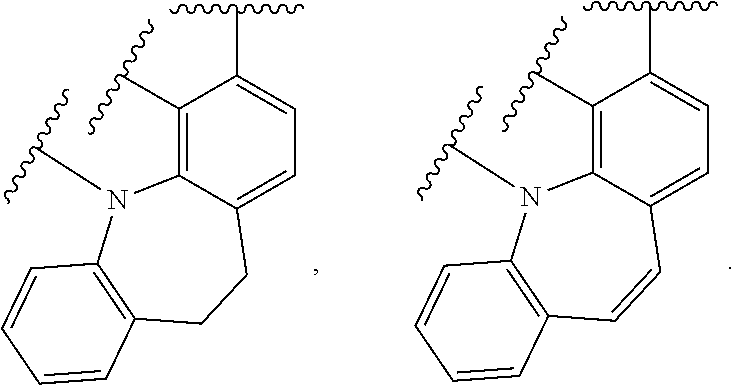
C00038

C00039

C00040

C00041

C00042

C00043

C00044

C00045

C00046

C00047

C00048

C00049

C00050

C00051

C00052

C00053

C00054

C00055

C00056

C00057

C00058

C00059

C00060

C00061
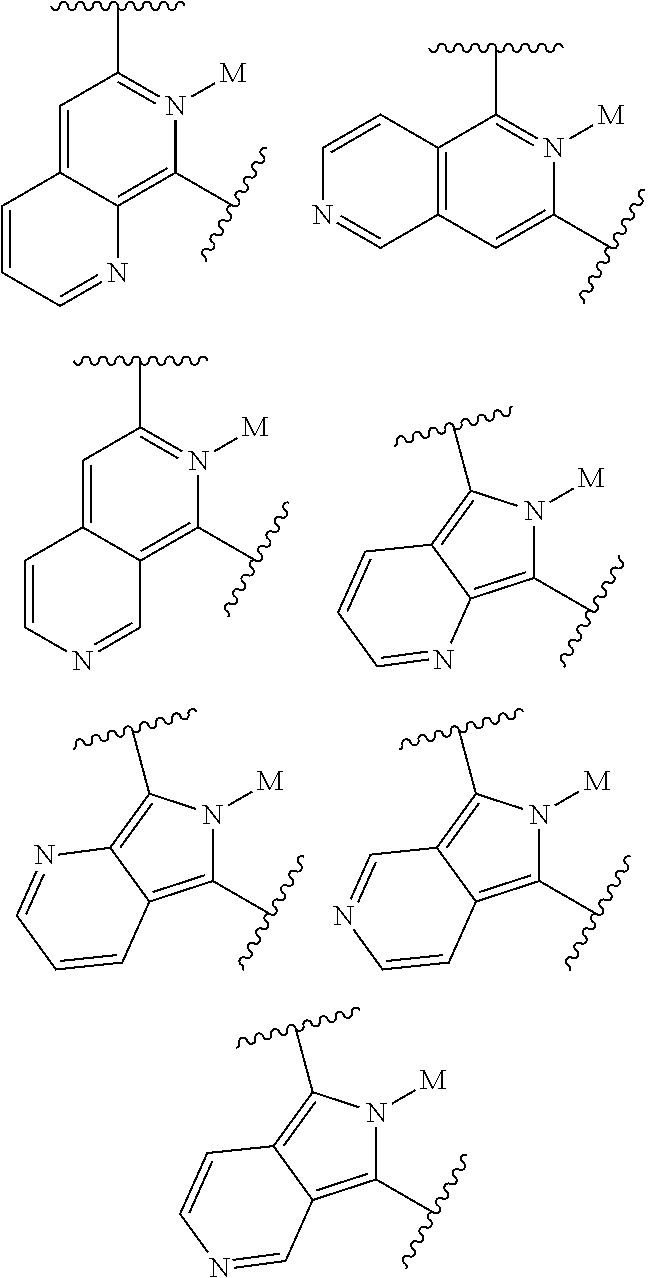
C00062

C00063

C00064

C00065

C00066

C00067

C00068

C00069

C00070

C00071

C00072

C00073

C00074

C00075

C00076

C00077

C00078

C00079

C00080

C00081

C00082

C00083

C00084

C00085

C00086

C00087

C00088

C00089

C00090

C00091

C00092

C00093

C00094

C00095

C00096

C00097

C00098

C00099

C00100

C00101

C00102

C00103

C00104

C00105

C00106

C00107

C00108

C00109

C00110

C00111

C00112

C00113

C00114

C00115

C00116

C00117

C00118

C00119

C00120

C00121

C00122

C00123

C00124

C00125

C00126

C00127

C00128

C00129

C00130

C00131

C00132

C00133

C00134

C00135

C00136

C00137

C00138

C00139

C00140

C00141

C00142

C00143

C00144

C00145

C00146

C00147

C00148

C00149

C00150

C00151

C00152

C00153

C00154

C00155
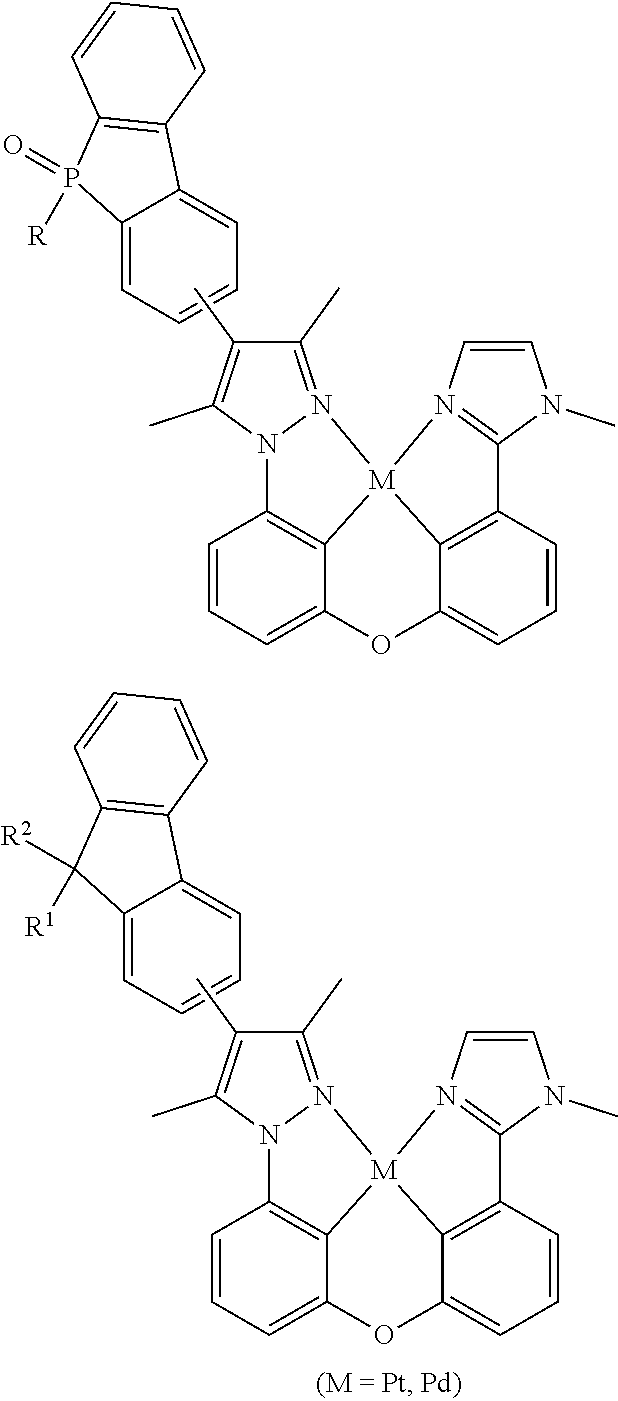
C00156

C00157

C00158

C00159

C00160

C00161

C00162

C00163

C00164

C00165

C00166

C00167

C00168

C00169
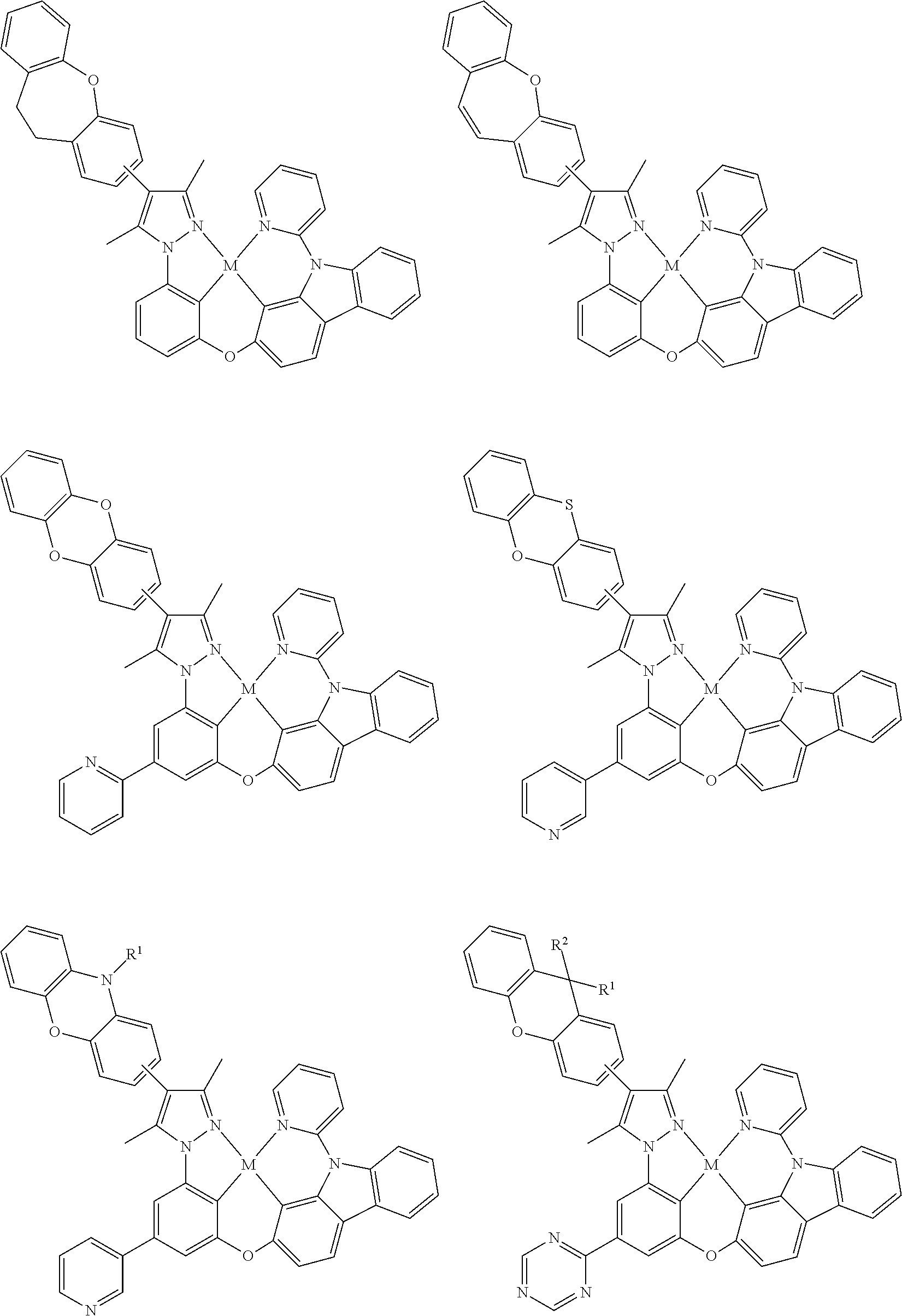
C00170

C00171

C00172

C00173

C00174

C00175

C00176

C00177
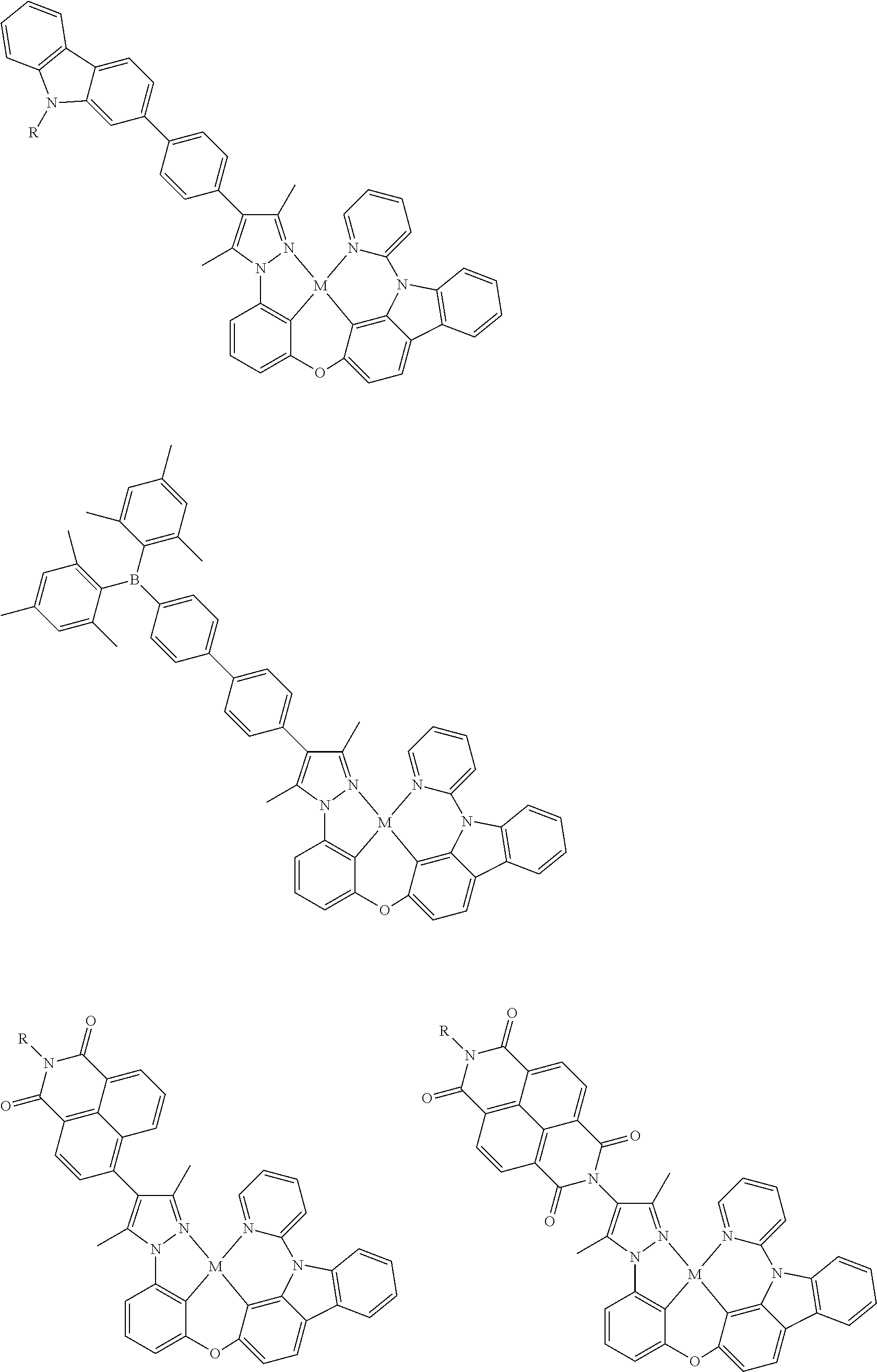
C00178

C00179

C00180

C00181
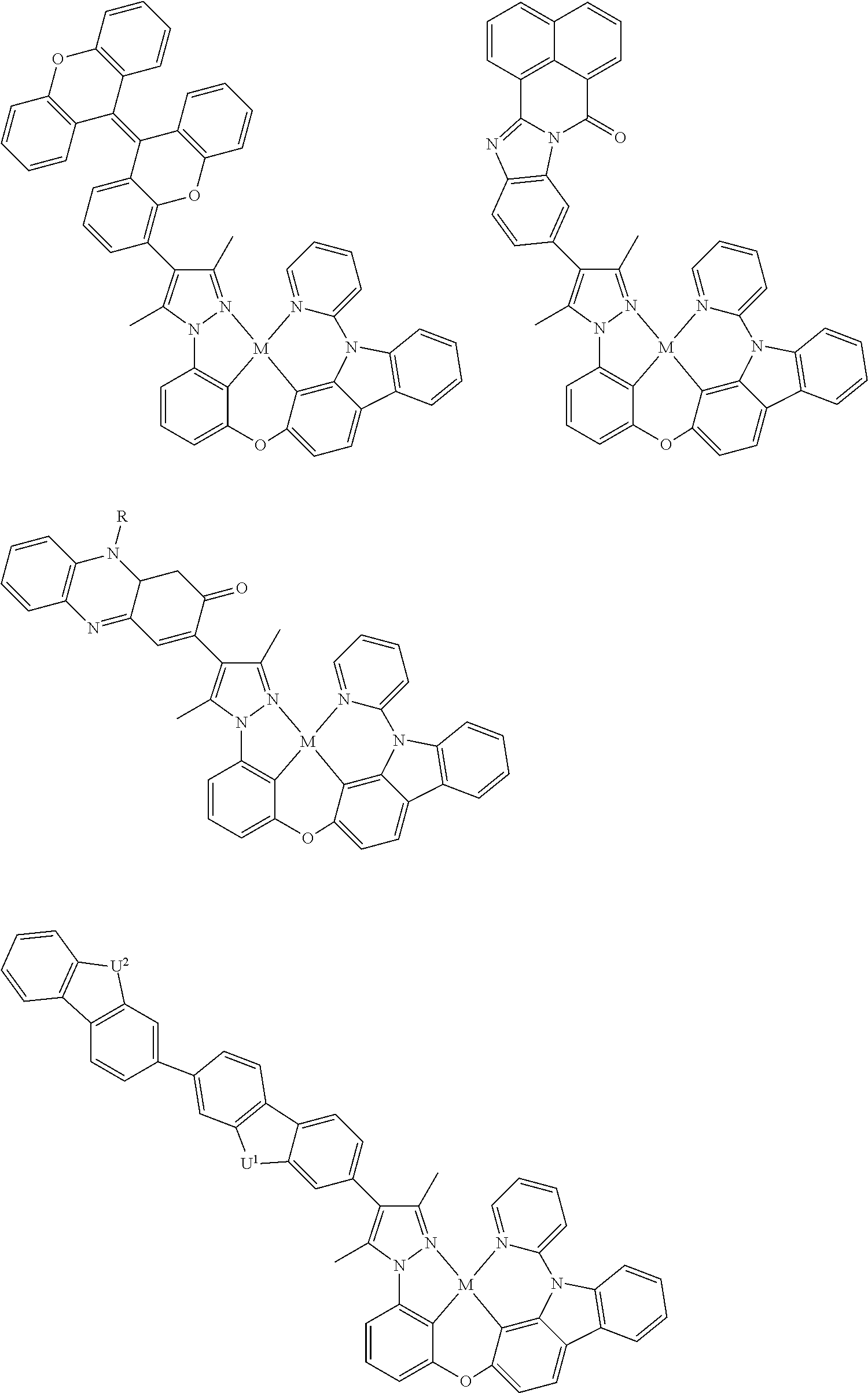
C00182

C00183

C00184

C00185

C00186

C00187

C00188

C00189

C00190

C00191

C00192

C00193

C00194

C00195

C00196

C00197

C00198
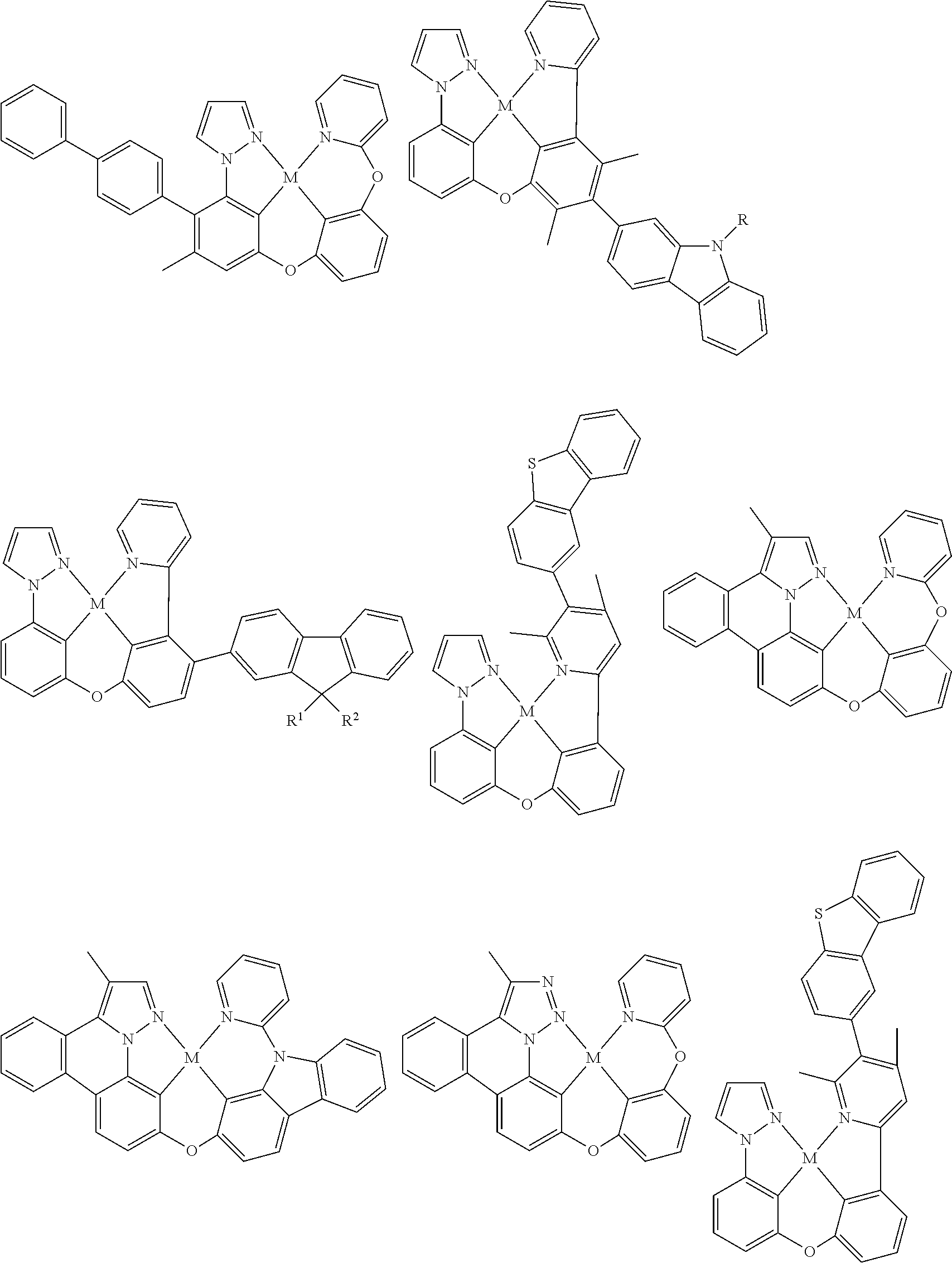
C00199

C00200

C00201

C00202

C00203

C00204

C00205
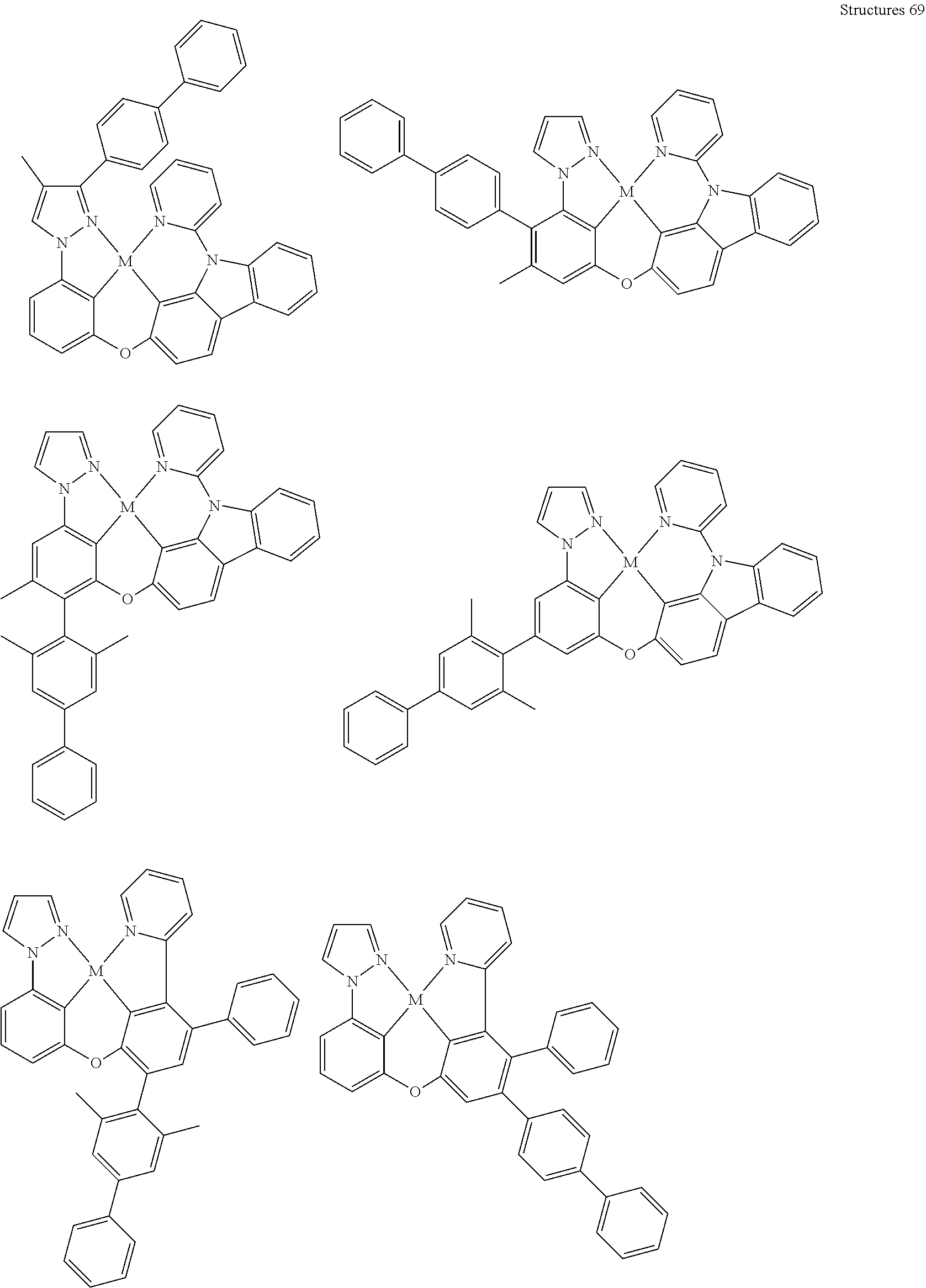
C00206

C00207

C00208

C00209

C00210

C00211
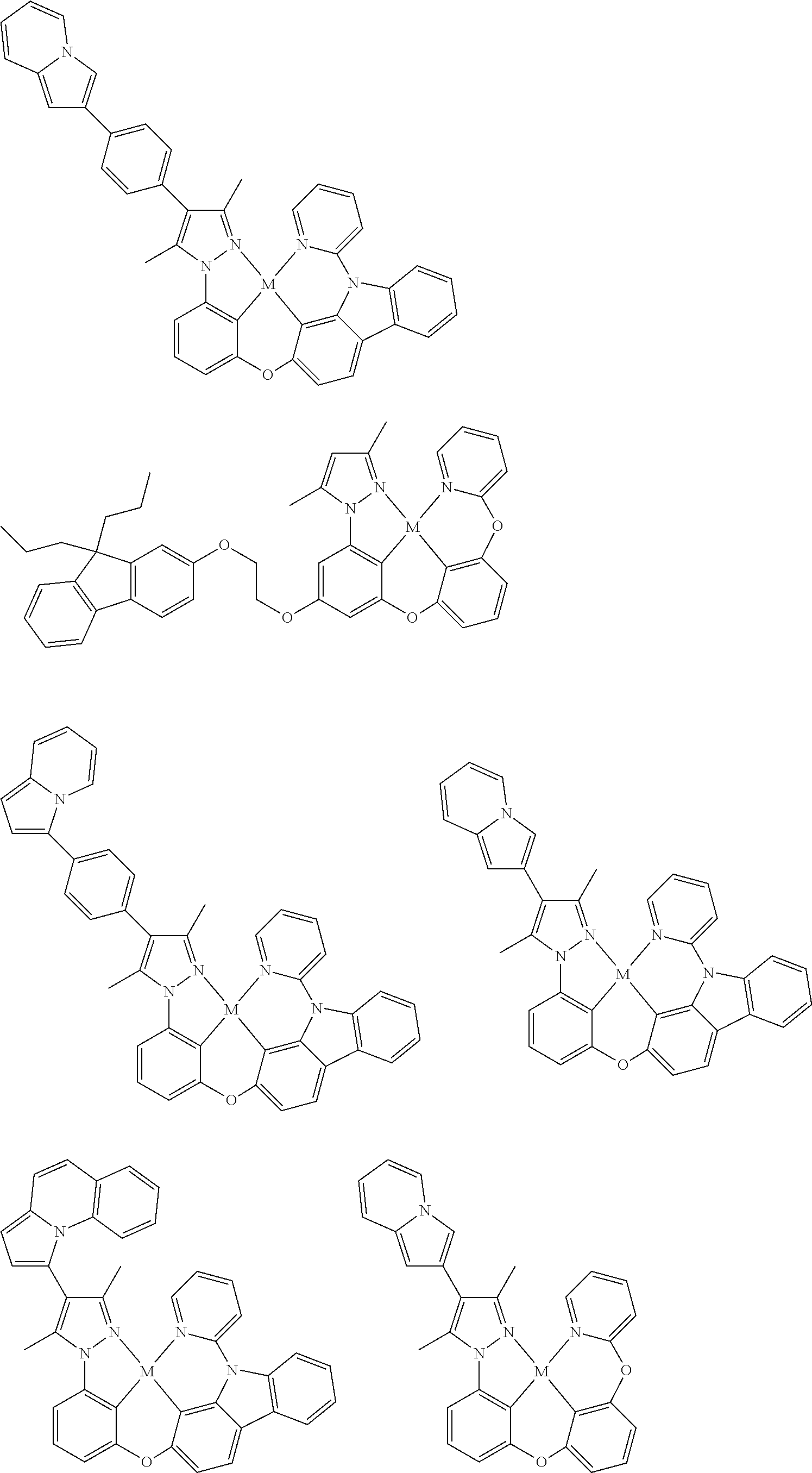
C00212

C00213

C00214

C00215

C00216

C00217

C00218

C00219

C00220

C00221

C00222

C00223

C00224

C00225

C00226

C00227

C00228

C00229

C00230

C00231

C00232

C00233

C00234

C00235

C00236

C00237

C00238

C00239

C00240

C00241

C00242

C00243

C00244

C00245

C00246

C00247

C00248

C00249

C00250

C00251

C00252

C00253

C00254

C00255

C00256

C00257

C00258

C00259

C00260

C00261

C00262

C00263

C00264

C00265

C00266

C00267

C00268

C00269

C00270

C00271

C00272

C00273

C00274

C00275

C00276

C00277

C00278

C00279

C00280

C00281

C00282

C00283

C00284

C00285

C00286

C00287

C00288

C00289

C00290

C00291

C00292

C00293

C00294

C00295
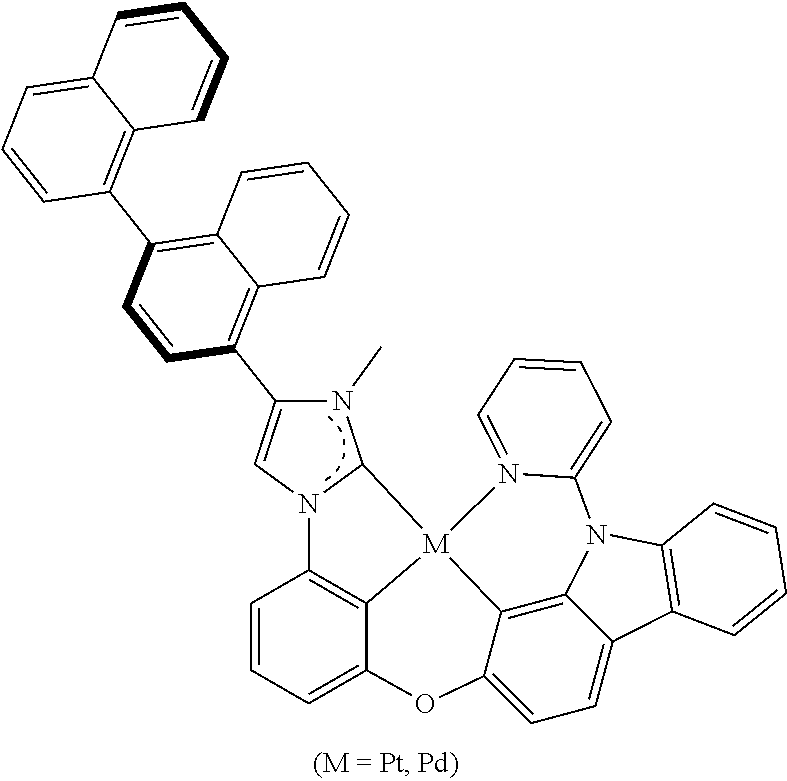
C00296

C00297

C00298

C00299

C00300

C00301

C00302

C00303

C00304

C00305

C00306

C00307

C00308

C00309

C00310

C00311

C00312

C00313

C00314

C00315

C00316

C00317

C00318

C00319

C00320

C00321

C00322

C00323

C00324

C00325

C00326

C00327

C00328

C00329

C00330
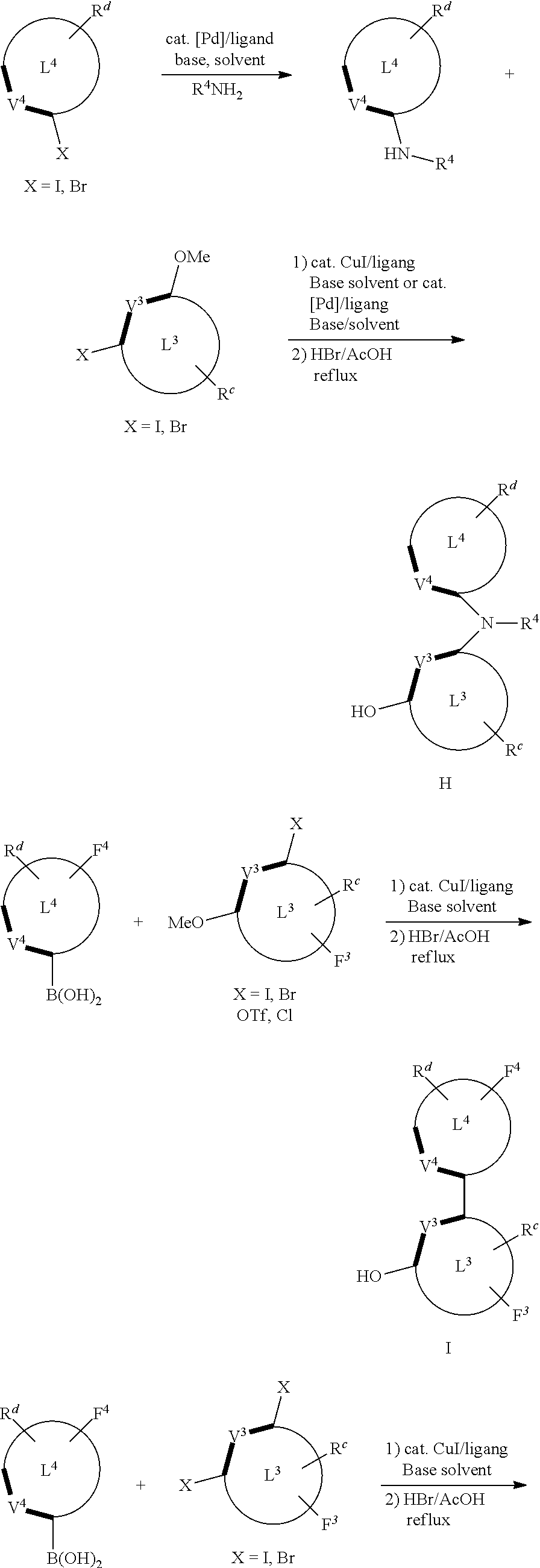
C00331

C00332

C00333

C00334

C00335

C00336

C00337

C00338
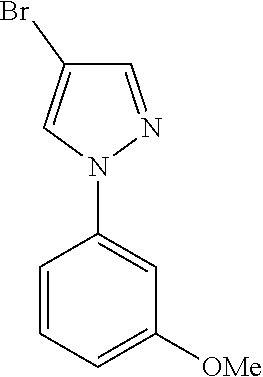
C00339

C00340

C00341
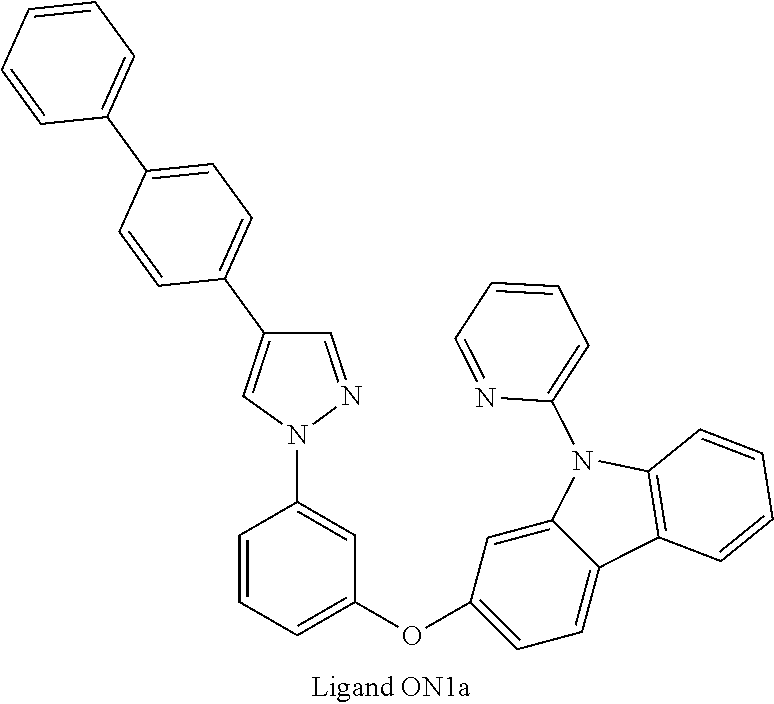
C00342
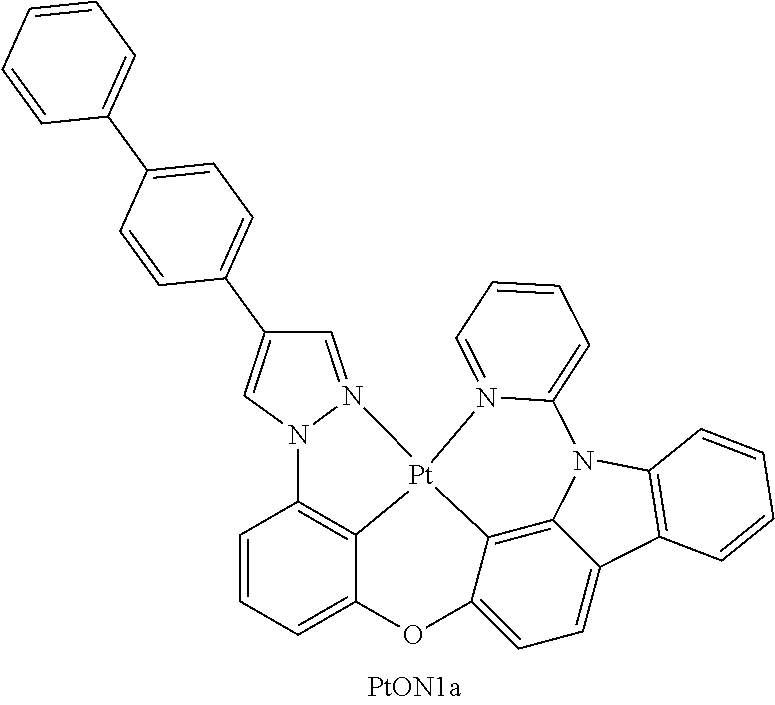
C00343
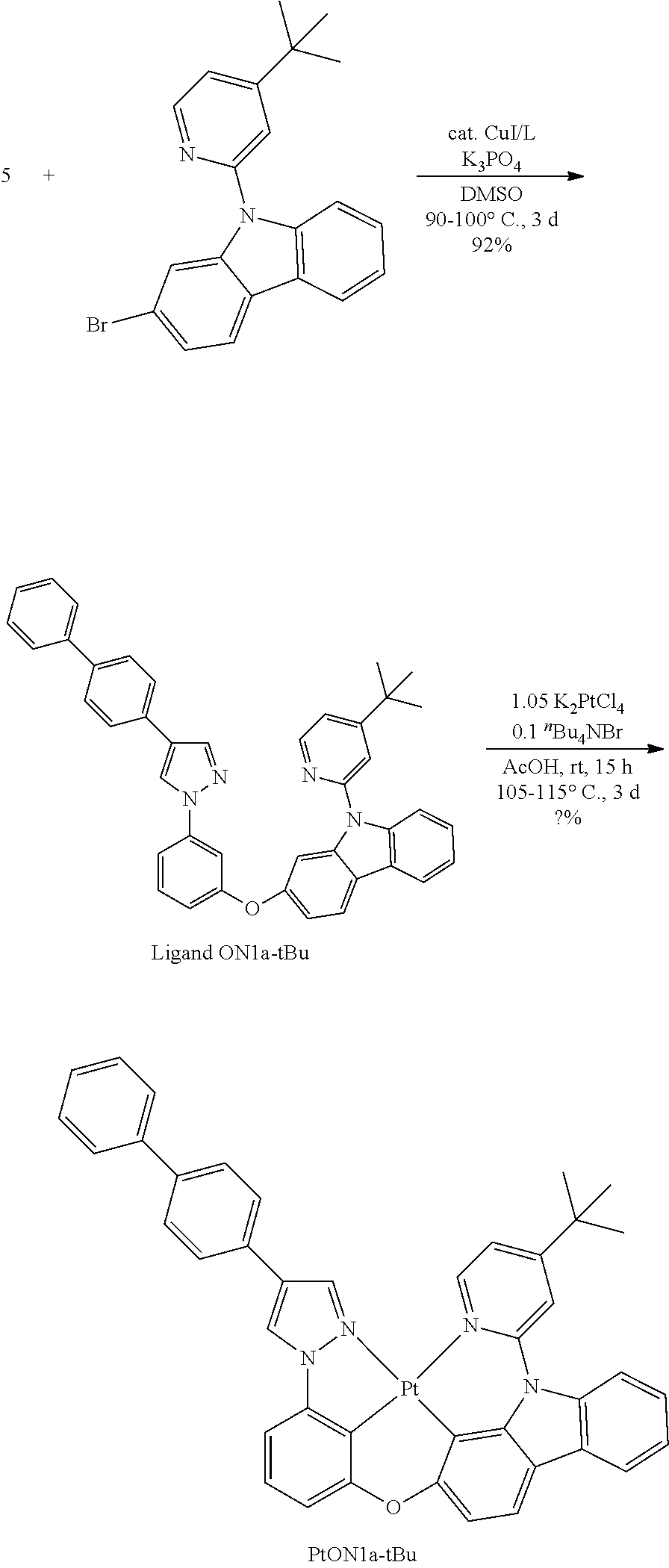
C00344

C00345

C00346

C00347

C00348
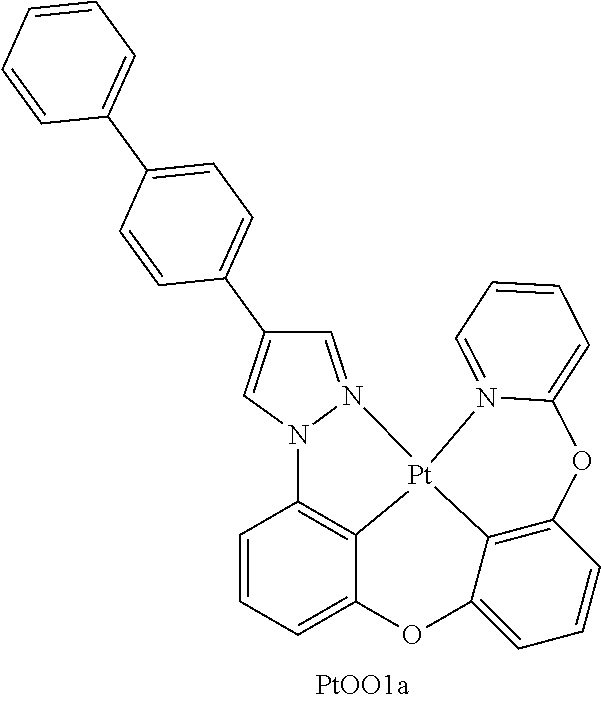
C00349

C00350

C00351

C00352

C00353

C00354

C00355

C00356

C00357

C00358

C00359

C00360

C00361

C00362

C00363

C00364
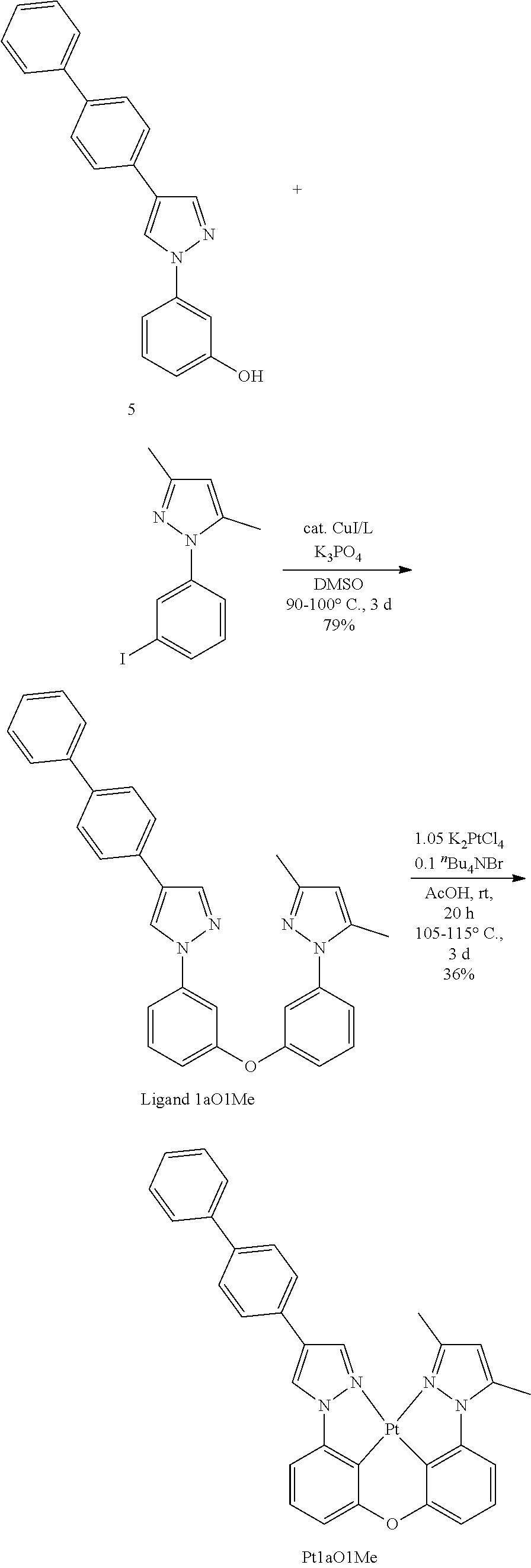
C00365

C00366

C00367

C00368

C00369

C00370
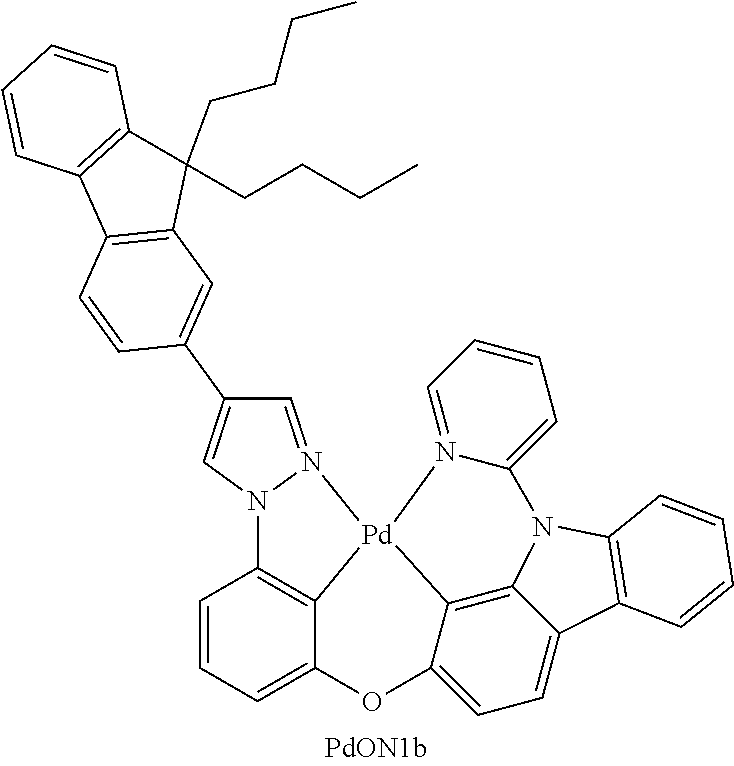
C00371

C00372

C00373

C00374

C00375

C00376

C00377

C00378

C00379
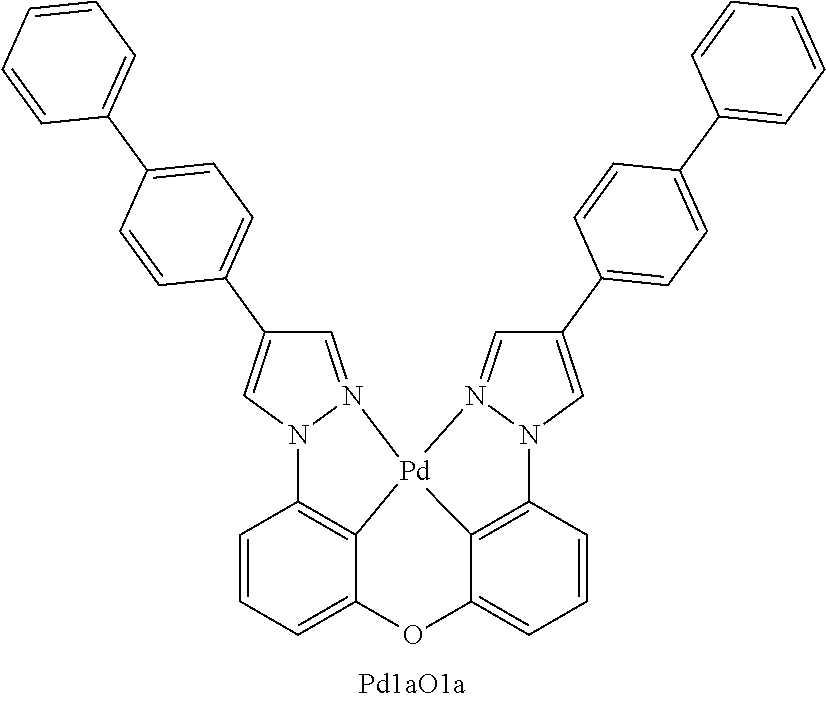
C00380

C00381
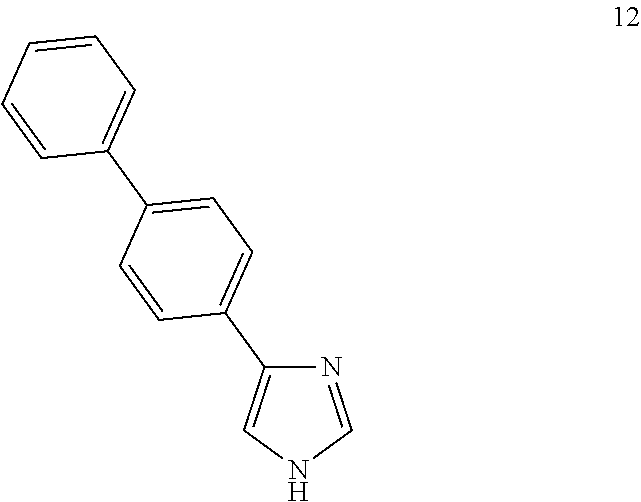
C00382

C00383

C00384

C00385

C00386
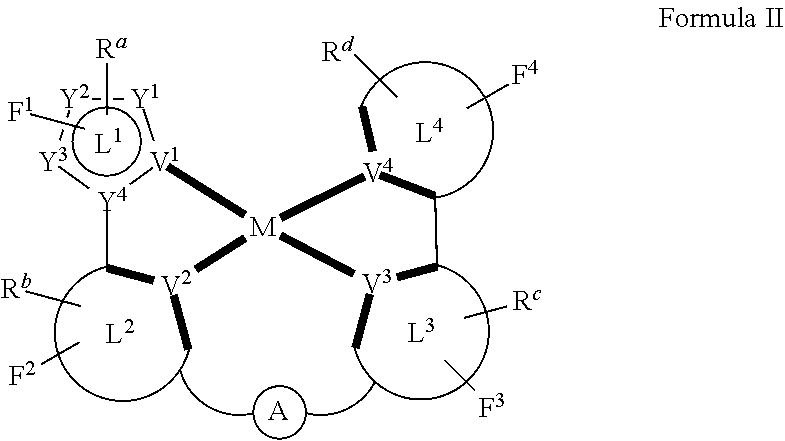
C00387

C00388

C00389

C00390

C00391

C00392

C00393

C00394

C00395

C00396

C00397

C00398

C00399

C00400

C00401

C00402

C00403

C00404

C00405

C00406

C00407

C00408

C00409

C00410

C00411

C00412

C00413

C00414

C00415

C00416

C00417

C00418

C00419

C00420

C00421

C00422

C00423

C00424

C00425

C00426
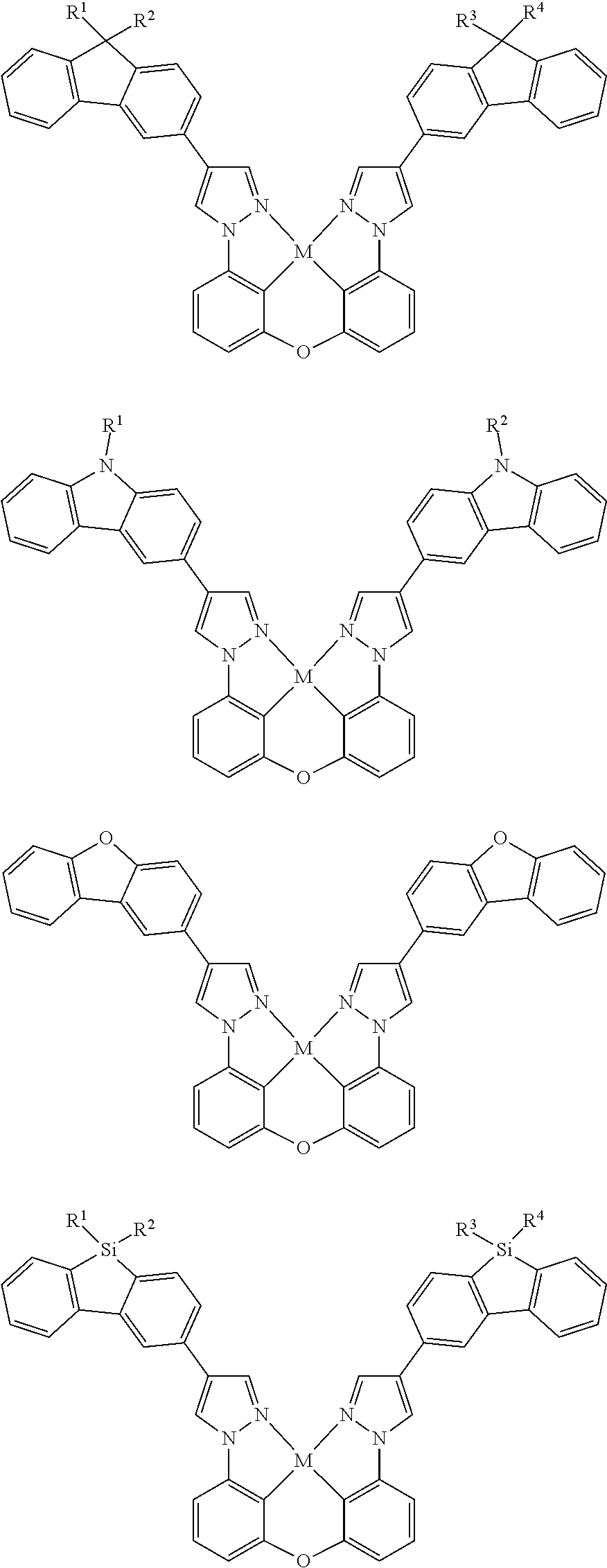
C00427

C00428

C00429

C00430

C00431

C00432

C00433

C00434

C00435

C00436

C00437

C00438

C00439

C00440

C00441

C00442

C00443

C00444

C00445

C00446

C00447

C00448

C00449

C00450
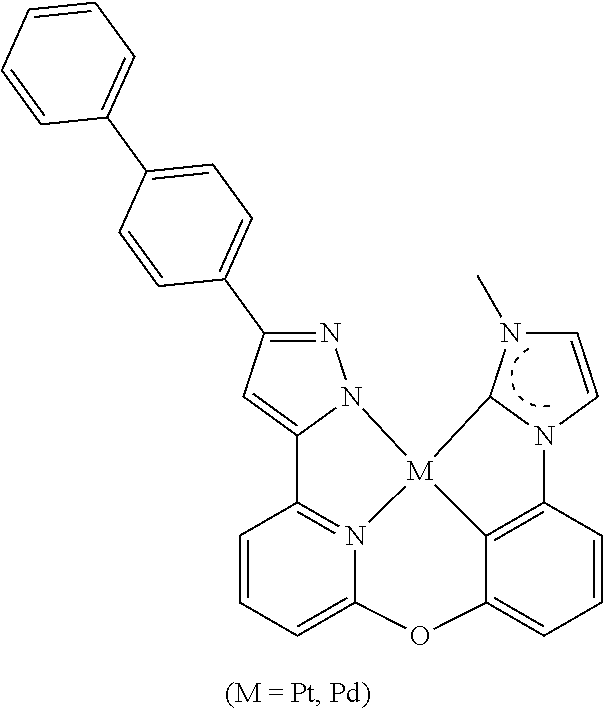
C00451

C00452

C00453

C00454

C00455

C00456

C00457

C00458

C00459

C00460

C00461

C00462

C00463

C00464

C00465

C00466

C00467

C00468

C00469

C00470

C00471

C00472

C00473

C00474
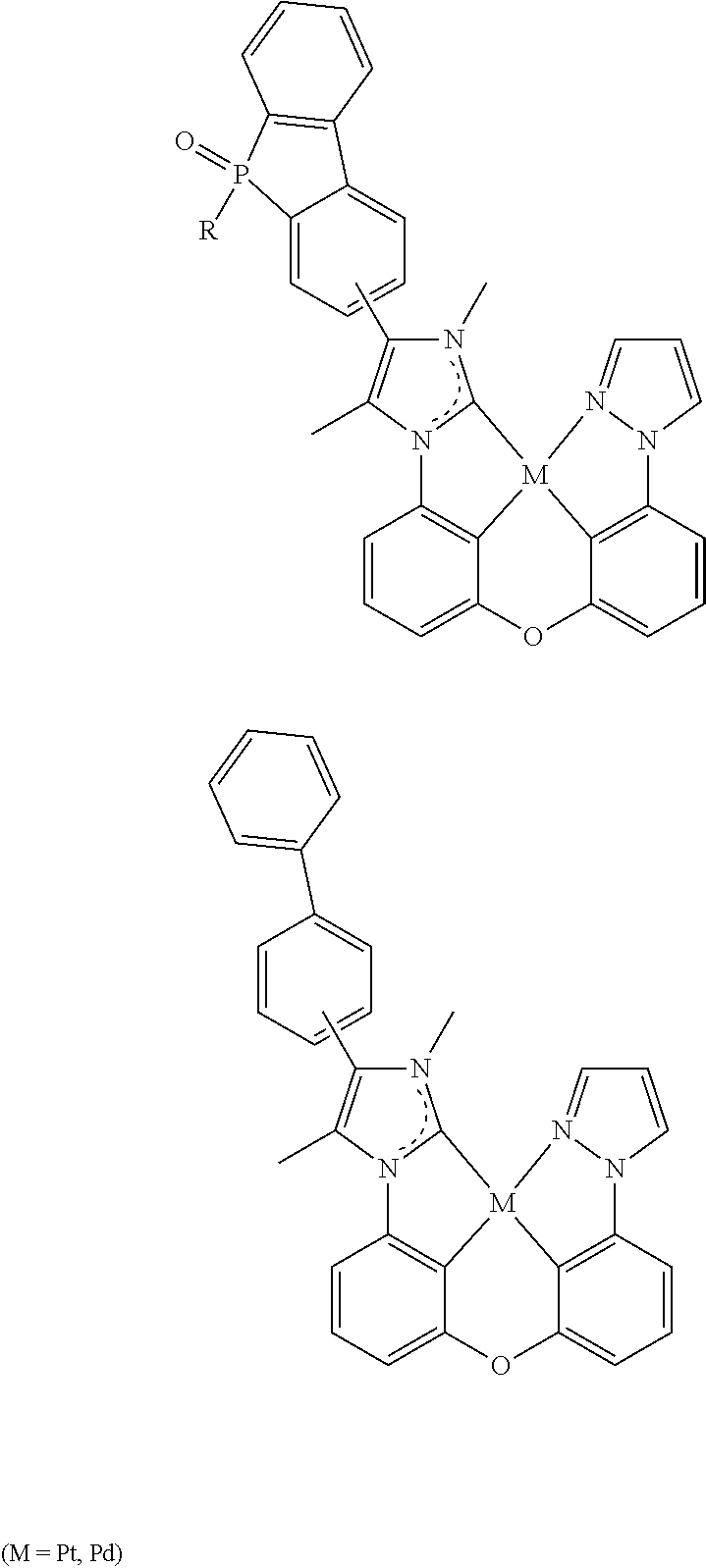
C00475

C00476

C00477

C00478

C00479

C00480

C00481

C00482
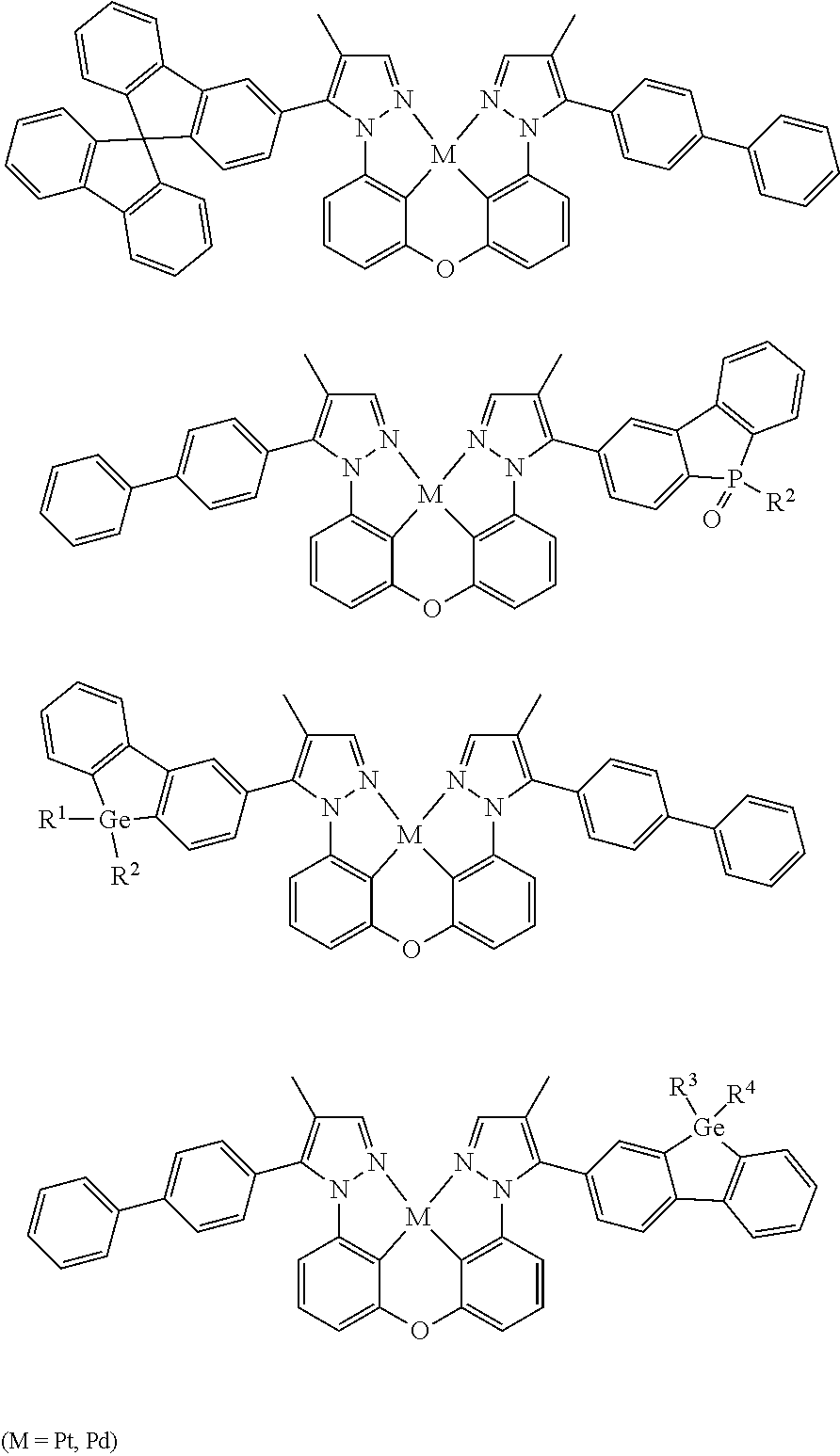
C00483

C00484

C00485

C00486

C00487

C00488
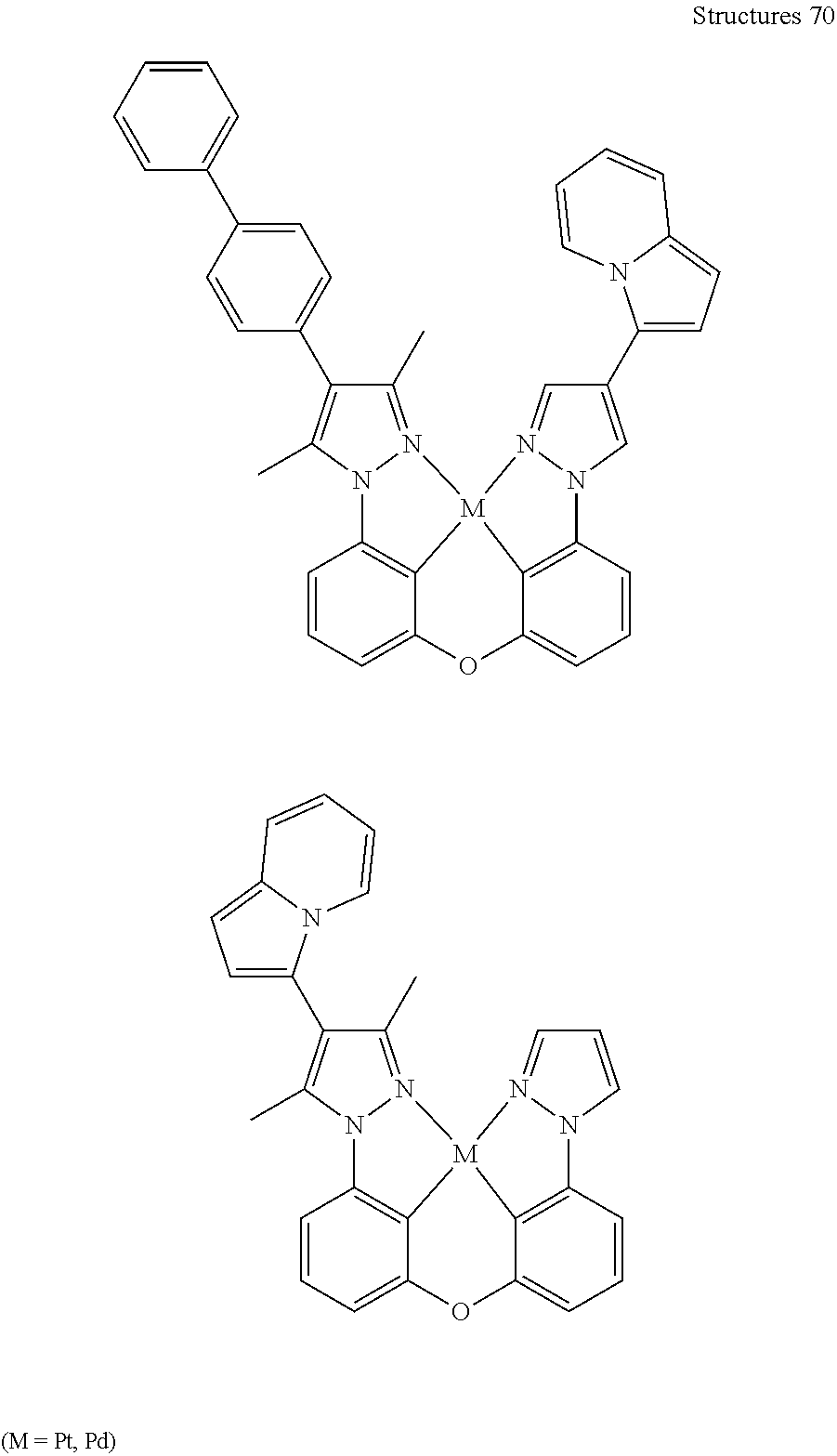
D00001
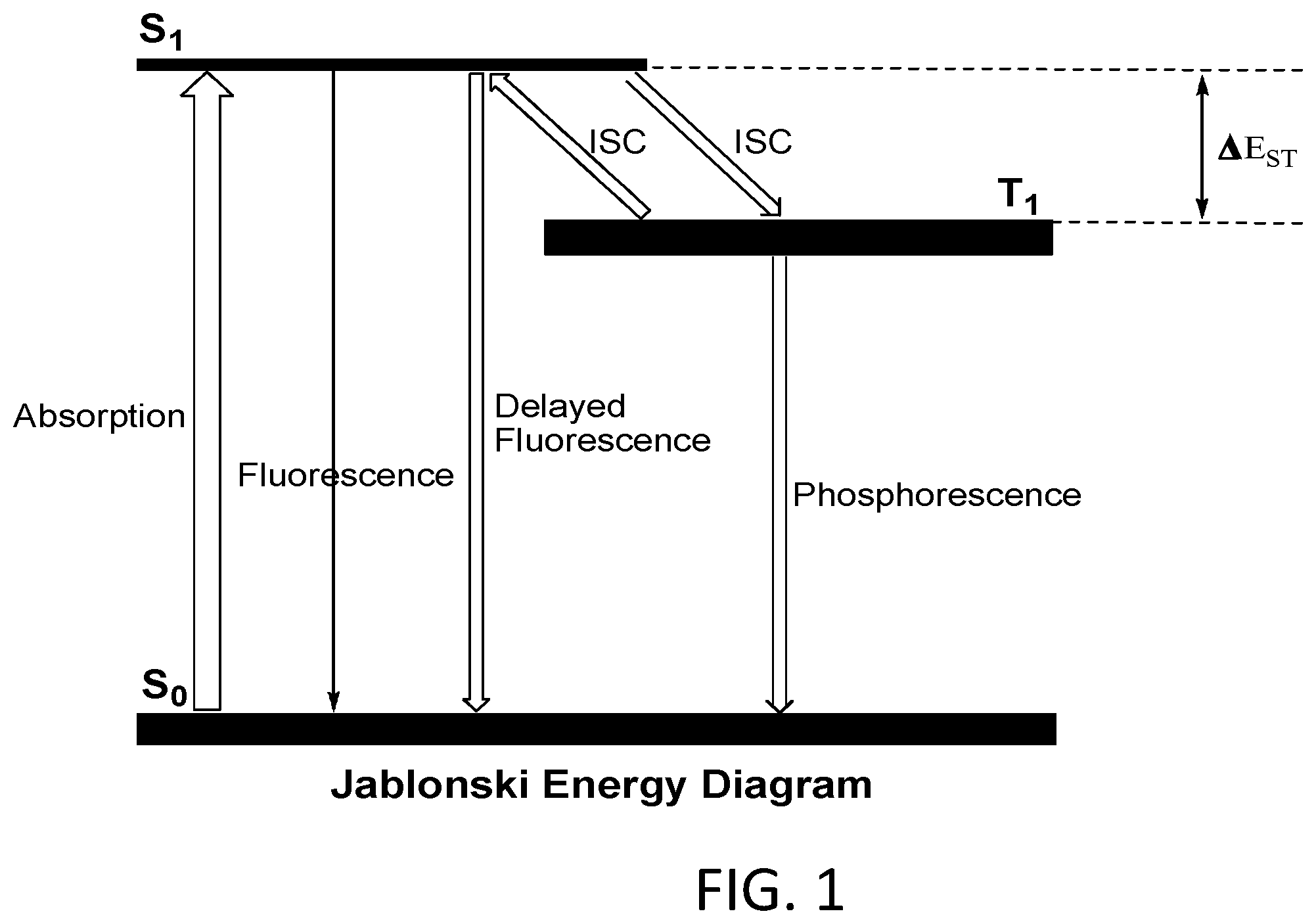
D00002

D00003

D00004
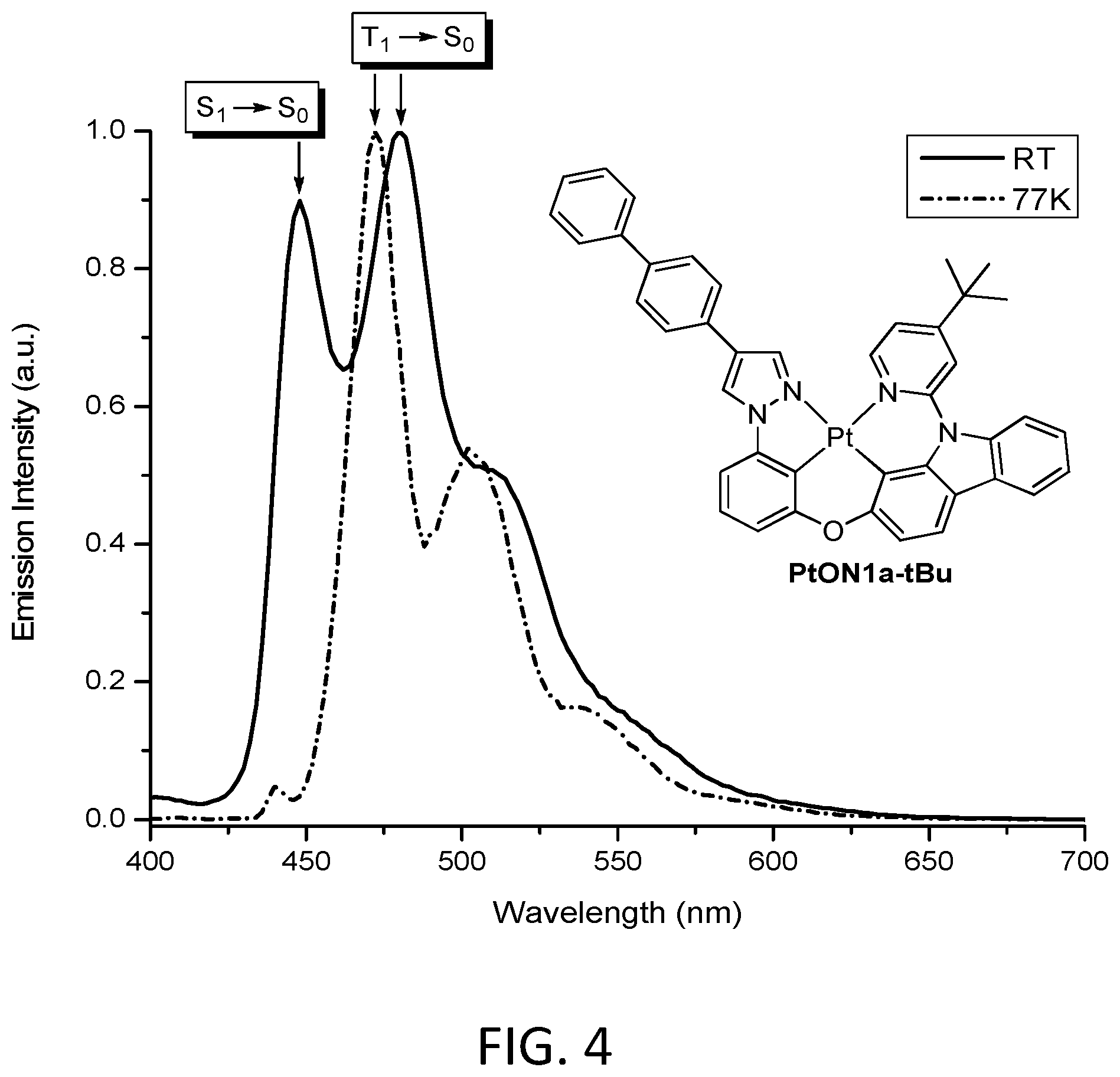
D00005

D00006

D00007

D00008

D00009

D00010

D00011

D00012

D00013

D00014

D00015

XML
uspto.report is an independent third-party trademark research tool that is not affiliated, endorsed, or sponsored by the United States Patent and Trademark Office (USPTO) or any other governmental organization. The information provided by uspto.report is based on publicly available data at the time of writing and is intended for informational purposes only.
While we strive to provide accurate and up-to-date information, we do not guarantee the accuracy, completeness, reliability, or suitability of the information displayed on this site. The use of this site is at your own risk. Any reliance you place on such information is therefore strictly at your own risk.
All official trademark data, including owner information, should be verified by visiting the official USPTO website at www.uspto.gov. This site is not intended to replace professional legal advice and should not be used as a substitute for consulting with a legal professional who is knowledgeable about trademark law.